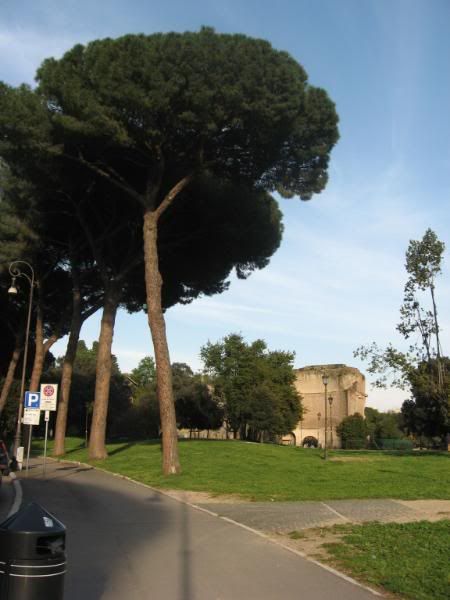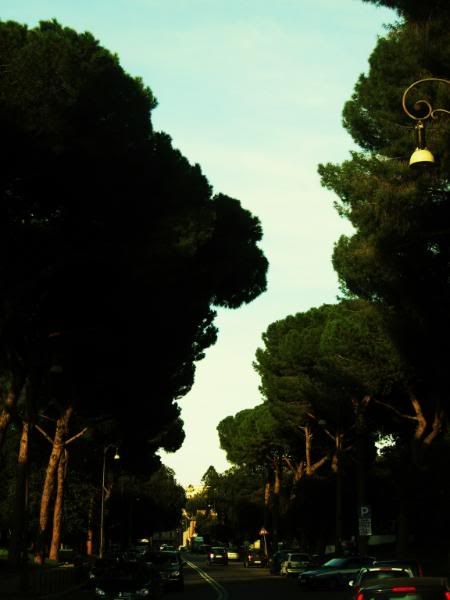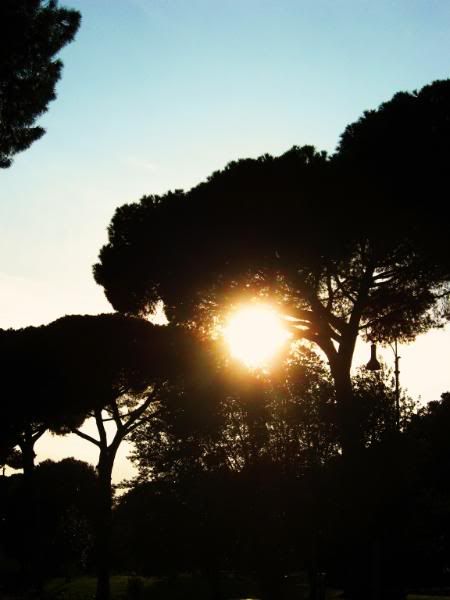My awareness of the Italian peninsula was constant throughout my life. I knew the significance of Rome in relation to the ancient empire and the later history – I knew about Michaelangelo and his lasting creations in Florence and Rome, also those of Botticelli and Leonardo – I knew about Pompeii and Vesuvius – I was a child when I held a piece of volcanic rock brought back from Vesuvius by my Grandfather a number of decades earlier. Despite all of this, and another compound myriad, Italy always seemed like a world I would never experience. But before long, the prospect of traveling through Italy came up, and I followed through with everything. The world I discovered on this peninsula has initiated many on going occurrences, and an end is not in sight. What I found most fascinating about this world, is that so much can endure the harshest elements of a very geologically active peninsula. Traveling back through time is a seemingly effortless phenomenon, though there never was a choice. These three great cities, Venice, Florence and Rome are all so beautiful, so vibrant and intense in their elements, experiencing each one is like falling into a bottomless pit that never darkens, where the stars gaze upward. These are places for pilgrims, regardless of the papal presence. I myself, became one, and found more than I imagined. In this lovely braid exist the Gods who have wielded man throughout the millennia, and have never left. I will be part of this vast peninsula forever indeed.
Venice – Venezia Venice is a city like none other in Europe, the first I've encountered with no roads for wheels, only canals and boats. It is Italian, yet entirely different from the rest of Italy, nearly a unique country of its own, and such the Venetian desire. It is an island that sits on the northern point of the Adriatic sea, is made up of over 100 small islands, and bears a striking clash between dark medieval Italy, and the Renaissance. So abrupt and haunting was this clash, it felt like Abraxas constantly rose out of the canals and soared through the wild oceanic winds. Absorbing the nature of this city is not easy, and I even felt I had to activate a number of hidden chakras in order to digest everything as I wandered about. I entered a wine bar one evening to find an etching of Abraxas staring me in the face, an etching on a wine bottle. Apparently some southern Italians brew a sweet wine called Abraxas, and on the label is Abraxas in traditional form. Perhaps these Italians believe the spirit does not break out of an eggshell but rather flies out of the bottle in order to reach Abraxas.
I was attracted to Venice for a number of reasons, but more importantly because artists of the highest caliber have flocked to Venice throughout the ages. These include composers like Vivaldi, Stravinsky, Wagner, and writers like Lord Byron, Friedrich Nietzsche and Ezra Pound. I had particular interest in the Venice the remarkable Ezra Pound loved. After he was arrested for his wartime broadcasts in Rome, he was incarcerated in St. Elizabeth's mental hospital for 13 years, where he continued to write. He neither lamented nor apologized for anything he said or did, even after he was released – a warrior was he. He spent his last days in Venice, a place he truly loved. By chance, after only two hours in Venice, in a bookstore full of cats and halfway sunk in a canal, I found a guide titled
In Venice and in the Veneto with Ezra Pound which led me to his old neighborhood, his resting place, and to many poems, some of which are placed throughout this work. Finding his poetry manifest in reality was like finding hidden knowledge concealed behind the common reality that is the modern world, but I came nowhere close to breaking his code written in his
Cantos. Still, I felt the presence of the warrior, most profoundly in his old neighborhood. This experience was an inspiring beginning to something that will never see an end.


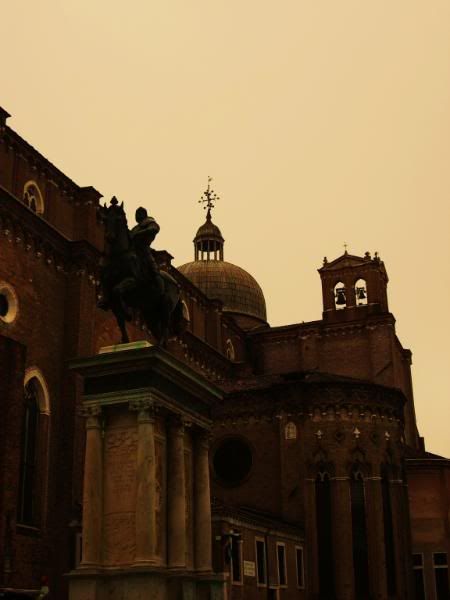 Night Litany
Night LitanyO Dieu, purifez nos coeurs!
purifez nos coeurs!
Yea the lines hast thou laid unto me
in pleasant places,
And the beauty of this thy Venice
hast thou shewn unto me
Until is its loveliness become unto me
a thing of tears.
O God, what great kindness
have we done in times past
and forgotten it,
That thou givest this wonder unto us,
O God of waters?
O God of the night
What great sorrow
Cometh unto us,
That thou thus repayest us
Before the time of its coming?
O God of silence,
Purifiez nos coeurs
Purifiez nos coeurs
For we have seen
The glory of the shadow of the
likeness of thine handmaid,
Yea, the glory of the shadow
of thy Beauty hath walked
Upon the shadow of the waters
In this thy Venice.
And before the holiness
Of the shadow of thy handmaid
Have I hidden mine eyes,
O God of waters.
O God of silence,
Purifiez nos coeurs,
Purifiez nos coeurs,
O God of waters,
make clean our hearts within us
And our lips to show forth thy praise,
For I have seen the
shadow of this thy Venice
floating upon the waters,
And thy stars
have seen this thing out of their far courses
have they seen this thing,
O God of waters.
Even as are thy stars
Silent unto us in their far-coursing,
Even so is mine heart
become silent within me.
Purifiez nos coeurs
O God of the silence,
Purifiez nos coeurs
O God of waters.
Ezra Pound,
Personæ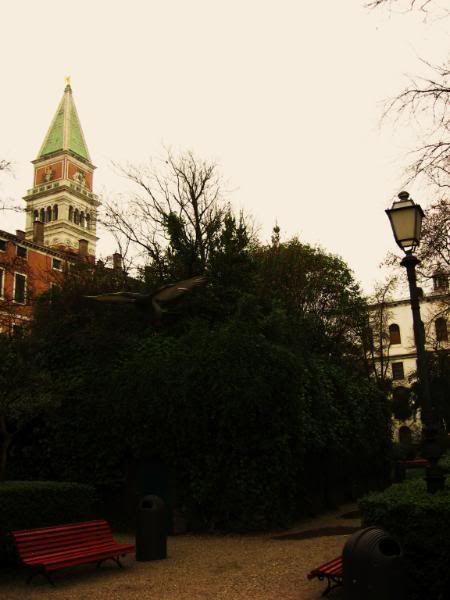
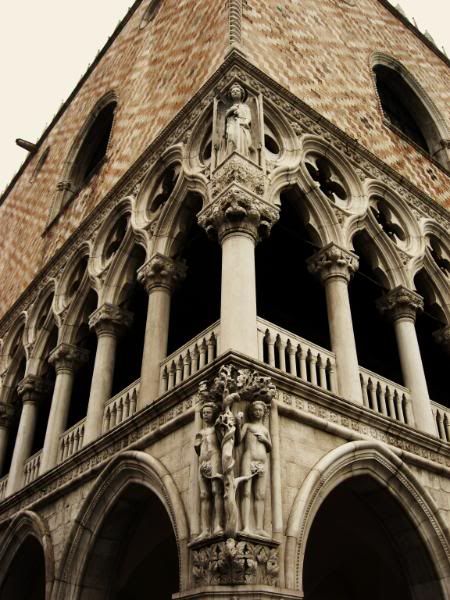
 San Marco
San Marco There are only a few cathedrals in Europe that will knock one to the ground with their magnificent beauty, and the Byzantine fashioned cathedral on San Marco Square is definitely one of them. I studied the tale telling mosaics and stone symbols on the outside for a while – when I entered, it was impossible to take my eyes off the mosaic ceiling.
Canto 97& from the nature the sign,
as the small lions beside San Marco, Out of ling
the benevolence.
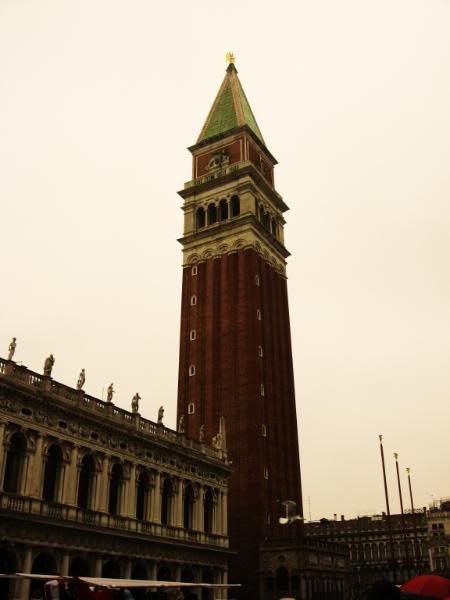
 Canto 21
Canto 21And the Palazzo, baseless, hangs there in the dawn
With low mist over the tide mark;
And floats there nel tramonto
With gold mist over the tide-mark.
 Canto 25
Canto 25 the said lioness as is the nature of animals
whelped per naturam three lion cubs vivos et pilosos
living and hairy which born at once began life and motion
and to go gyring about their mother throughout the
aforesaid room as saw the aforesaid Lord Doge and as it
were all the Venetians and other folk who were in
Venice that day that concurred all for this as it were
miraculous sight …

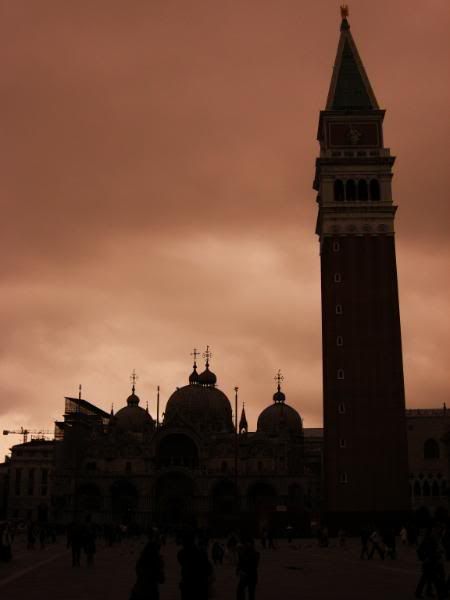
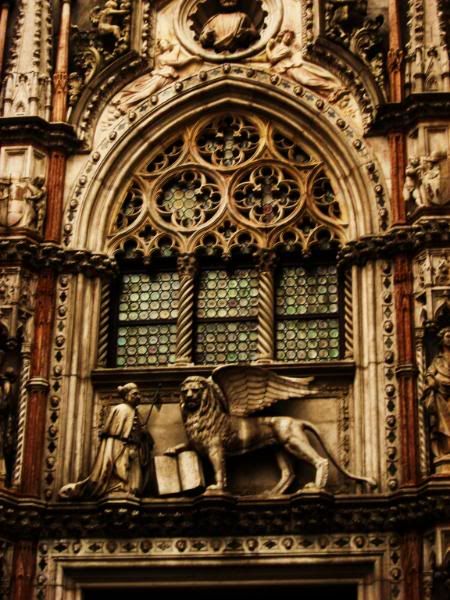
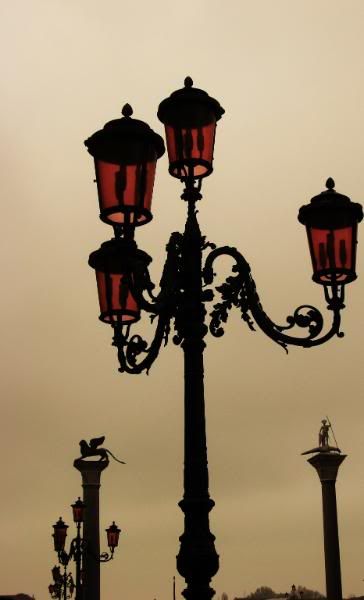

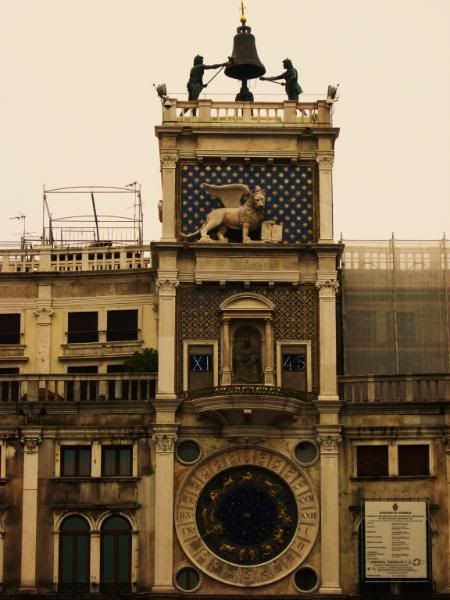

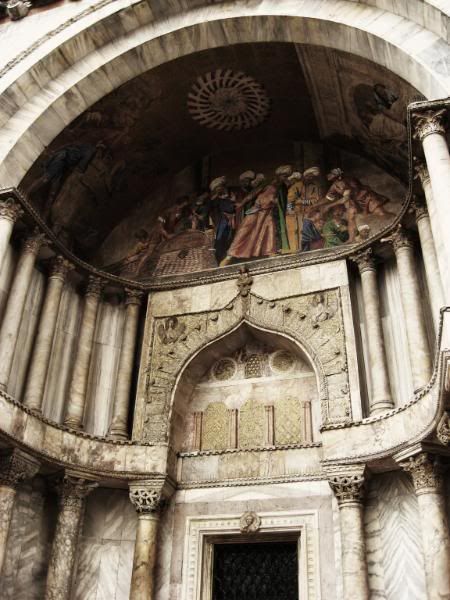
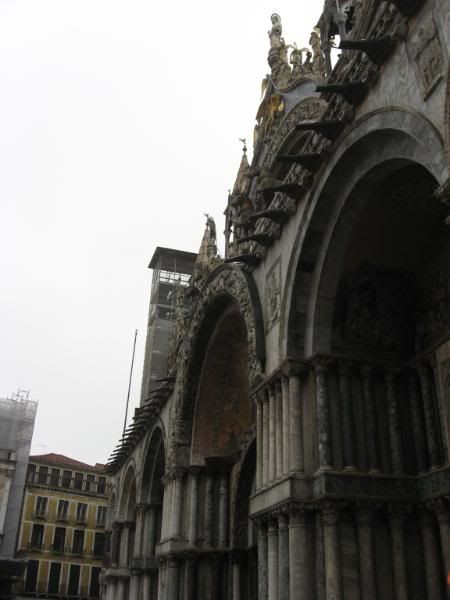
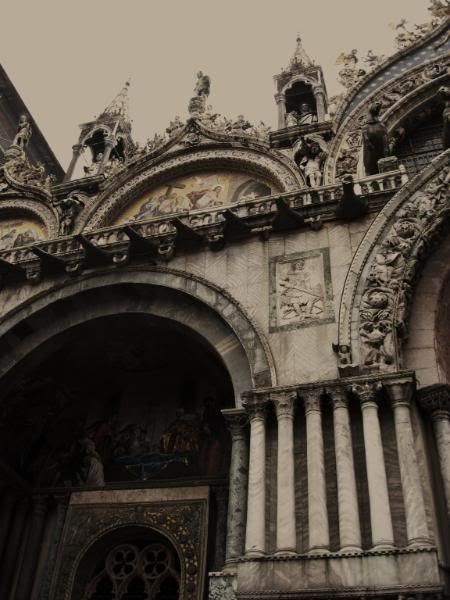
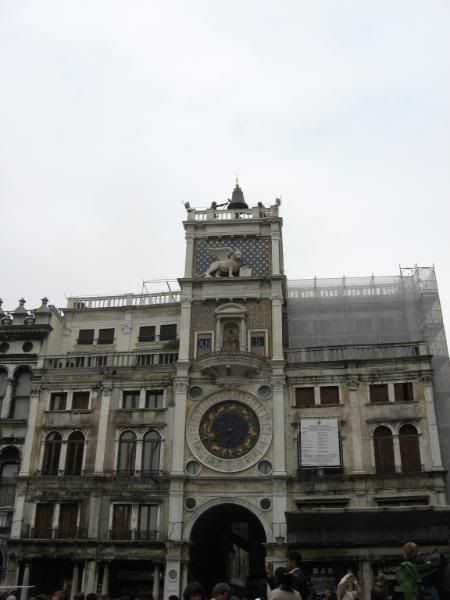
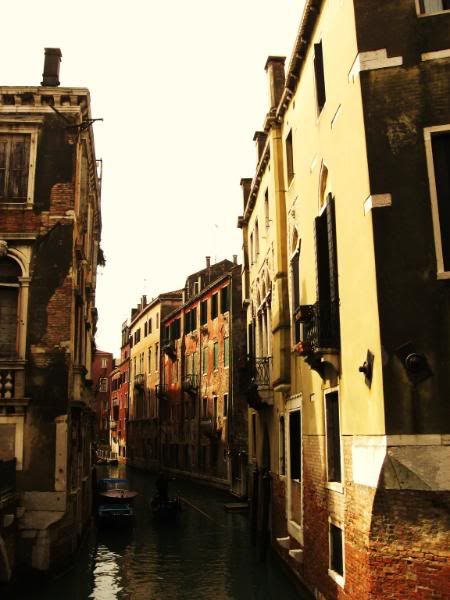
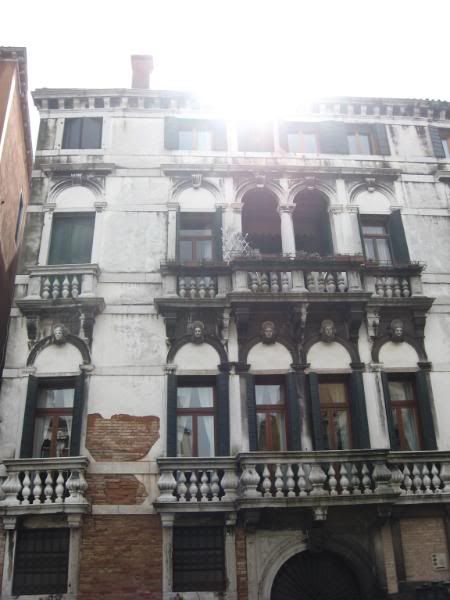
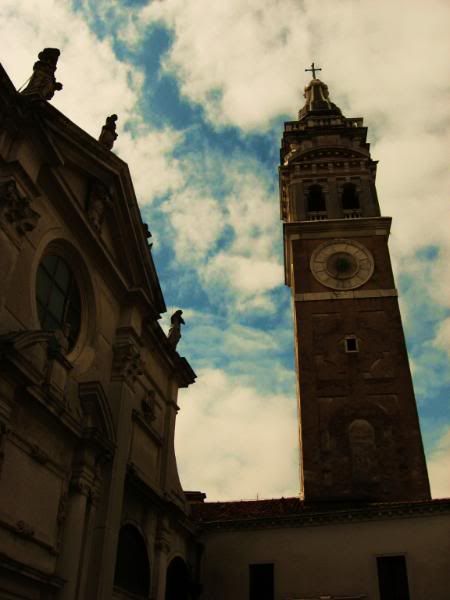
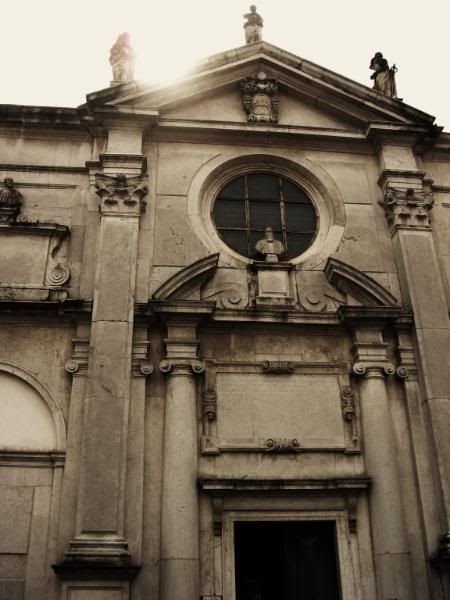
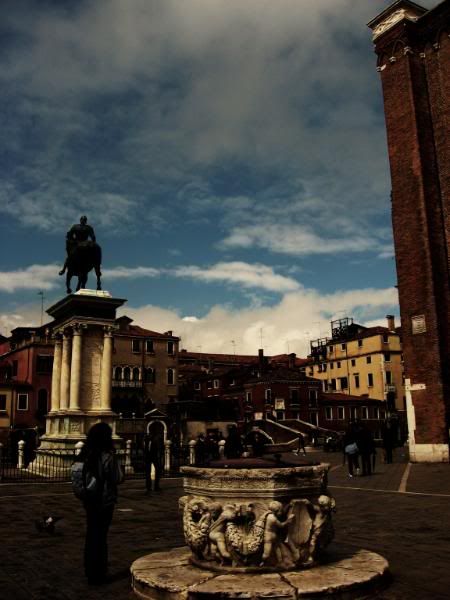
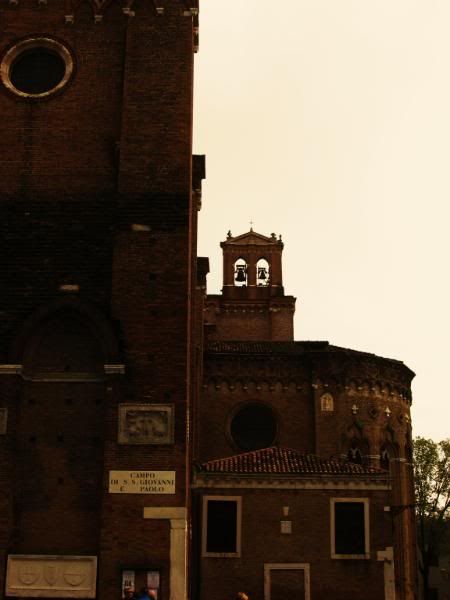 In this neighborhood lived Antonio Vivaldi for eight years
In this neighborhood lived Antonio Vivaldi for eight years
Canti postumi, 106in which time Vivaldi was given or said to
to vertigo
which prevented his saying mass
which made him an impresario
composer with ballerine, or with a ballerina,
with troubles about rehearsals, as has happened,
with fuss over contracts, as haps and happened,
touring with a theatrical company, il prete rosso
the carrot topped sacerdote
whom Bach barely improved on
as you like it
in some ways, and in others open to the question
doceat, moveat, ut delectet
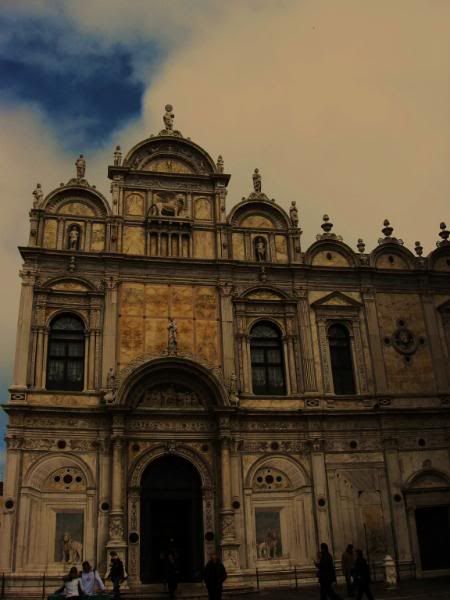
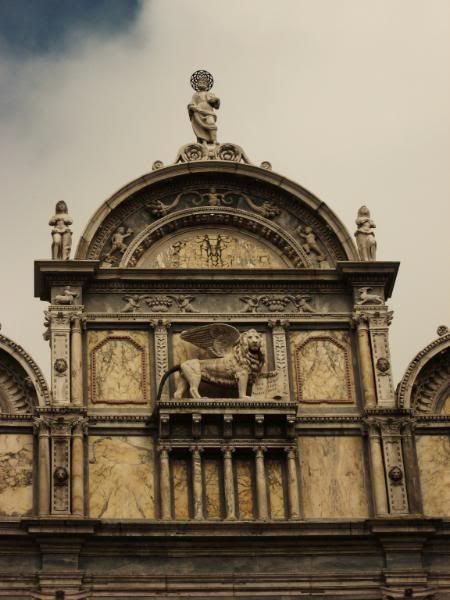
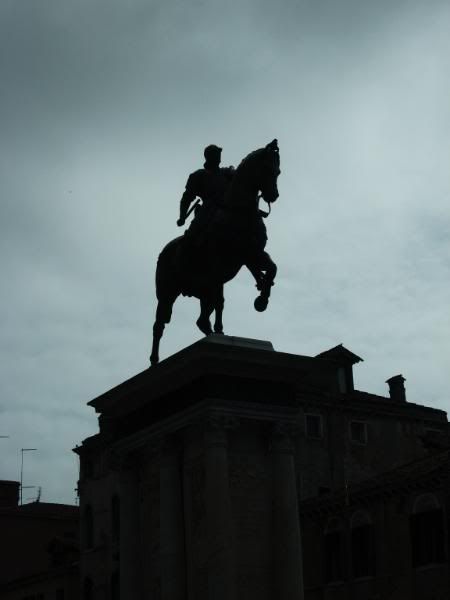
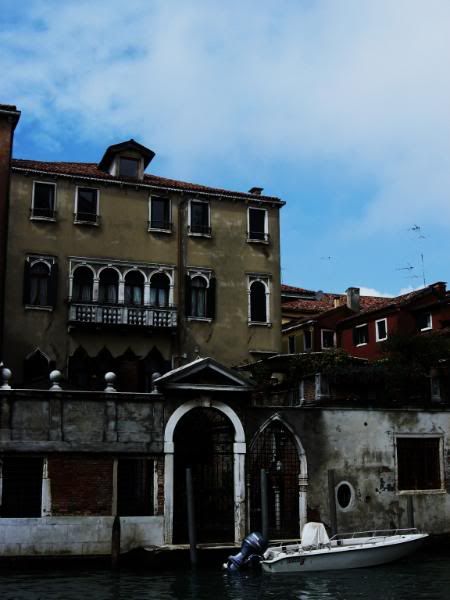
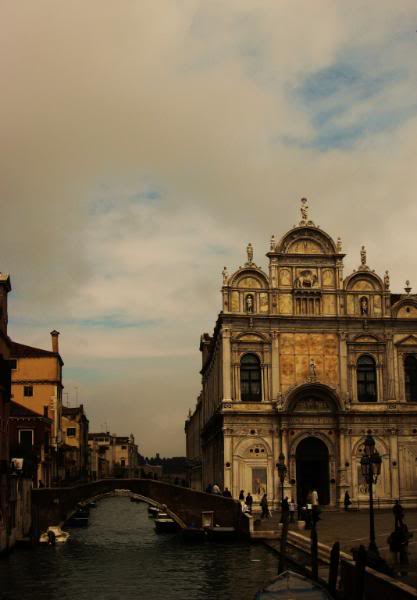
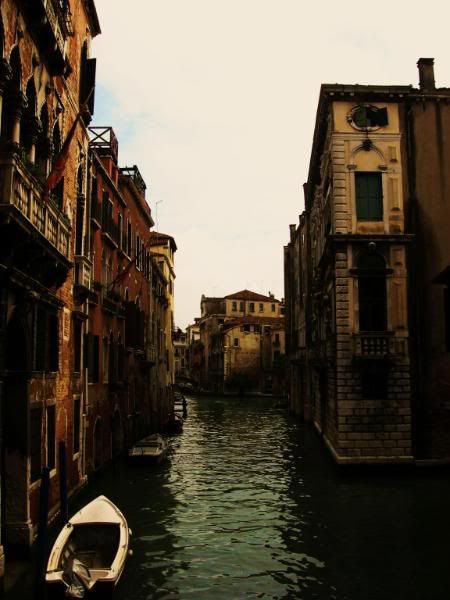
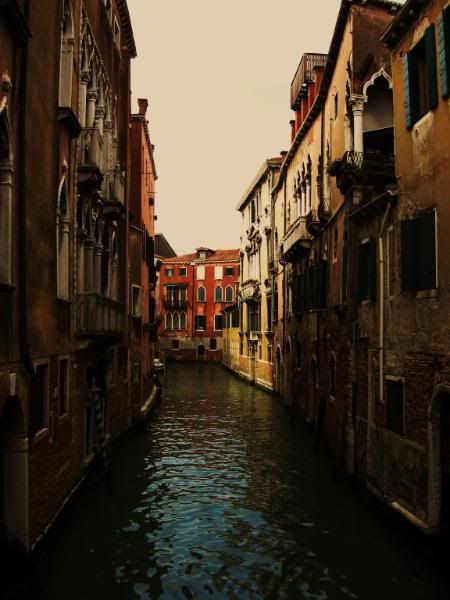
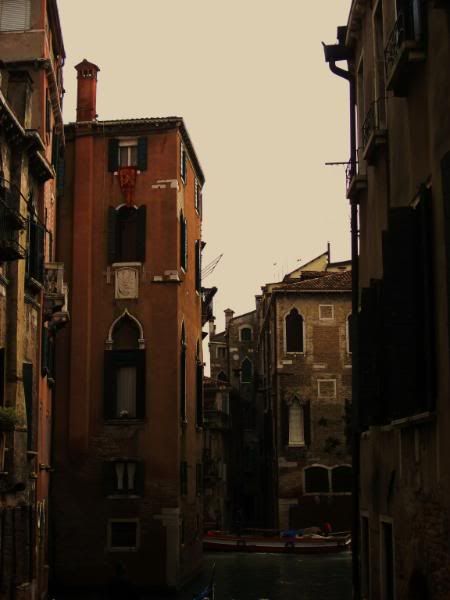
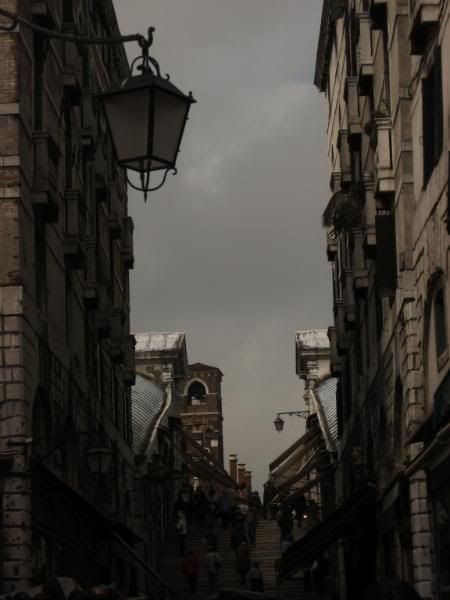
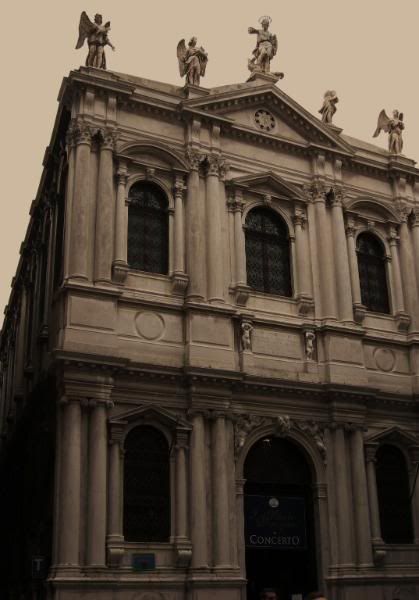 From the Canal GrandeCanto 76
From the Canal GrandeCanto 76and the Canal Grande has lasted at least until our time
What one can see when paddling down the Canal Grande is endless. Not only are the ancient faces of Venice still staring back at everything, but a wonderful history of Venice is found on this Canal – including Lord Byron's former house, and the house where Richard Wagner wrote
Parsifal.

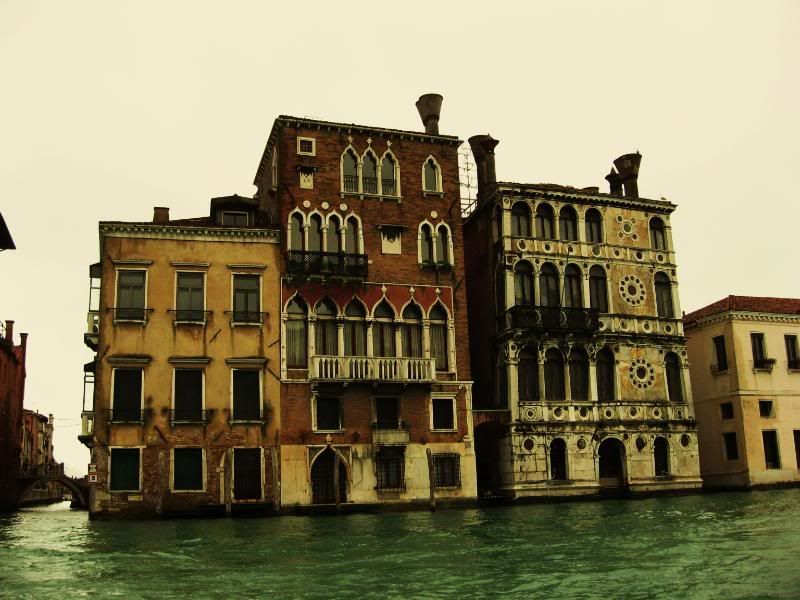
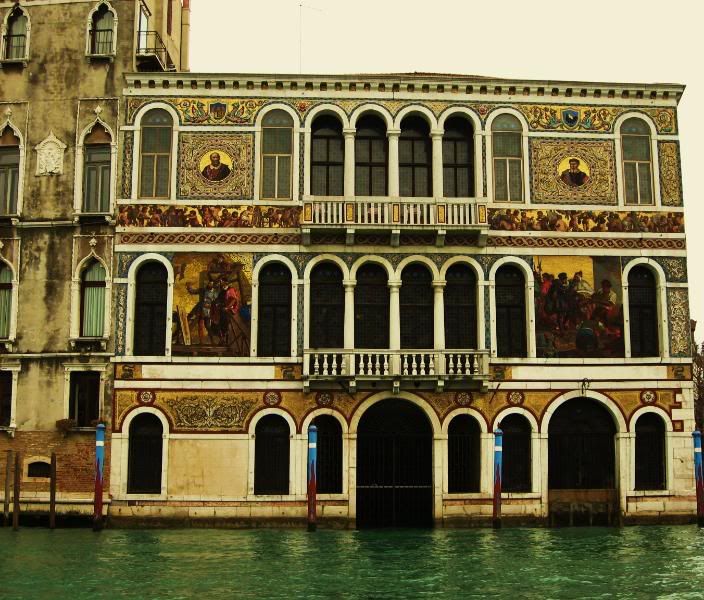

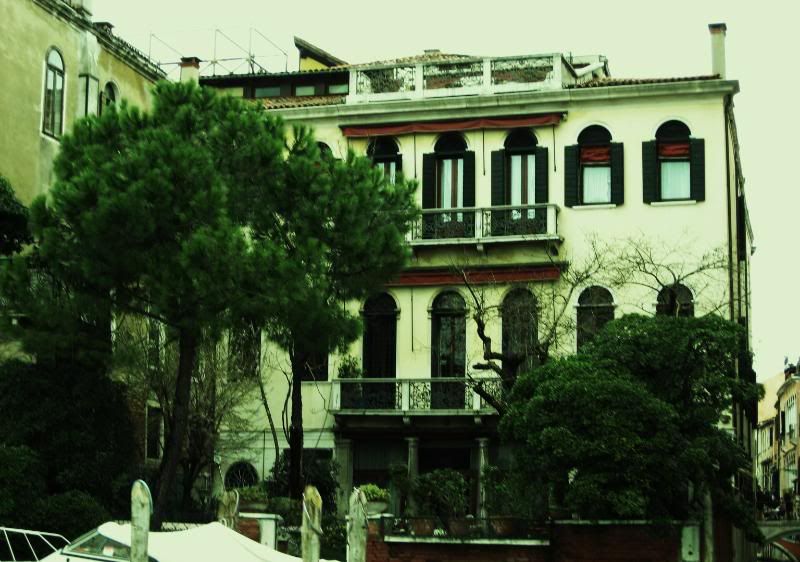
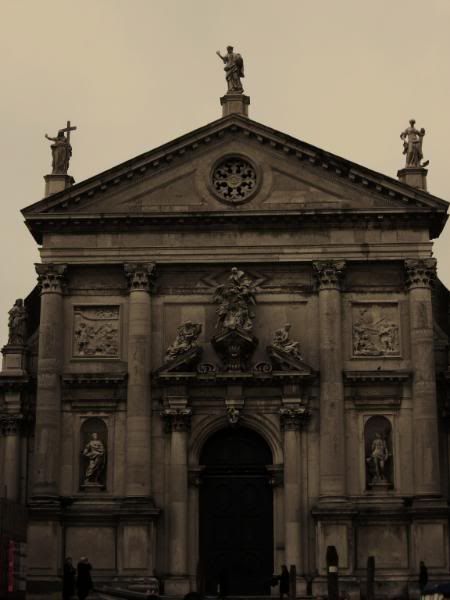
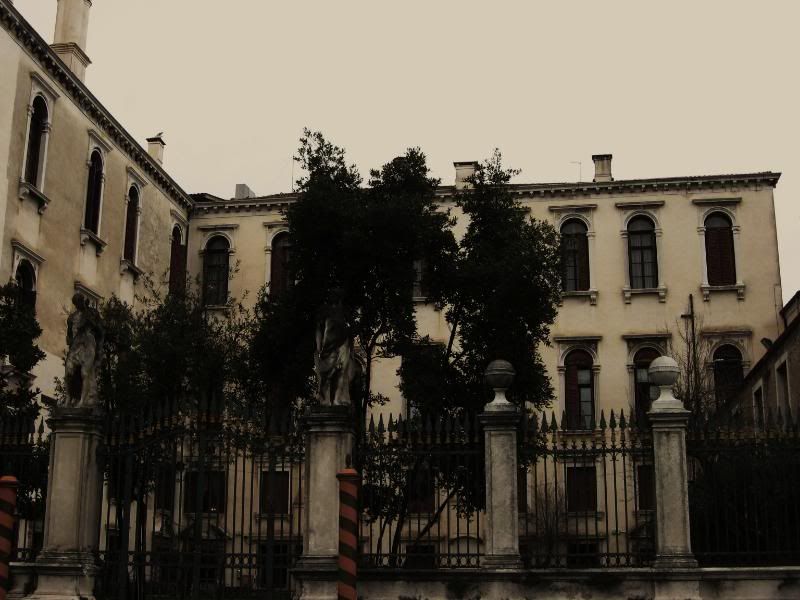
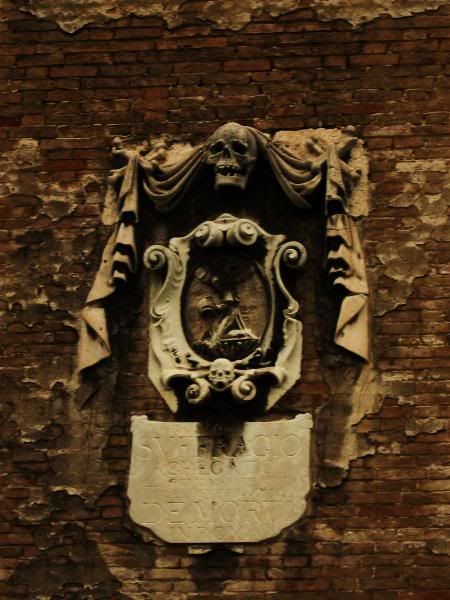

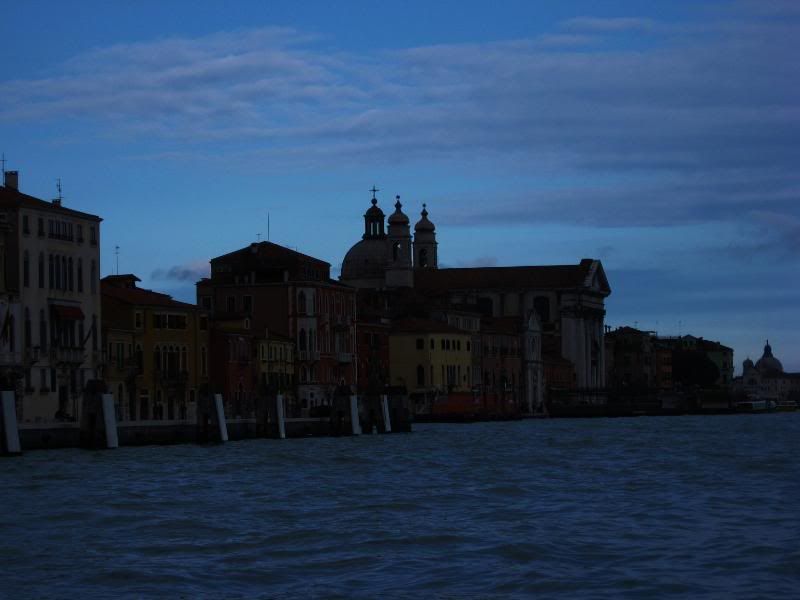
From the Rialto Bridge
Canto 26And the guild spirit was declining.
Te fili Dux, tuosque successores
Aureo annulo, to wed the sea as a wife;
for beating the Emperor Manuel,
eleven hundred and seventy six.
1175 a.d. first bridge in Rialto.
“You may seal your acts with lead, Signor Ziani.”
The jewelers company had their furs lined with scarlet
And silk cloth for the horses
A silk cloth called cendato
That they still use for the shawls
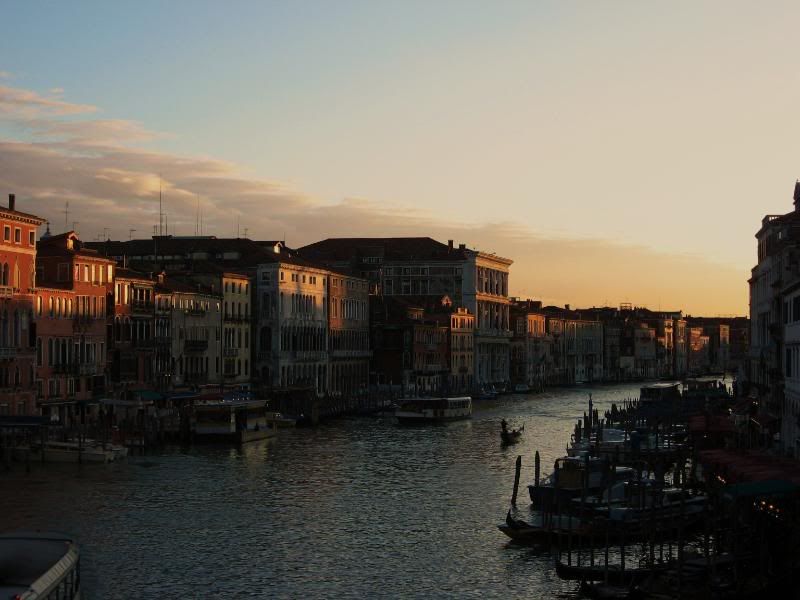

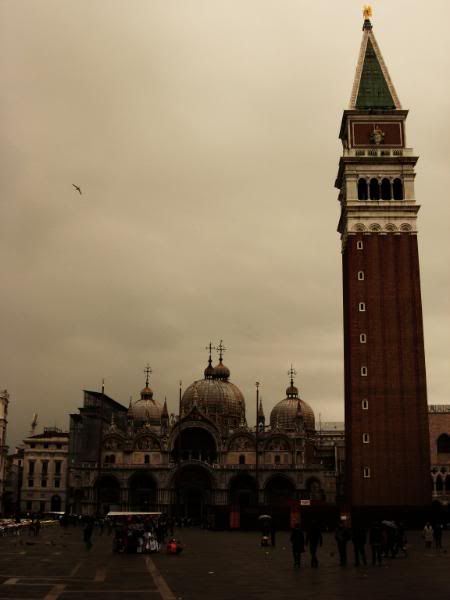 E Z R A P O U N D
E Z R A P O U N DWhat follows is a dialogue between Ezra Pound and Miguel Serrano as it appeared in Serrano's
NOS: Book of the Resurrection.
The Wounded Warrior
The Master had also said to me: 'Seek the comrades who were scattered by the great war.'
On an old battlefield, I found the greatest of these comrades, a descendant of the Tuatha De Danann. He was badly wounded, lying on the banks of a canal. A heroic woman was tending him, staunching the blood which flowed from his wounds. Because of the tortures to which his enemies had subjected him, the warrior was almost dumb. He would soon be leaving the world.
I sat down at his side and talked to him, telling him about my pilgrimage to the land of Occitania, in the Cathar Languedoc, my climb to the ruins of the solar temple of Montségur and the Sierra Maladetta, where our brother, the warrior-troubadour Bertran de Born, let himself freeze to death. I recited his poem, the 'Praise of War', which the warrior had translated.
The old warrior remained silent, motionless, like a rock, like a tree, absent, hardly even listening to me.
I had an inspiration. Remembering the garden of my childhood and the 'angel' which might possibly have entered me, I thought of what people say about the 'second childhood of the old'. Is it not possible that this 'angel', which seemed to float on the outside of the body for a time during childhood, also emerges in old age and again remains outside the body, even before death? And this 'angel', which when it entered the body became 'me', forming the 'personality', becomes only 'persona' once more when it leaves the body again. But for the fact that it possesses the face, I said to myself, enabling it to immortalize itself, projecting an Absolute Personality beyond time and space. So that, at such an advanced age as that of this wounded warrior, his 'angel' can only be inside his body for brief moments. And it must therefore be sought on the outside.
So I stopped looking at his bodily eyes and addressed my words to something that might be found floating like an aura, a little way above his head. Intensely, although calmly, I spoke to him: 'Be joyful, warrior, for in another seven hundred years the laurel will flower again and you will once more lose the war.'
His body trembled as if beneath a gentle blow from something that had entered it. Something that was wandering in the light of that Venetian evening, beside the doves of Saint Mark's Square, over the dome of the Cathedral of La Salute, or near the Colleone horse.
'You are one of the few. Bless you for coming at last! I was waiting for you. Now I can go.'
'Yes. Now you can go; because now you know that the Gods give to each warrior a comrade. While you sleep, I keep watch. And when you have gone, I will continue fighting for both of us. Besides, you know that I know that you have sung in code in your “Cantos”. Also, we have both scaled the ruins of the Solar Temple of Montségur, and one day we will rebuild it, in another land, when the Golden Age returns. And when the God of the Losers of the Kaliyuga, our guide, has been avenged.'
Then the warrior arose, dressed in black, covered with bloody wounds. And together we intoned the song of our beloved troubadour, Bertran de Born, in the language into which he had translated it:
'In hot summer have I great rejoicing
When the tempests kill the earth's foul peace,
And the lightnings from black heav'n flash crimson,
And the fierce thunders roar me their music
And the winds shriek through the clouds mad, opposing,
And through all the riven skies God's swords clash.
And I love to see the sun rise blood-crimson.
And I watch his spears through the dark clash
And it fills all my heart with rejoicing
And pries wide my mouth with fast music
When I see him so scorn and defy peace,
His lone might 'gainst all darkness opposing.
And let the music of the swords make them crimson!'
Then I sang in my language, for him:
'I love the joyous time
Which gives birth to leaves and flowers
I love to hear the happy sound
Of the birds whose songs
Re-echo through the grove
And I love to see tents
And pavilions erected in the meadows
And I rejoice greatly
When I see armed knights
And horses in the field
And see castles lustily besieged
And I love to see when a knight
Is the first to invade it
Oh horseback, fearlessly, well armed
I love to see his valiant courage!
And the horses galloped
Riderless through the thicket. . . .'
...........................................................
He came even closer: 'Do you know why I stay silent? So that nobody can make me say anything opposed to what I wrote and did. And because, in the end, we warriors are alone and no one, except our comrade, understands us, and no one is with us, except the ghosts of the dead heroes. When the fire of combat awoke in our hearts, it could never be put out again. The “Tiny Spark” guides us. If I were to go back, if because of my old age and the pain from my wounds they were to induce me to recant, the spirit of adventure, which has never died, would leave the warrior forever. And nothing would then remain but an empty body. Magic would have deserted us. . . . Be faithful to the old dreams, so that our world doesn't lose hope!'
I took a step backwards, the better to look at him in the dying light reflected in the waters of the canal. And looking fixedly now at his bodily eyes, I pronounced the greeting of the legendary troubadour: 'Heil!'
San Michele Island – Cemetery of VeniceNotes for Canto 117 et seq.
And for one beautiful day there was peace.
--
San MicheleSo now the island has a grove of bards,
a college of silence, where the shade refreshes
and lizards skitter under hidden birds.
John Drury,
The Cemetery Island, The Literary Review, Autumn 1999
A cemetery built in 1469 and rebuilt repeatedly since, Renaissance in style, dedicated to Saint Michael who guards the peace of the dead, is the island of San Michele. In this garden and sanctuary lie many distinguished figures from throughout the centuries, among them Igor Stravinsky, who's resting place I saw honored with a handwritten manuscript and handful of red roses from an American music class. I felt something magical in this place, a sense of peace one can find in the surrounding waves and the beautiful flora of the island, but I did not forget why I traveled to San Michele that morning: to honor Ezra Pound where he lay forever in peace.
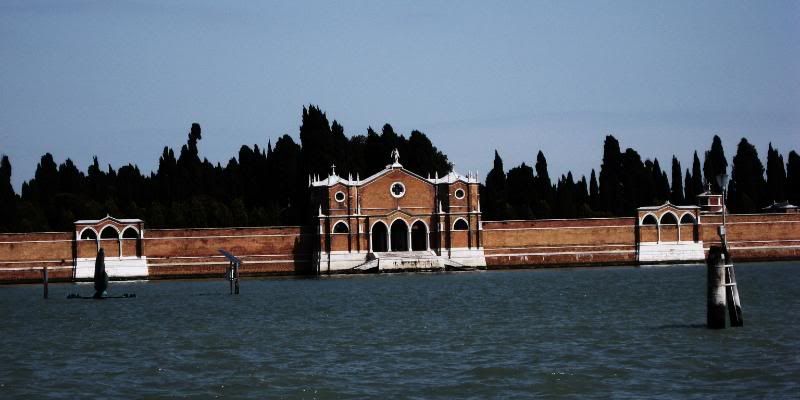 Pound's Resting Place
Pound's Resting PlacePassing through the gateway leading to the Protestant section, I found myself clearing vines of ivy and leaves off of a simple marble gravestone bearing the inscription, “EZRA POVND”. Pound rests next to Olga Rudge, nestled in ivy under a laurel tree and a very quiet shade above them. As the mid morning sun shined through the leaves scattering a vibrant array of prisms through the morning dew, and while waves and songbirds sounded the morning, I recalled a Canto I read on the boat ride to San Michele:
Canto 113H.D. once said “serenitas”
(Atthis, etc.)
At Dieudonne's
In pre-history.
No dog, no horse, and no goat,
The long flank, the firm breast
And to know beauty and death and despair
and to think that what has been shall ever be,
flowing, ever unstill.
Then a partridge-shaped cloud over dust storm.
The hells move in cycles,
No man can see his own end.
The Gods have not returned. “The have never left us”.
They have not returned.
As I stood there looking at Pound's marble gravestone, thinking about the warrior in the later years of his life, the last lines began to appear and reappear in a series of thoughts, and that was when I penned the following lines:
The Gods have not returned
They never left us
Dormant, in most
Alive and wielding, in few
Our dreams we keep
Hope for our world too
Through strength and synchronicity
What in you we've seen so clearly
Live on through your work
Through us, our dreams and our world
As another who was unalterable
From the Americas, hailed be thee, Ezra Pound
Homage to the Warrior at Rest, Taylor Wade, March 2009
I left my homage weighed down with a Fleurs-de-Lis pin on his gravestone. After a moment of stillness, I left the protestant section and spent the rest of the morning slowly exploring the beautiful cemetery island, still bathed in morning dew.
 Neighborhood
NeighborhoodI could not get a good picture of Pound's and Rudge's house because of scaffolding that then covered part of the building. Below is the alleyway where I found this door, it stands directly to the right of where this picture was taken, and positioned above the door is the sign :
IN UN MAI SPENTO AMORE PER VENEZIA
EZRA POUND
TITANO DELLA POESIA
QUESTA CASA ABITO' PER MEZZO SECOLO
COMUNE DI VENEZIA
IN HIS UNDYING LOVE FOR VENICE
EZRA POUND
TITAN OF POETRY
IN THIS HOUSE LIVED FOR HALF A CENTURY
THE VENICE CITY COUNCIL
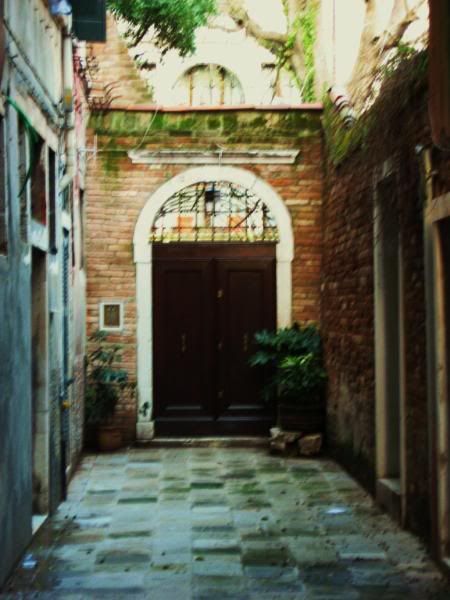
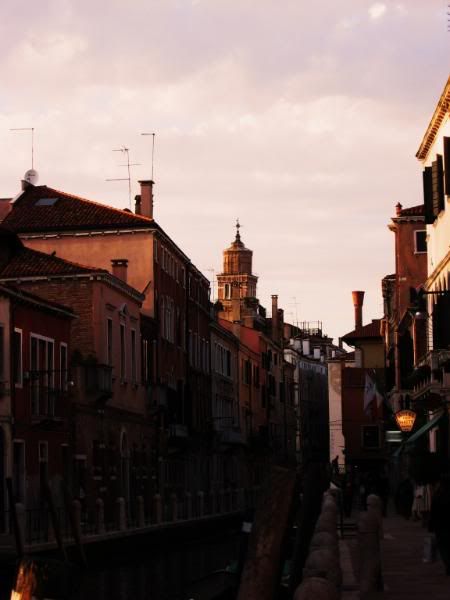
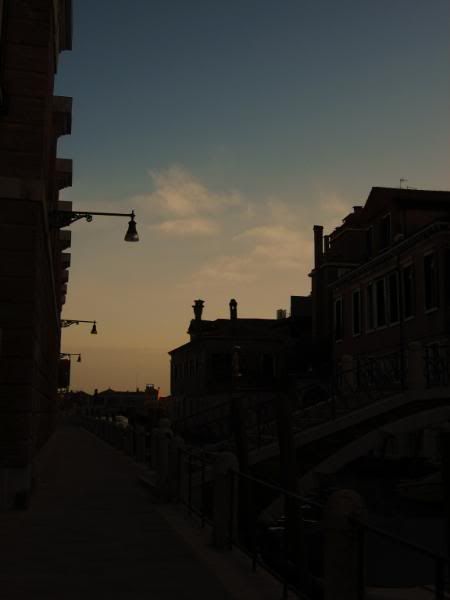

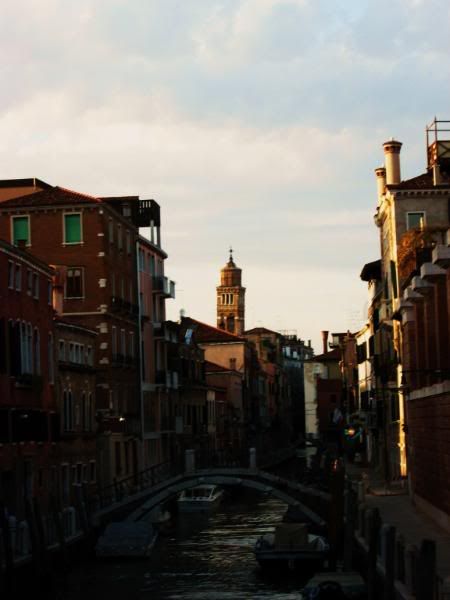
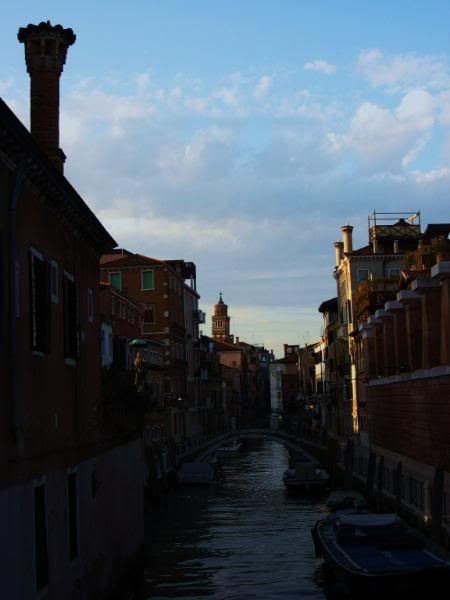
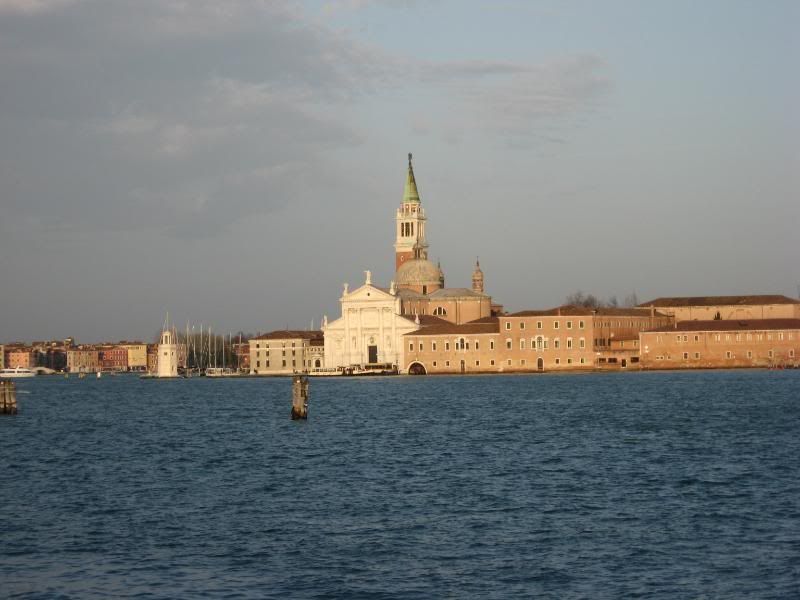
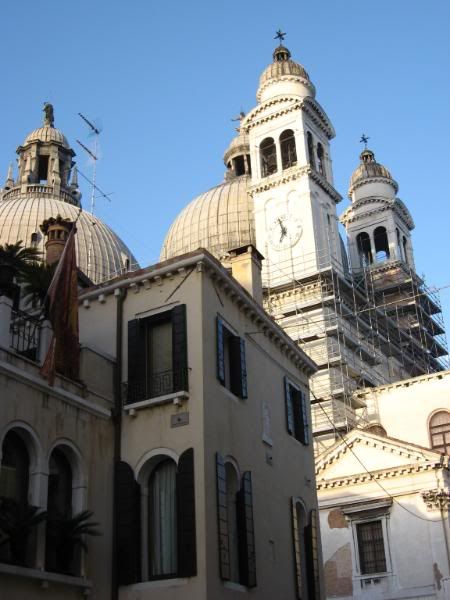
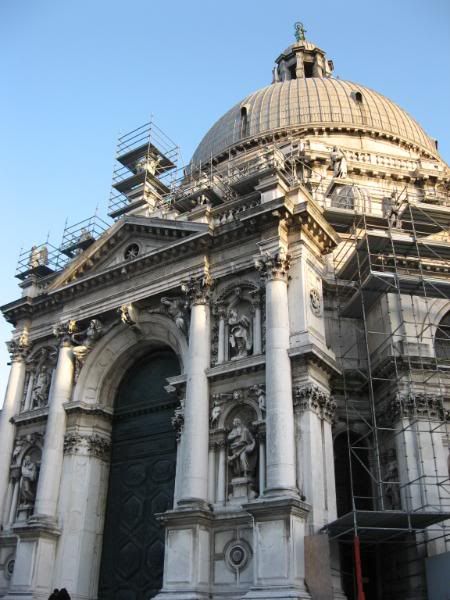
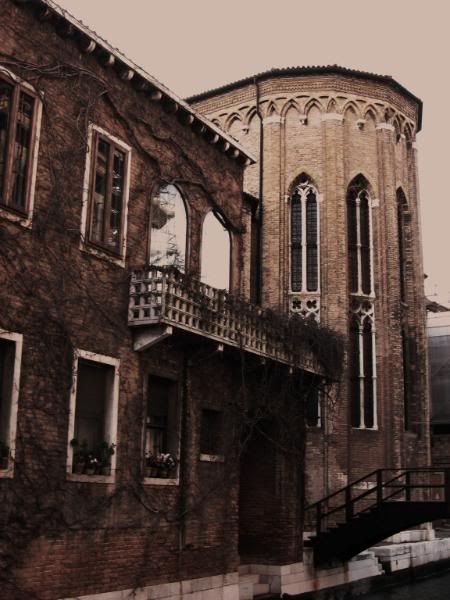
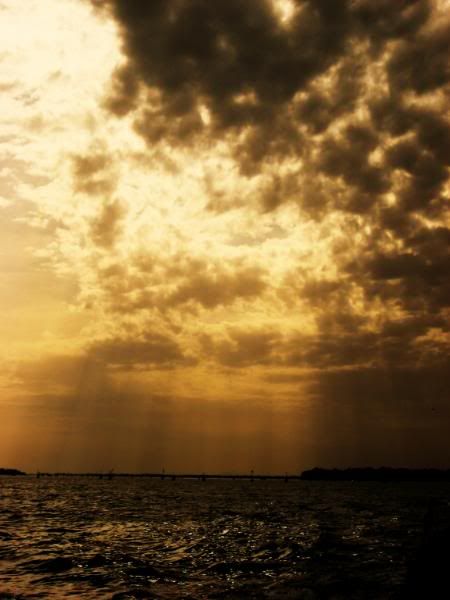
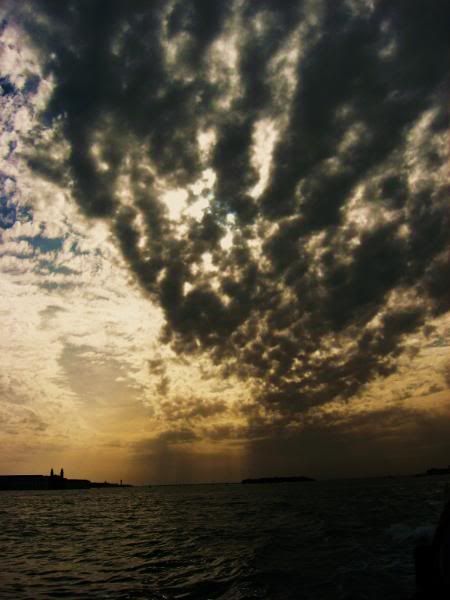



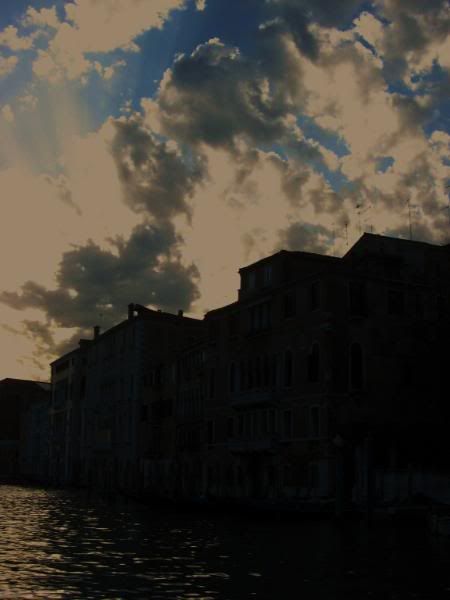
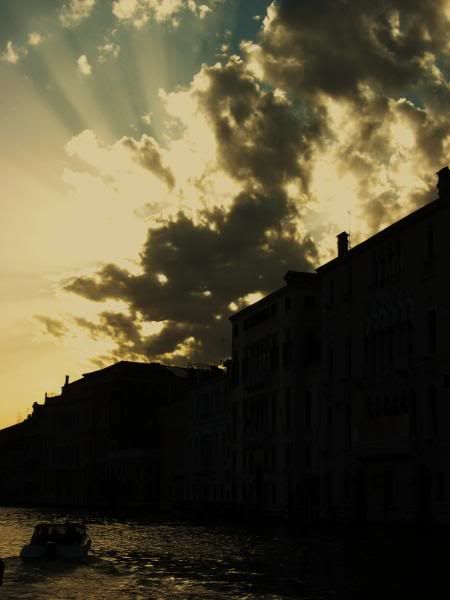
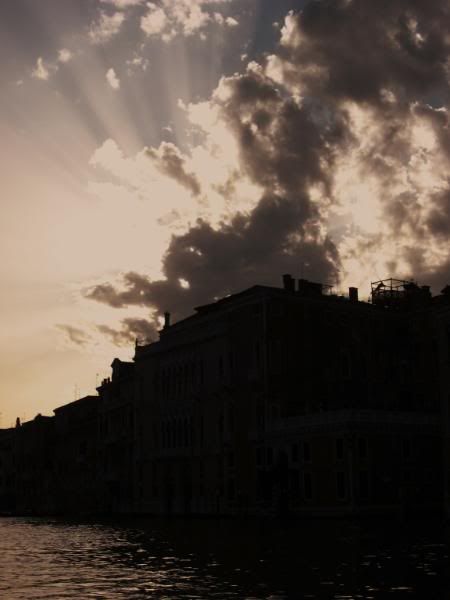
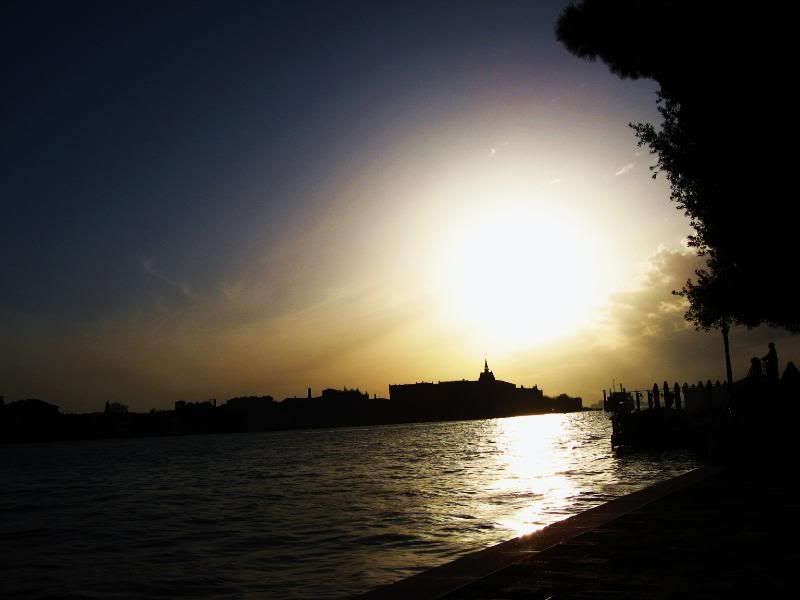

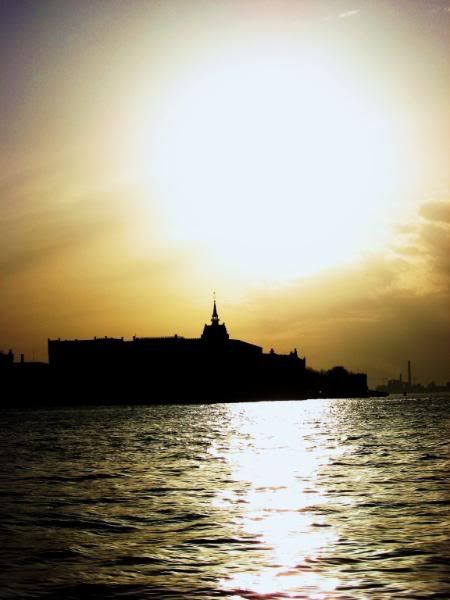
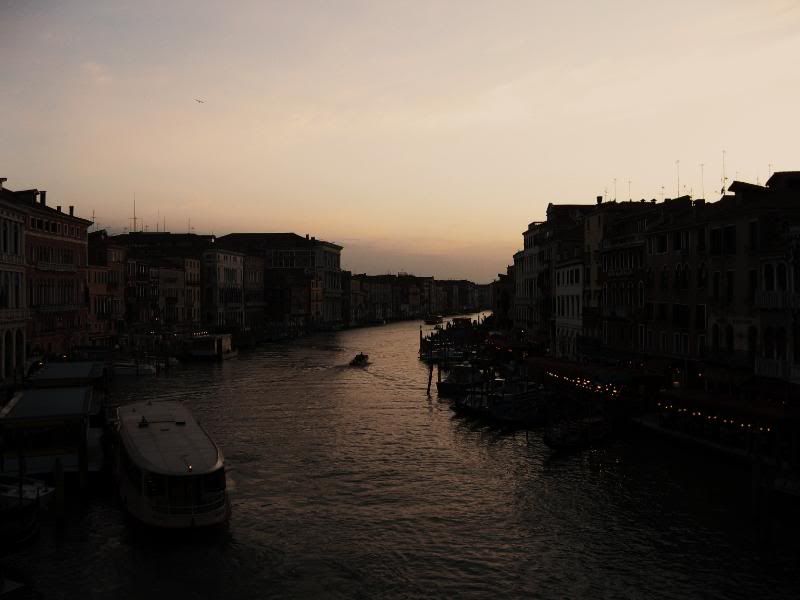
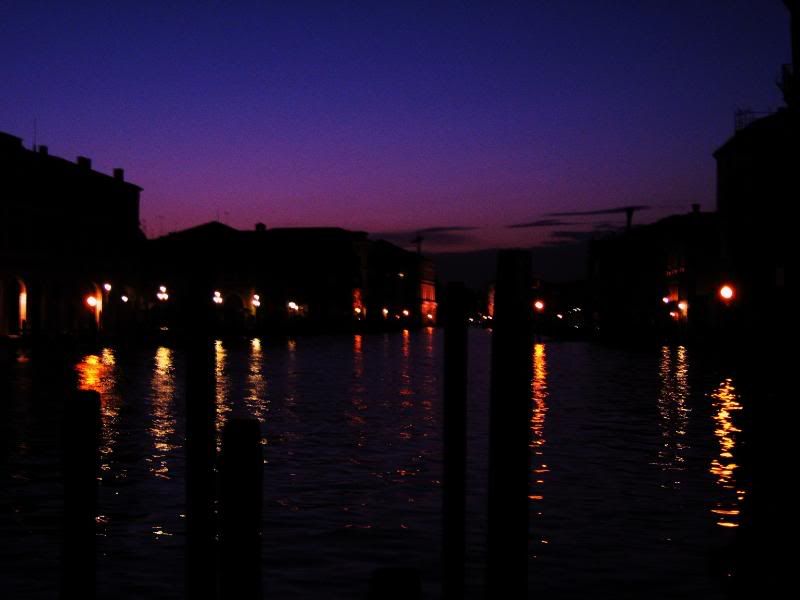
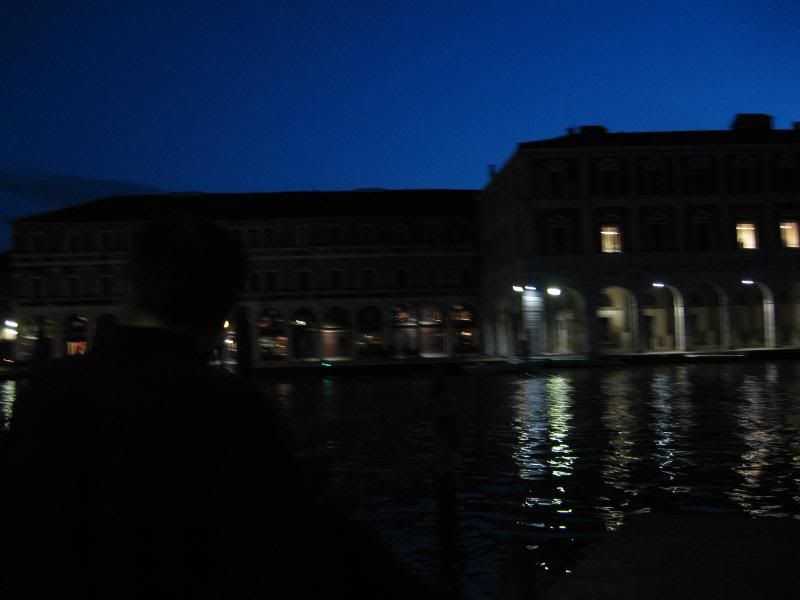 Cortina and the Dolomites – Cortina d' Ampezzo Dolomiti
Cortina and the Dolomites – Cortina d' Ampezzo Dolomiti Not far north of Venice stand the roofs of Italy – part of the range which extends into France and throughout the German triune. Within a short couple of hours, after leaving the watery city of Venice, I found myself amid mountainous majesty with mighty peaks reaching towards the sky, all covered with snow, inhabited by Alpine Italians and full of frozen waters. The peak I ascended is Cortina, with a small town below bearing the same name. Despite Cortina being a popular ski resort where 1956 Winter Olympics events were held, the number of people here was small, and noise never even came to thought. There was no meditation to create upon this peak, it was already there and found me. It is good for the seeking soul to stand upon peaks. If I lived in Venice, I would be a very frequent visitor of these peaks, and it would not be long before I knew each and every one of them very well.
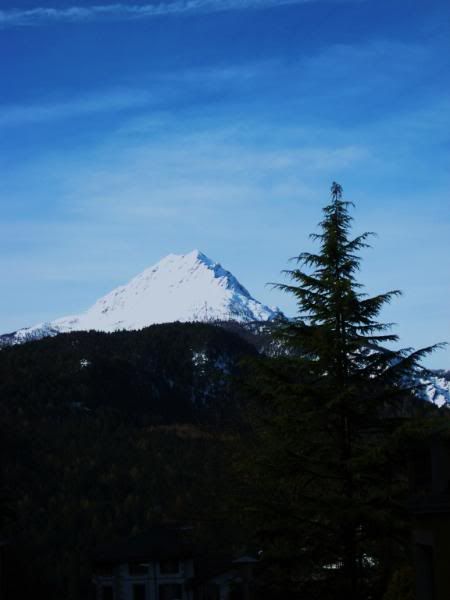
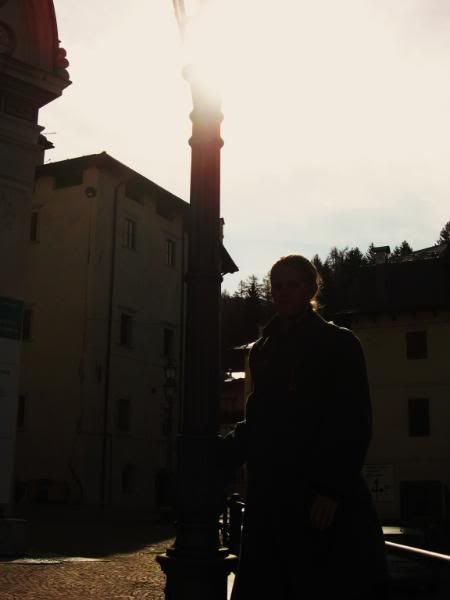
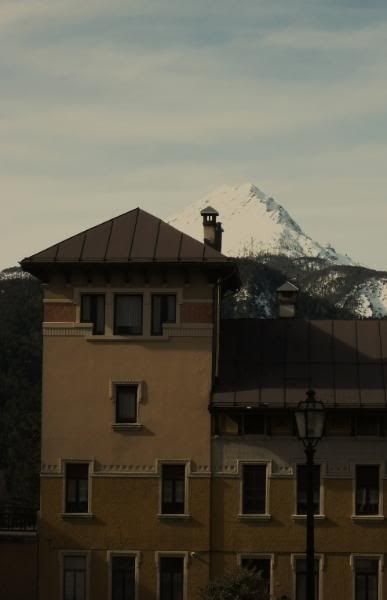
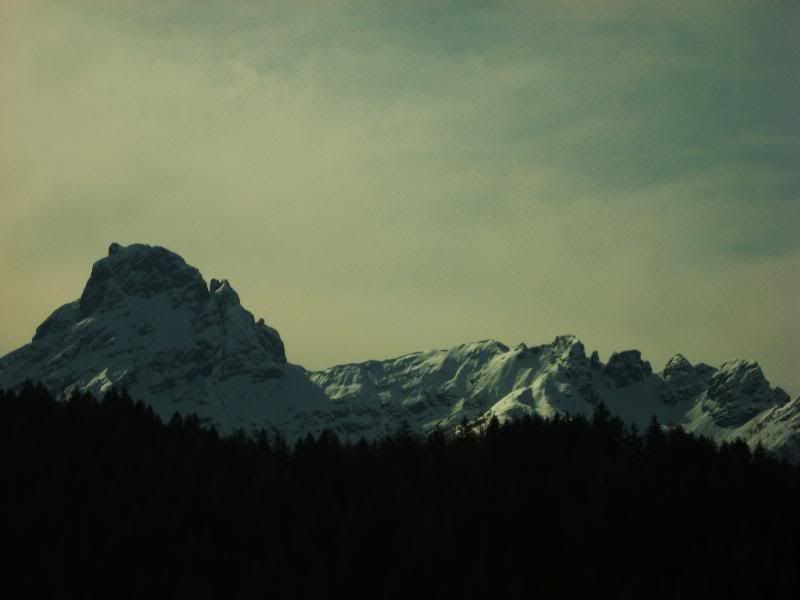
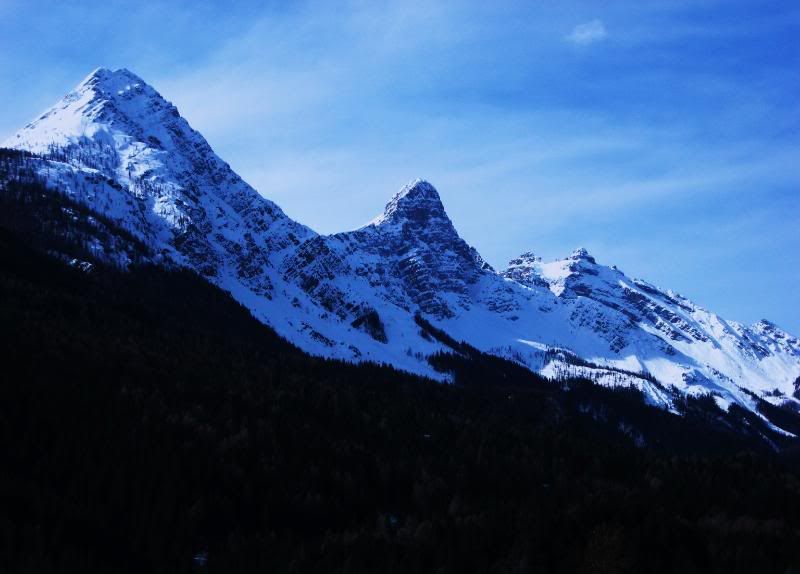
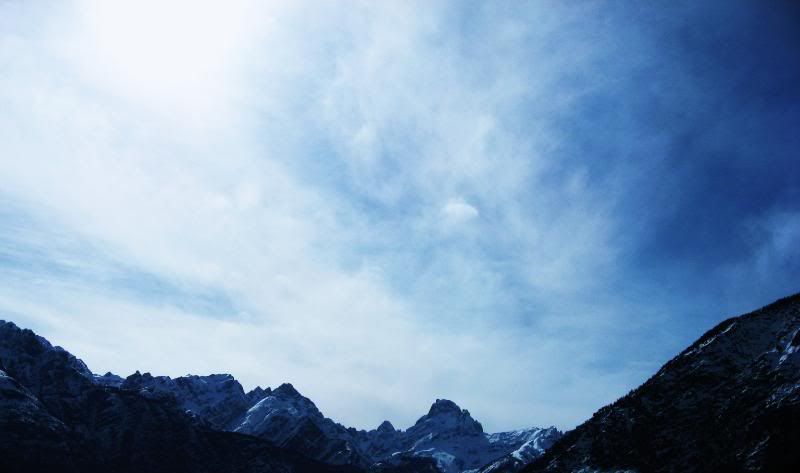
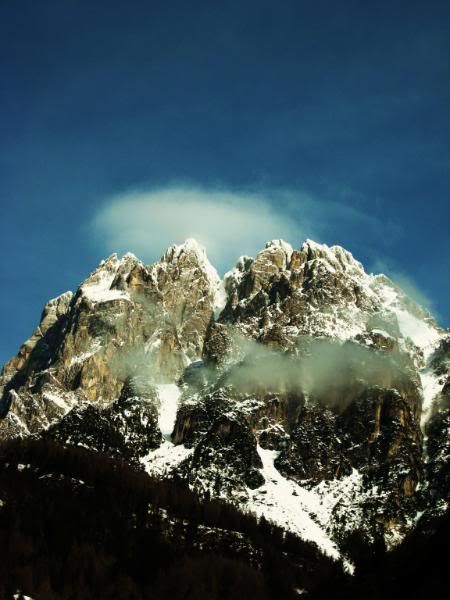
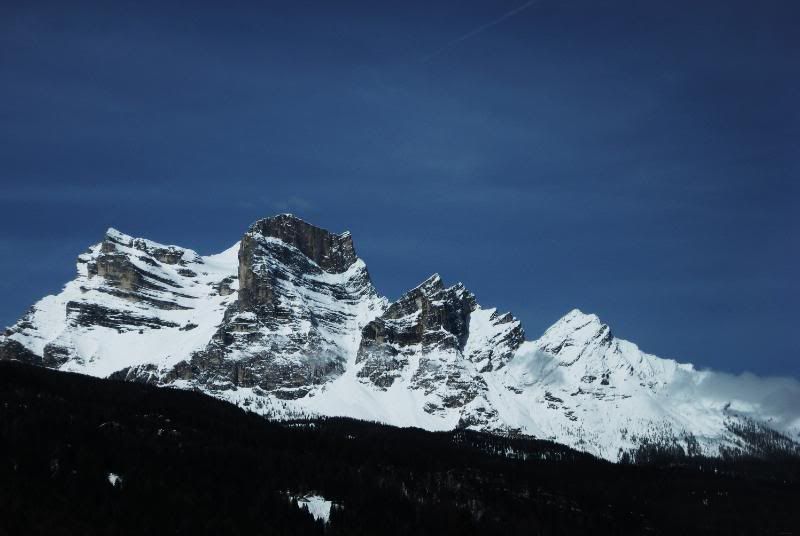
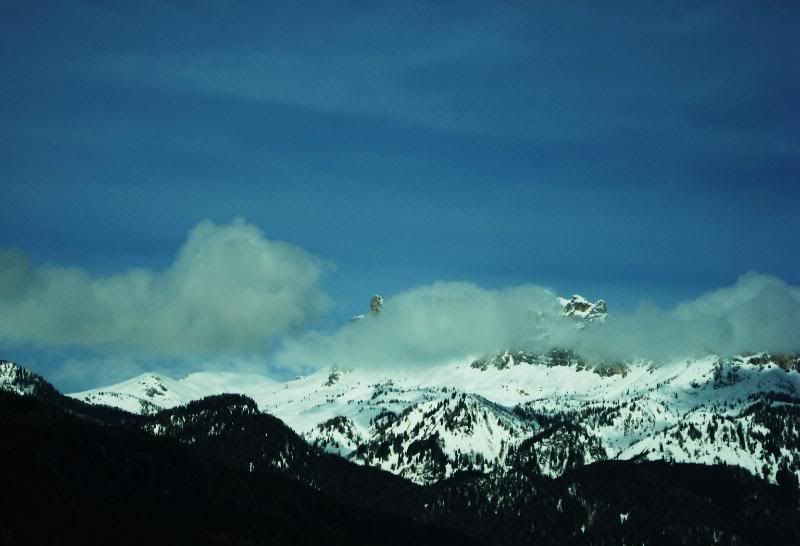
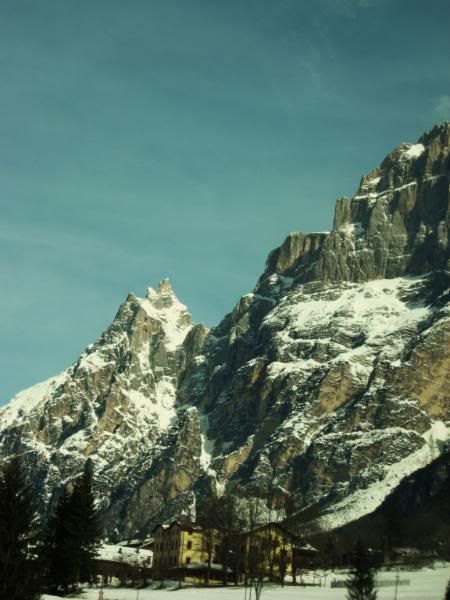

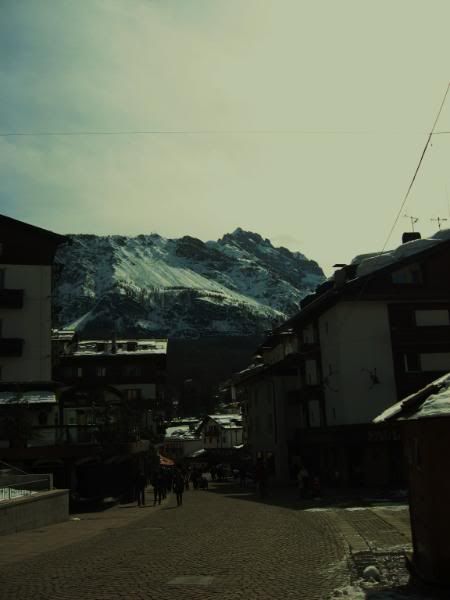
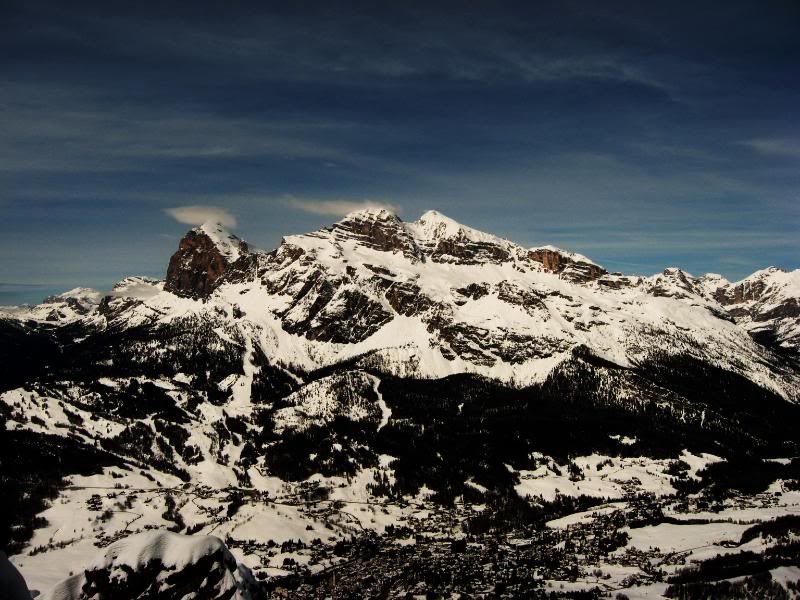
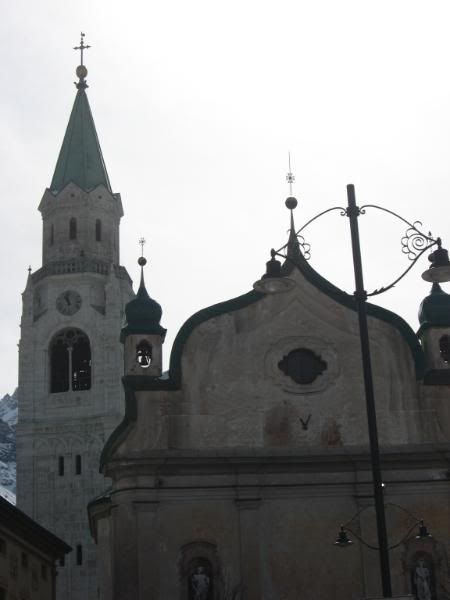
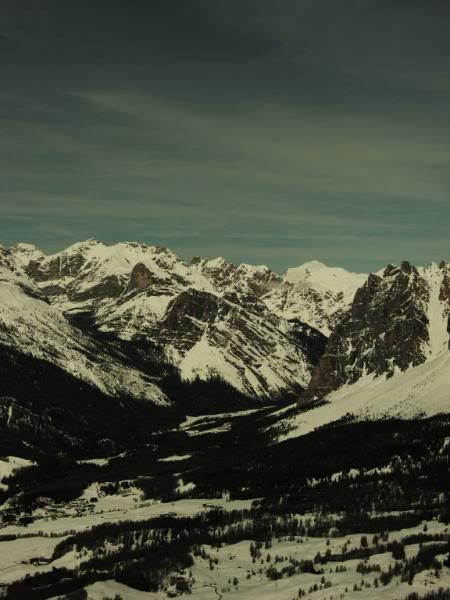
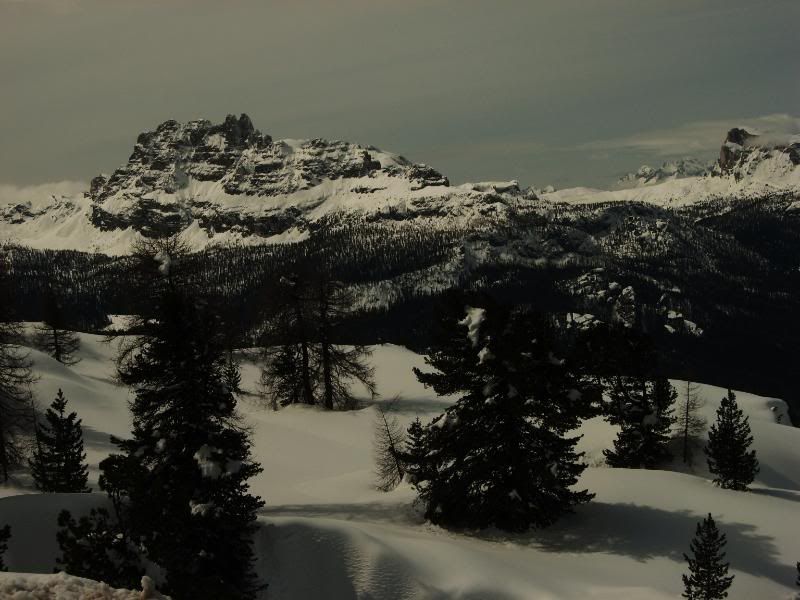
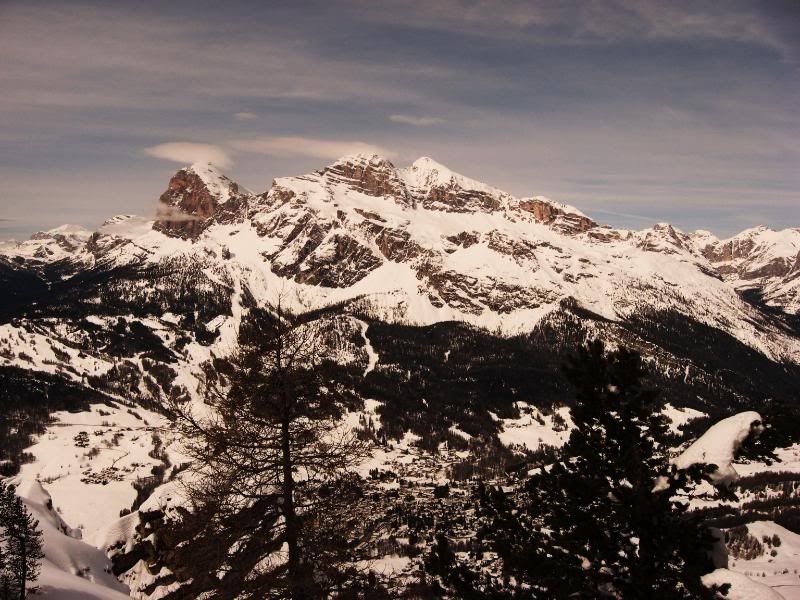
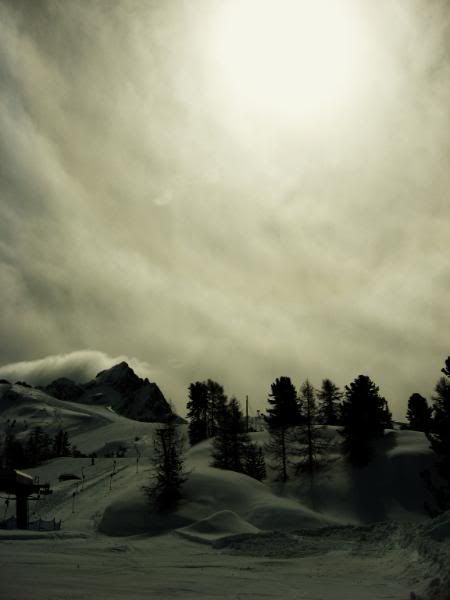
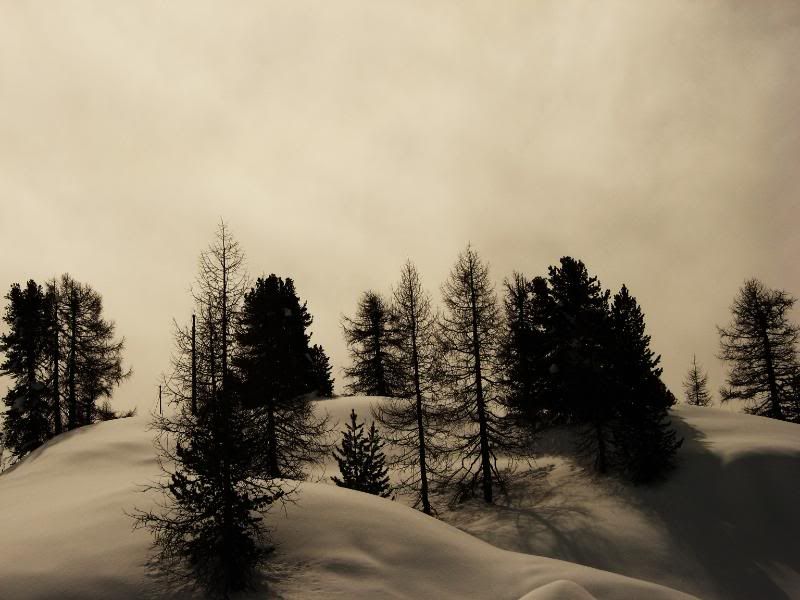
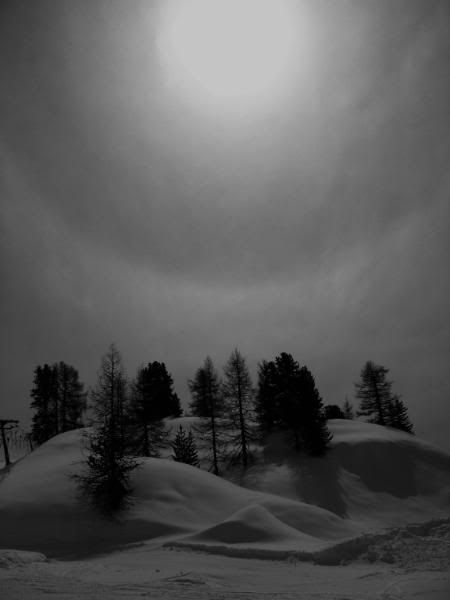
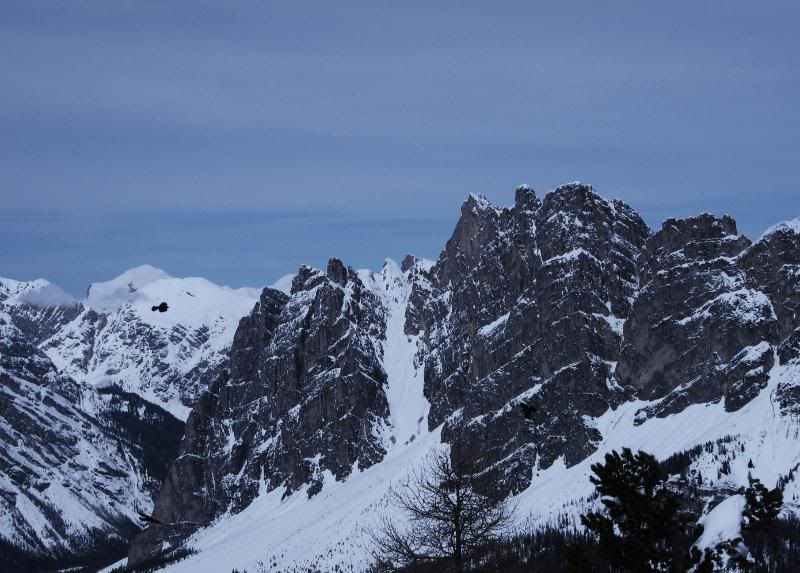
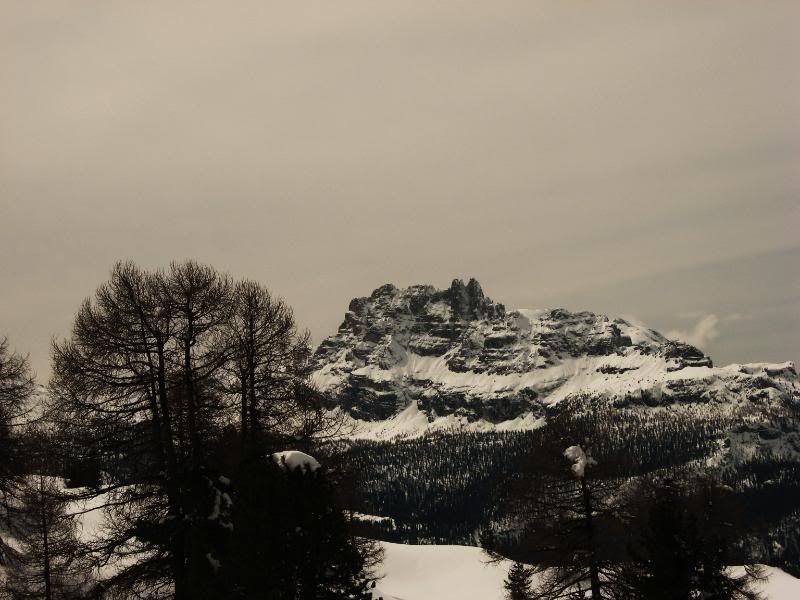
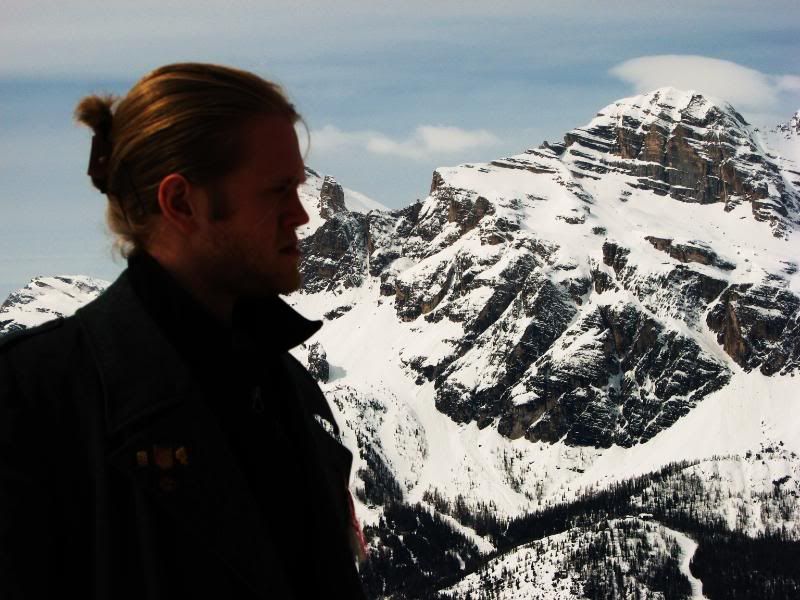
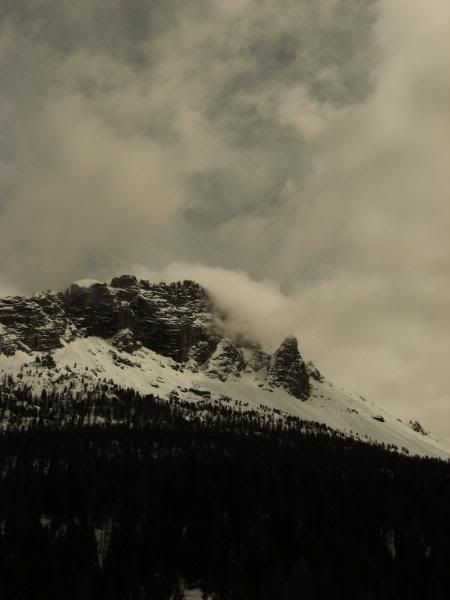
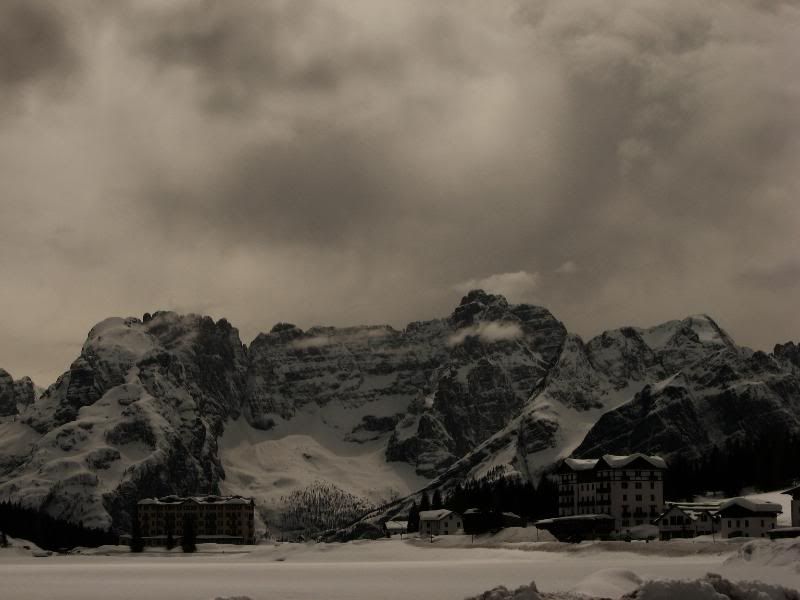
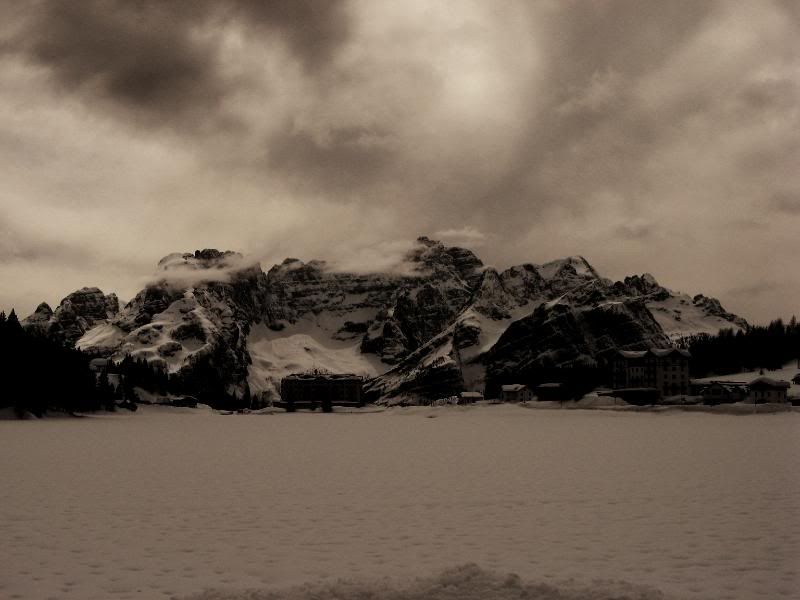
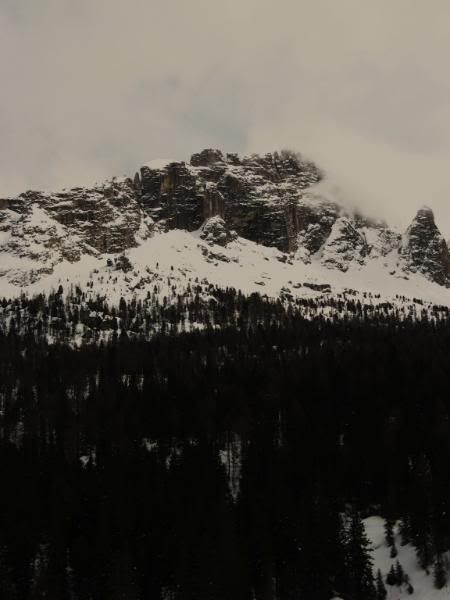
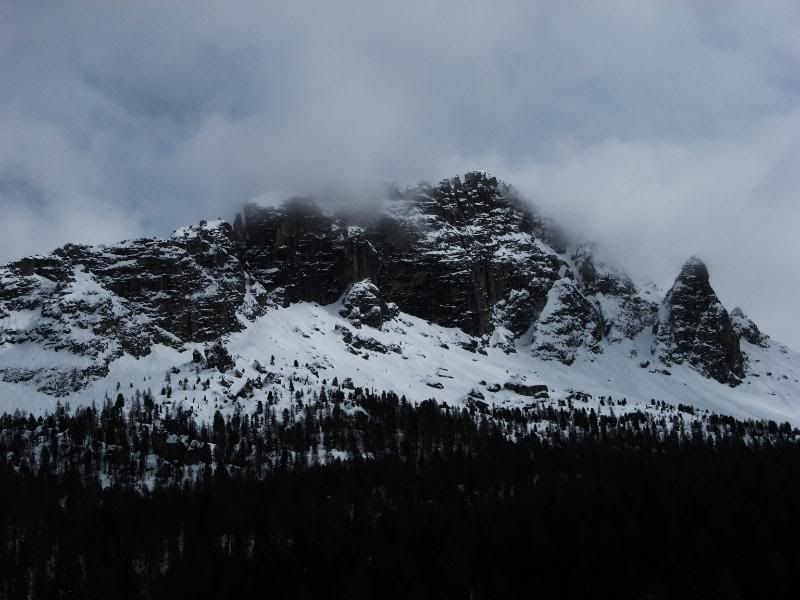
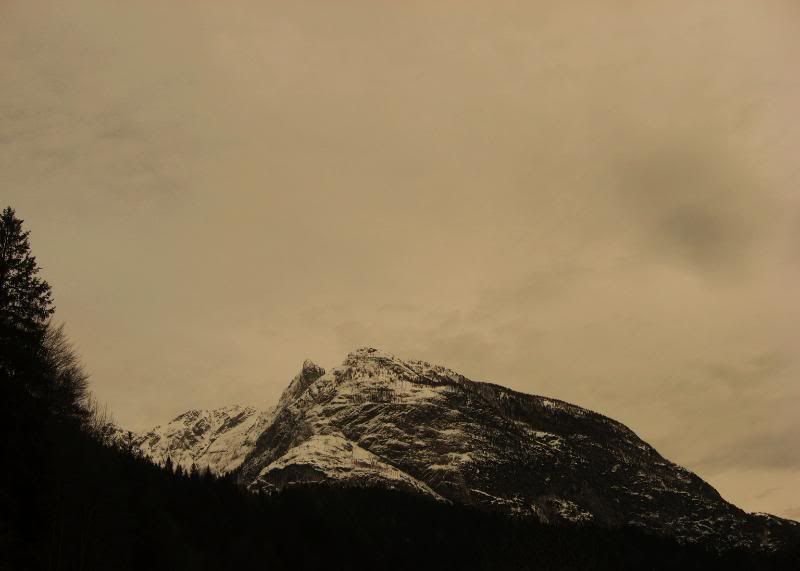
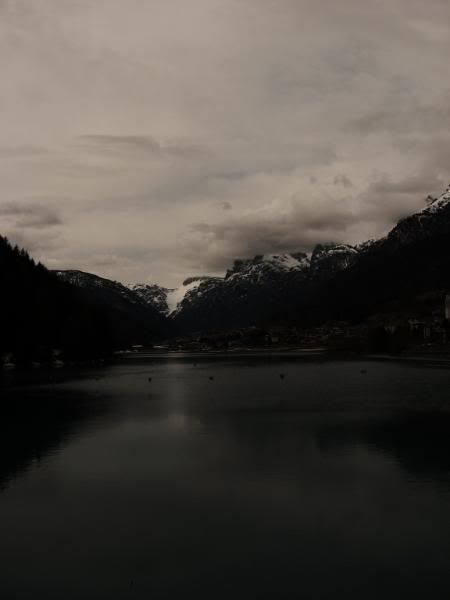

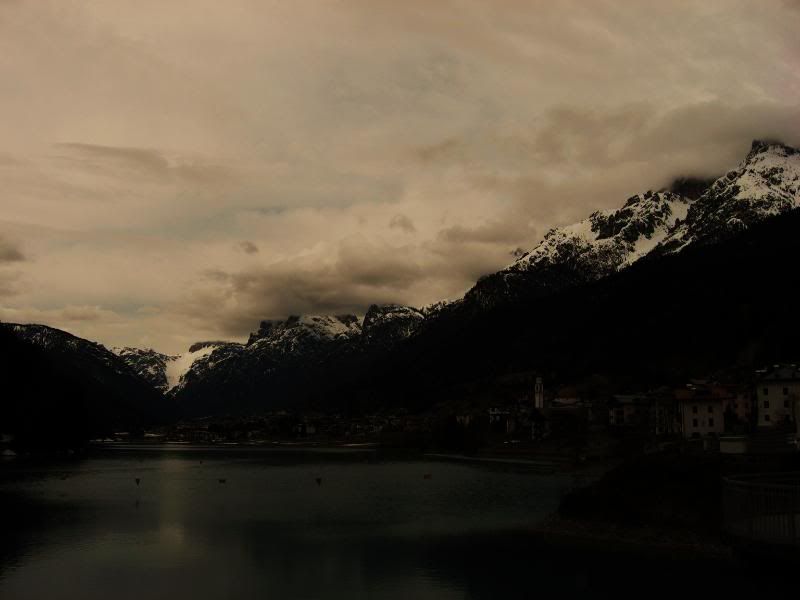
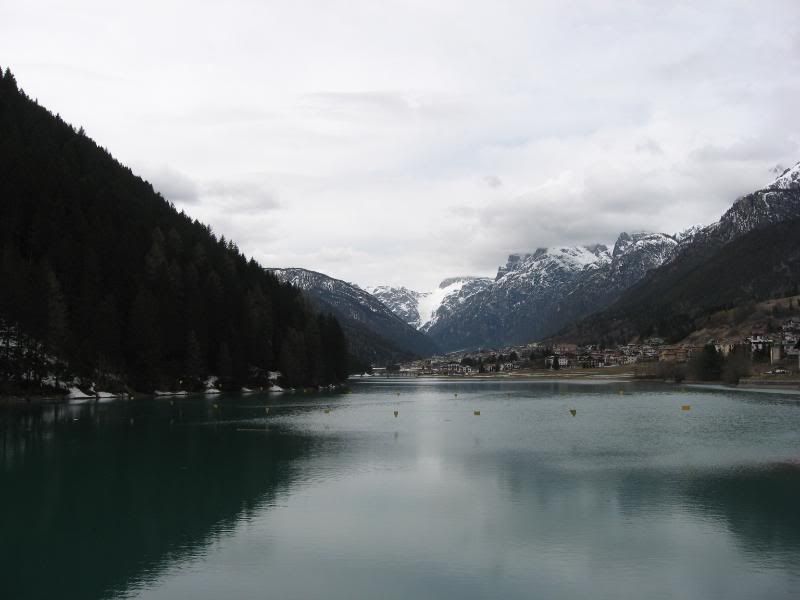
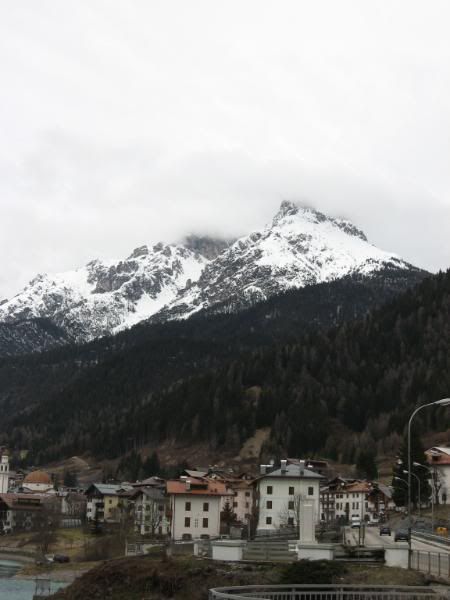
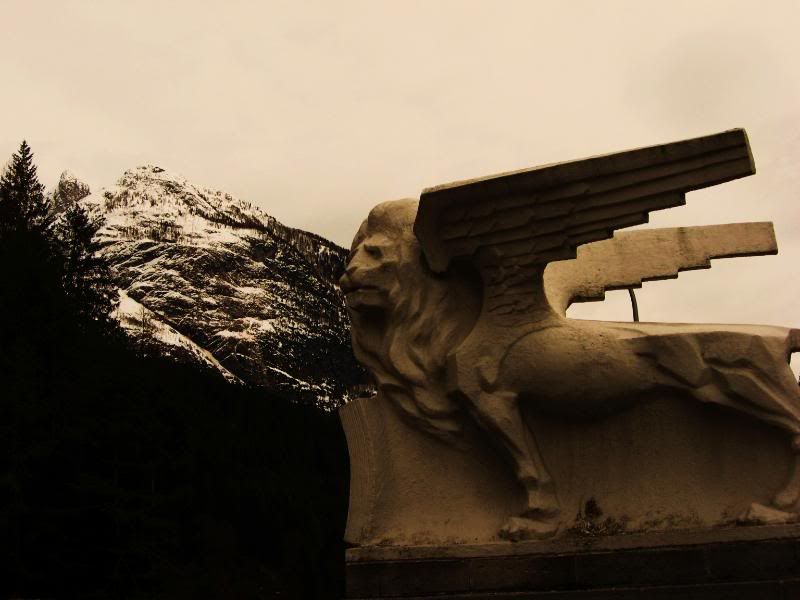
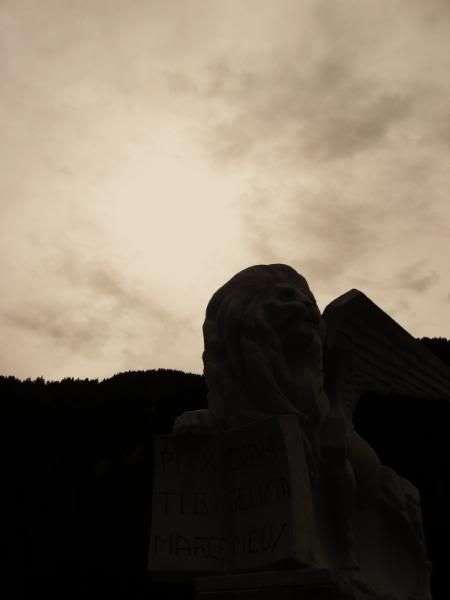
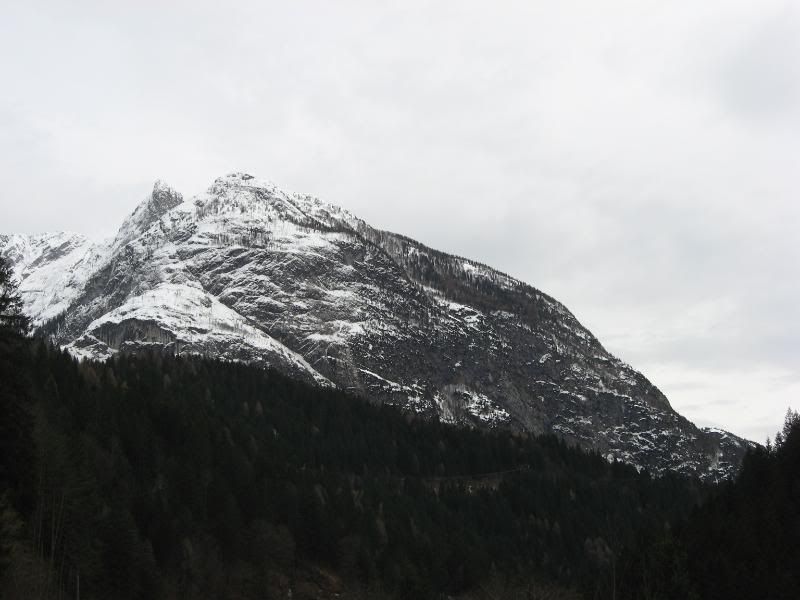 Florence - Firenze
Florence - FirenzeMiguel Serrano once described Florence as “that city so imbued with Renaissance magic” - a description which could not be more true and essential in understanding the nature of Florence that pulls one within its overwhelmingly beautiful grasp. In Florence the spirit of the Renaissance is still very much alive, and can be understood through the art handed down from the centuries and displayed all over the city. During the Renaissance in Florence, the warrior ethos, particularly the depiction of soldiers in art, whether in columns or alone with their weapons, was a despised motif. Because of the constant wars of the time, the Florentines wanted militarization as far away from Florence as possible, and although this sentiment influenced the poets and artists of Florence greatly, traces of a cloaked warrior ethos wielded by the artists of the time has its presence. Michaelangelo's
David, with his fierce gaze fixed on the old enemies of Florence, demonstrates this.
David is the symbol of the Florentine spirit, neither a soldier nor a treacherous Semitic king, but a representation of God in man, carved out of marble with creative purity in order to take the most sublime shape. The Florentines were fierce in their history of producing the most supreme and beautiful art one will ever gaze upon. Florence is where Leonardo and Michaelangelo dissected corpses in order to attain understanding of new mediums that would give life to their art, also where Galileo challenged Aristotle's ignorance of physics and was tried for heresy. Dante Alighieri, author of the
Divine Comedy, was a very involved political mover and shaker in the very early years of Florence. Creators of deathless art would find a home here.
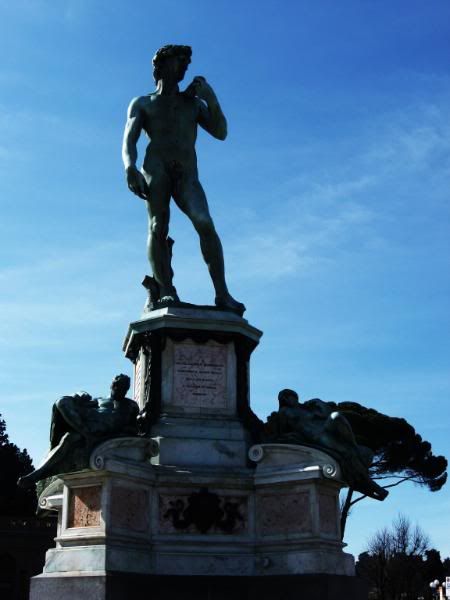
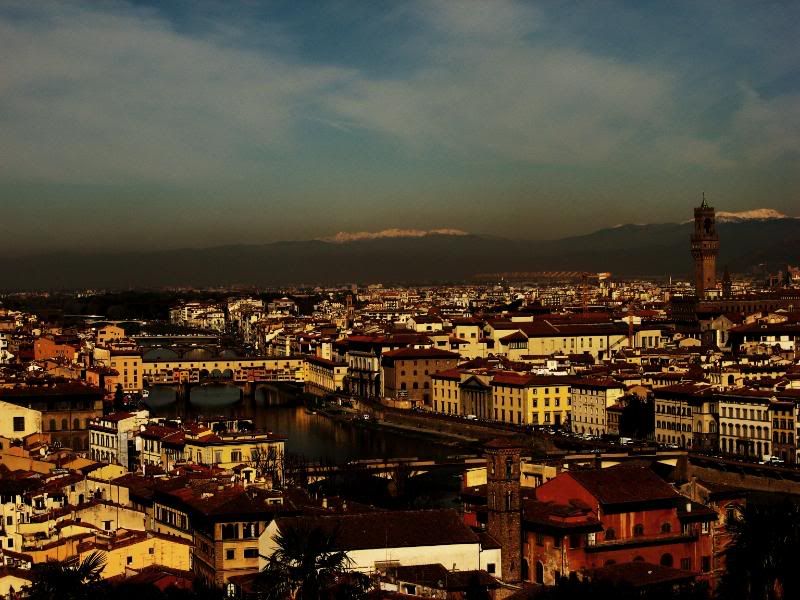
 The Bridge Hitler Saved
The Bridge Hitler SavedWhen the Germans were helping the Italians fight the invading Americans, Florence was a militarized city. This bridge, once full of butchers, then filled with jewelers by an aristocratic family, was to one degree saved by Hitler, who, in his want to paint a watercolor of the bridge, ordered his Field Marshall in Florence not to destroy the bridge.


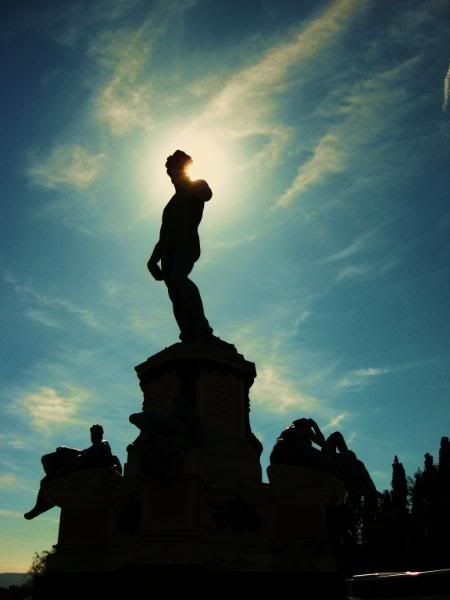
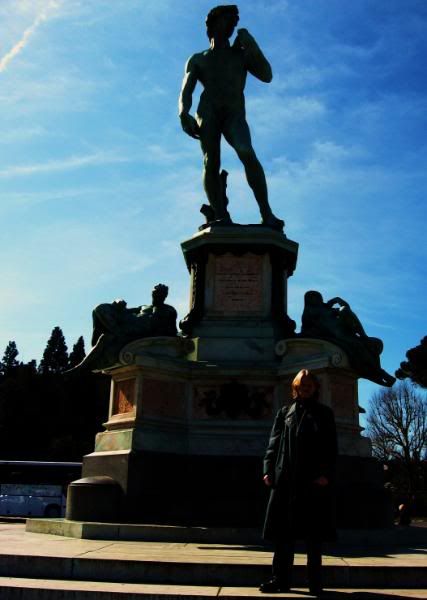
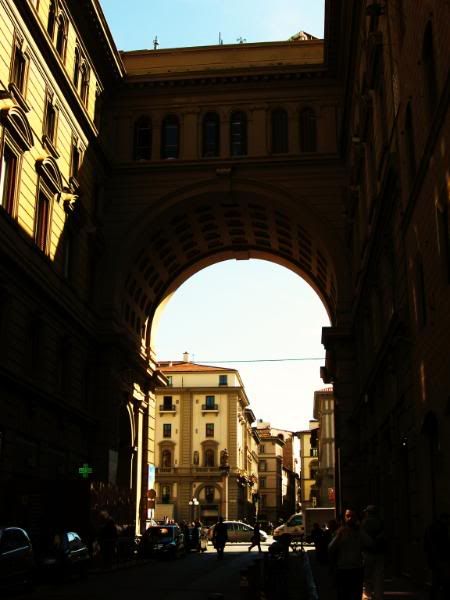
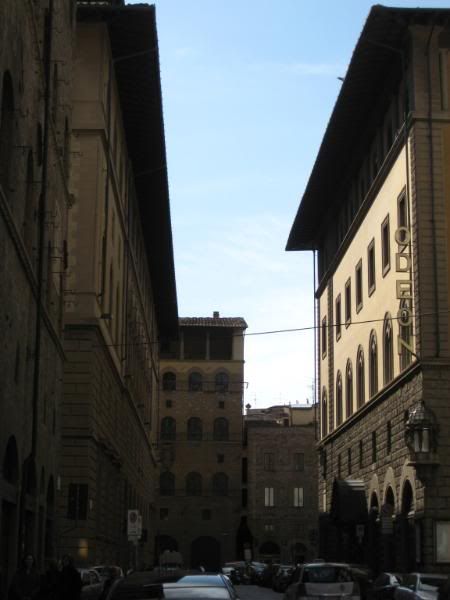
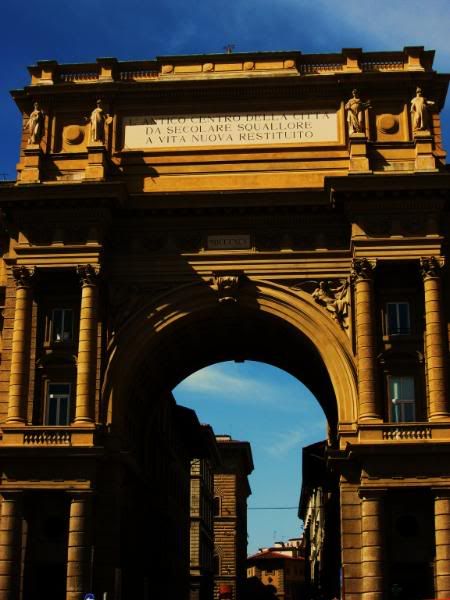
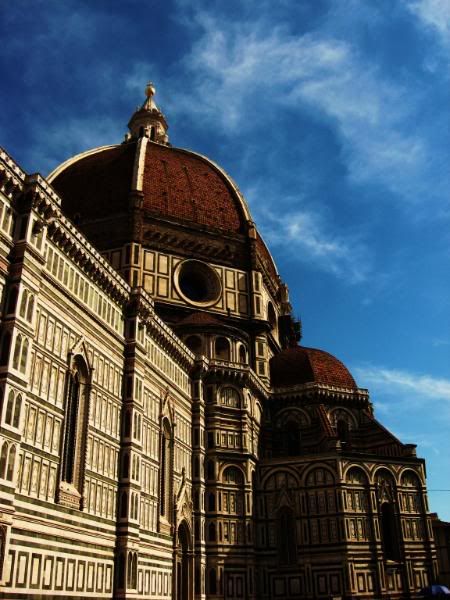
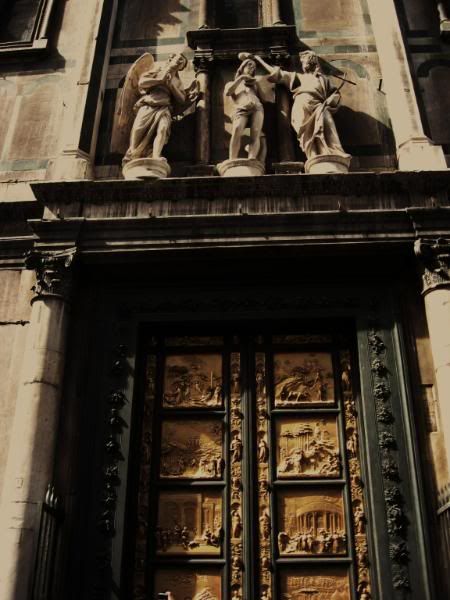
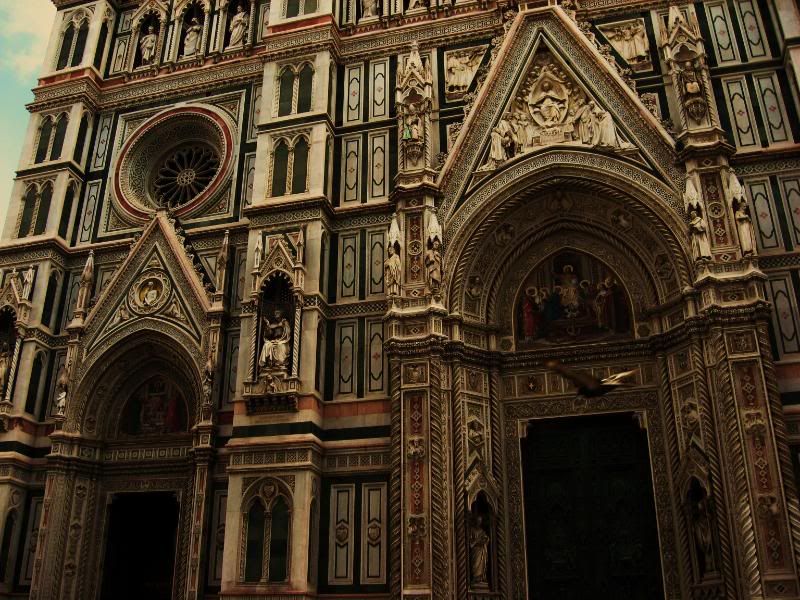
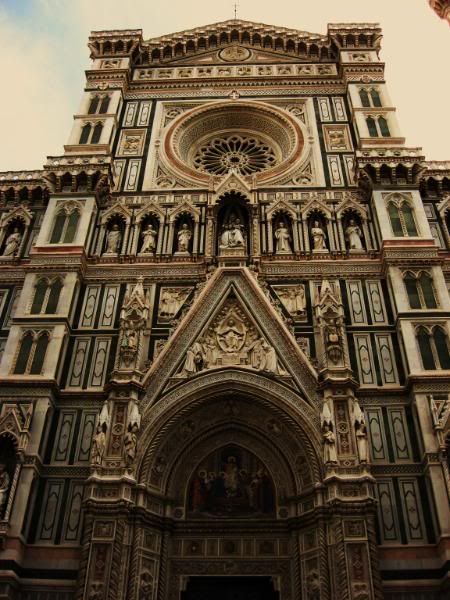
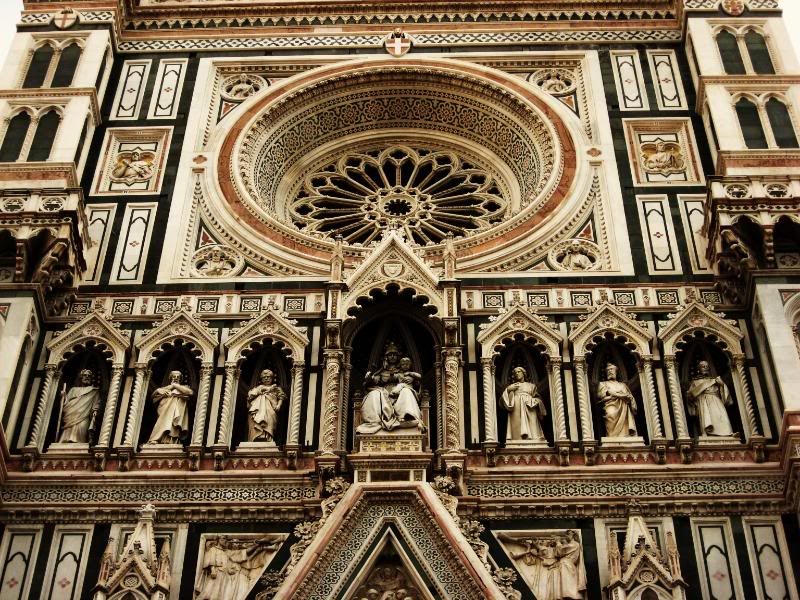 Leonardo's Hill
Leonardo's HillIt was from this hill, where Leonardo put his theory of flight into practice and pushed his flying machine into the air.
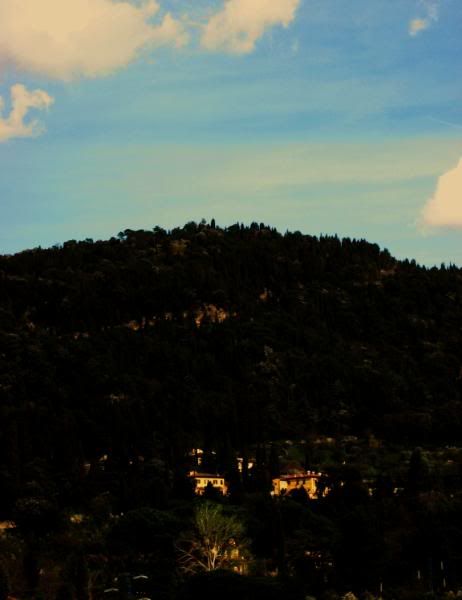 Michaelangelo's Home
Michaelangelo's Home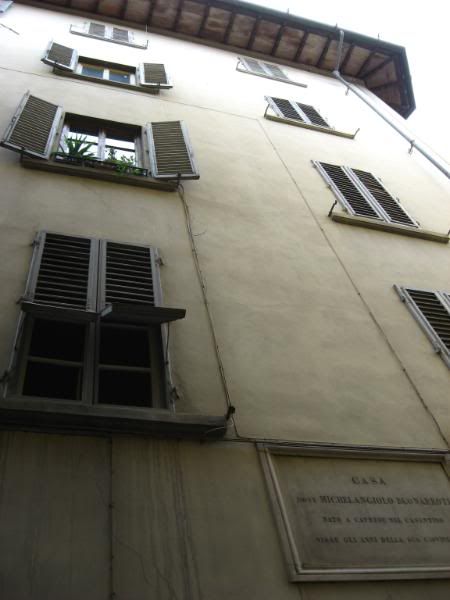
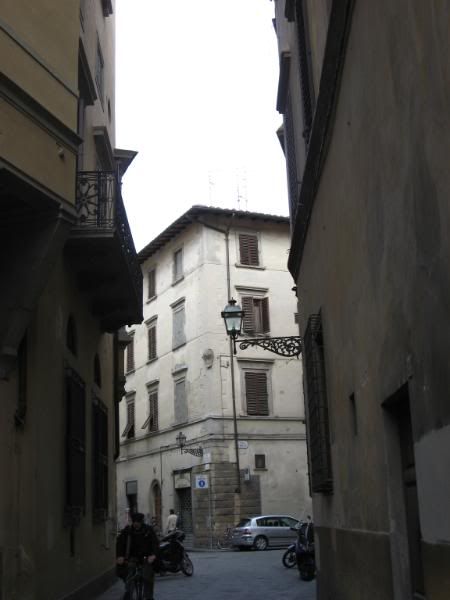
 Perseus with the Head of Medusa
Perseus with the Head of Medusa Medusa was a cthonic feminine spirit with a head full of serpents who could turn any onlooker into stone. Perseus beheaded her and used her head as a weapon before giving it to Athena, who then placed it on her shield, creating a
Gorgoneion – an evil averting symbol.
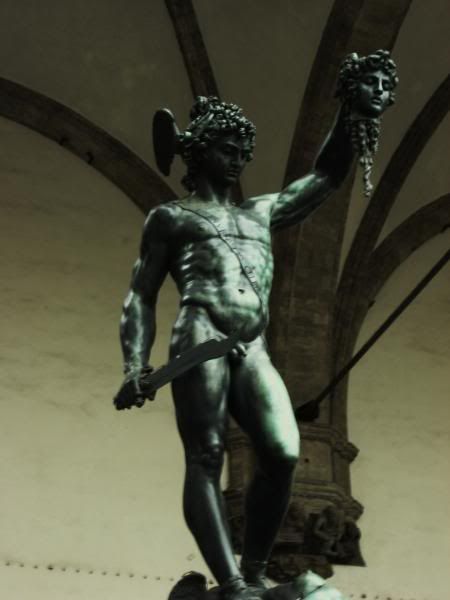

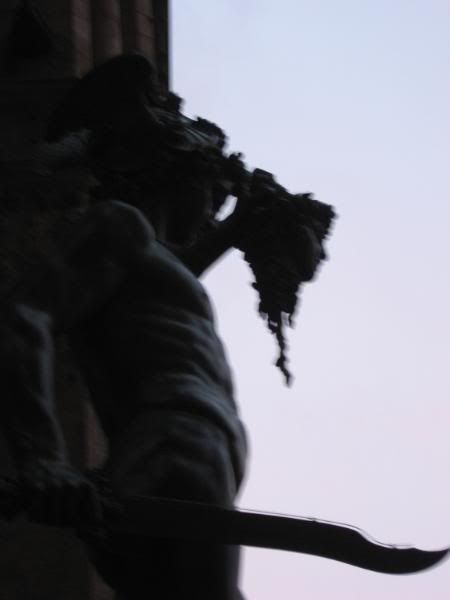 Medusa
Medusa,
by Michelangelo Merisi da Caravaggio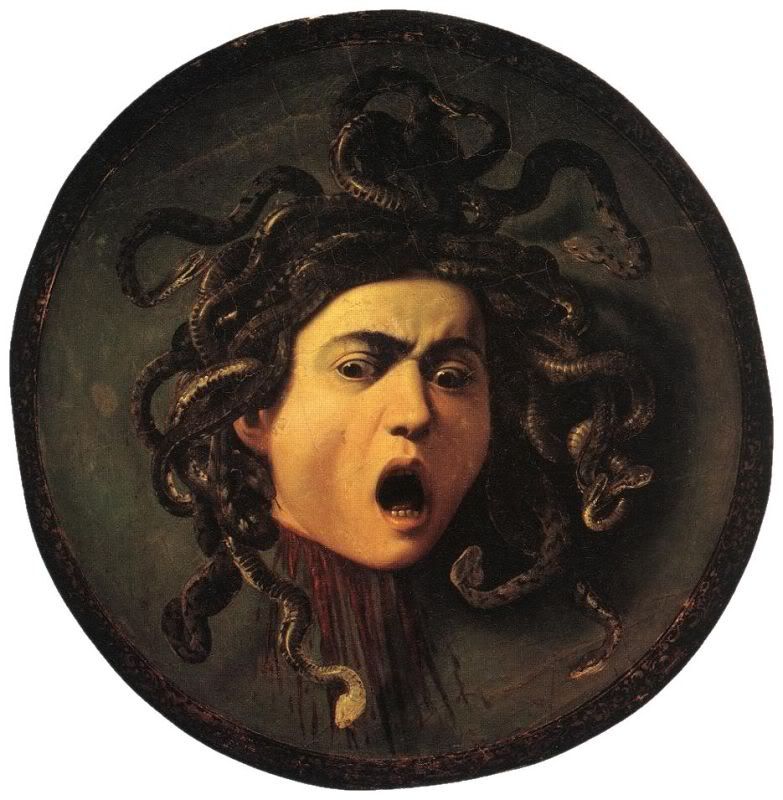 Uffizi Gallery
Uffizi GalleryIn Florance stand a number of museums which hold some of the most beautiful masterpieces of the ages. So incredible, so unbelievably amazing are many of these works, that I could not help but stand in awe for extended moments while the radiating beauty pierced my being. Michaelangelo's
David, for example, I've always known about its existence, still nothing could prepare me for the moment I stood below this masterful creation, where a man transformed a slab of marble into a beautiful ideal of mankind. The art found in museums like the Uffizi Gallery is eternal and will outlive every generation of modern art.
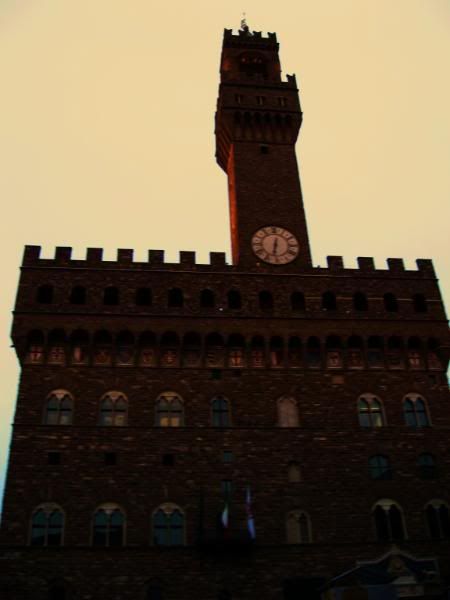 The Birth of Venus, painted by Sandro Botticelli
The Birth of Venus, painted by Sandro BotticelliVenus, often associated with Aphrodite, was Rome's goddess of love. Her son was Eros, fathered by Mars, the god of war. Botticelli painted this through his desire to reach back to decipher the wisdom of the ancients, something we do this very day, and it can been seen in this painting. She emerges from the sea a full grown woman, the sea being the mysterious realm from where the Gods come, and where only the brave venture. She is beautiful, extraordinary, a living archetype – beauty in its highest ideal – She was also a real woman, and Botticelli was so captivated by her, that he desired to be buried at her feet when he died – his wish was fulfilled – his tribute to beauty survived time and continues to reach the souls of those who feel it.
Hymn to Aphrodite – from the Homeric Hymns
I will sing of that beautiful goddess who wears a crown of
gold,
Revered Aphrodite, who owns all Cyprus surrounded by
sea
Each circling head-dress of towers. There strong Zephyr's
moist breath
Through crashing waves conveyed her, amid the soft foam, to
shore.
The Seasons whose fillets are golden gave her a welcome of
joy,
And wrapped her in deathless clothes. Upon her immortal
head
They placed a beautiful crown of exquisite craft in gold;
With flowers of mountain's copper and costly gold they
pierced
The lobes of her ears; and about her soft neck and gleaming
breasts
They adorned her with chains of gold, of the sort in which
they themselves,
The Seasons whose fillets are golden, would both go adorned
to the gods'
Lovely dance and their father's abode. But then, her
adornment complete,
They led her amongst the immortals, and they were amazed at
the sight.
They gave her their right hands in greeting, and each god
prayed that she be
His own wedded wife to bring home, so amazed were they at
the form
Of Kythera's goddess who wears a crown of the violet's bloom.
Farewell to you, black-eyed goddess whose spirit is sweet
and kind;
In the contest permit this bard to win, and make ready my
song.
But I will call to my mind both you and another song.
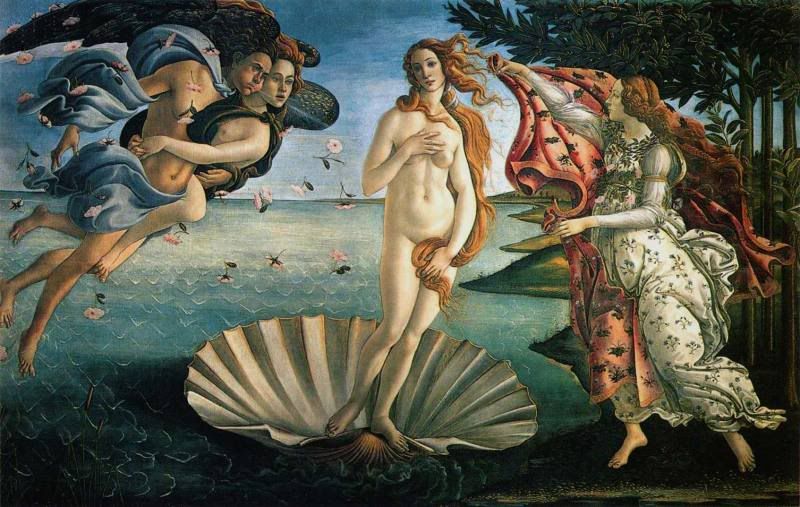 The Annunciation, painted by Leonardo Da Vinci
The Annunciation, painted by Leonardo Da Vinci 
The following is an extract from a dialogue between Hermann Hesse and Miguel Serrano taken from
El Círculo Hermético by Miguel Serrano:
'I have just come from Florence,' I said; 'I went there just to see Leonardo's painting of “The Annunciation” in the Uffizi Gallery. I stayed there almost an hour looking at it.'
'Why were you so especially interested in that painting?' he asked.
'It's difficult, but I will try to explain. In Leonardo there is a something, a message that can only be perceived, not interpreted, just as in The Journey to the East. The painting of “The Annunciation” seems literally to vibrate. The angel's wings flutter in the air, and the fingers of his right hand as he makes the sign really seem to be alive. Something seems to be transmitted from those fingers to the young Virgin, but the really searing message comes from the eyes. It's as though this terrible angel were actually delivering Christ to the Virgin with his look, as though he were actually impregnating her with him. She is frightened and childish, and receives the message with her left hand while her right rests on the books of the Prophets. That is why she says, “It was written,” but I dare say Leonardo put that in only to please the Curia. The truth is that the Virgin is so surprised that she accepts everything; in fact she has been hypnotized, possessed by the angel, and she will never be herself again. In the background of the painting there is that dreamlike landscape so typical of Leonardo, which seems to represent the Unconscious, from which everything comes – mystery, destiny, Christ and the very angel that appears in the painting.'
Hesse had listened attentively while I spoke, and after a pause, he said, 'Leonardo was a universal genius because his painting was magical. Most people only understand what they feel with their senses; they know nothing of what lies behind them. Only magic can express that which is unreachable in any other way. There is also another kind of art, which is essentially evocative.'
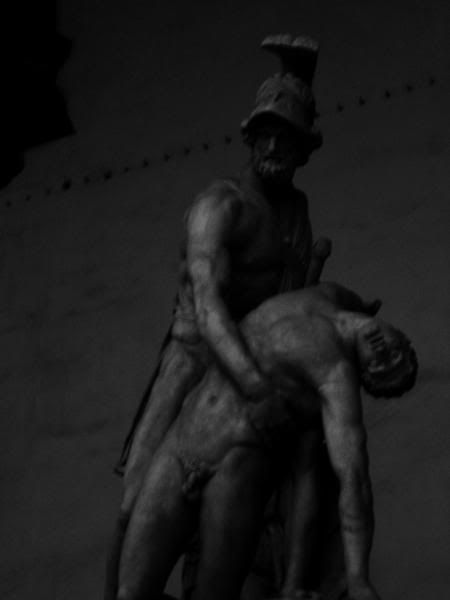
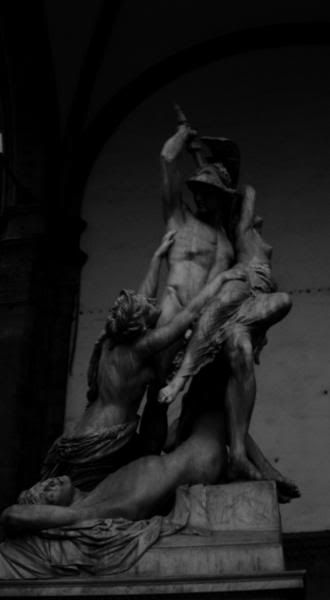
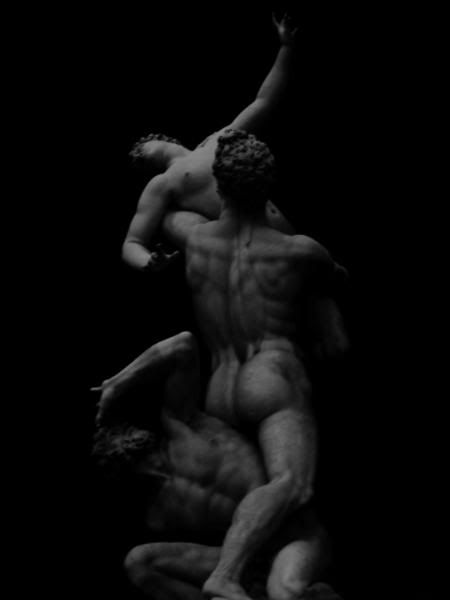
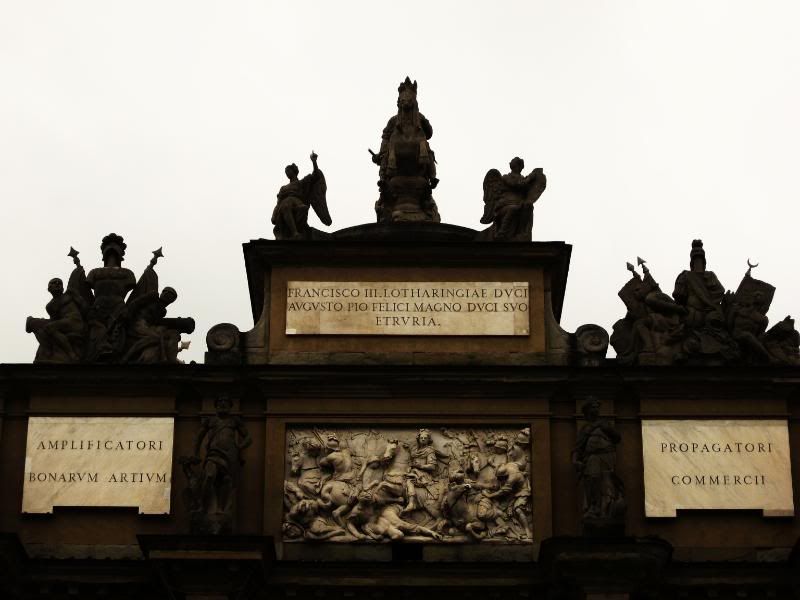
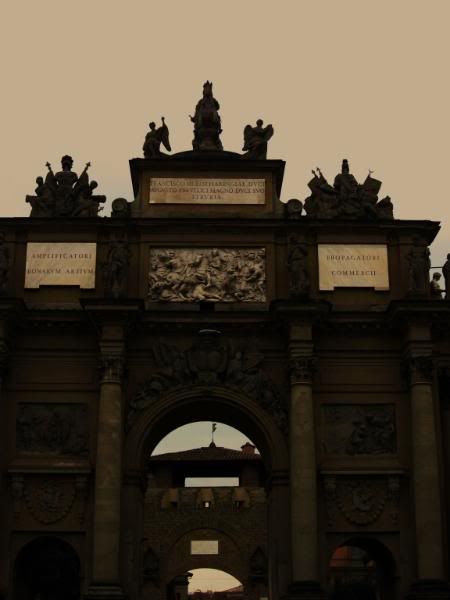
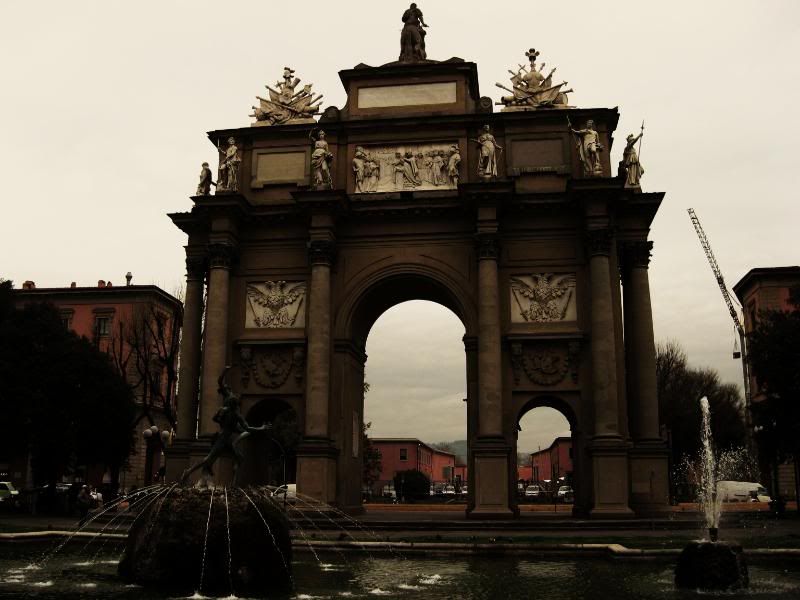
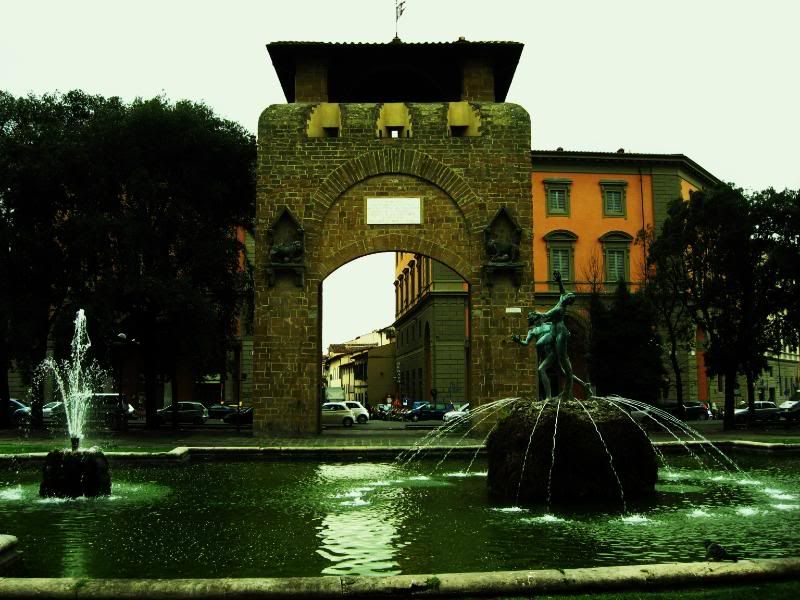

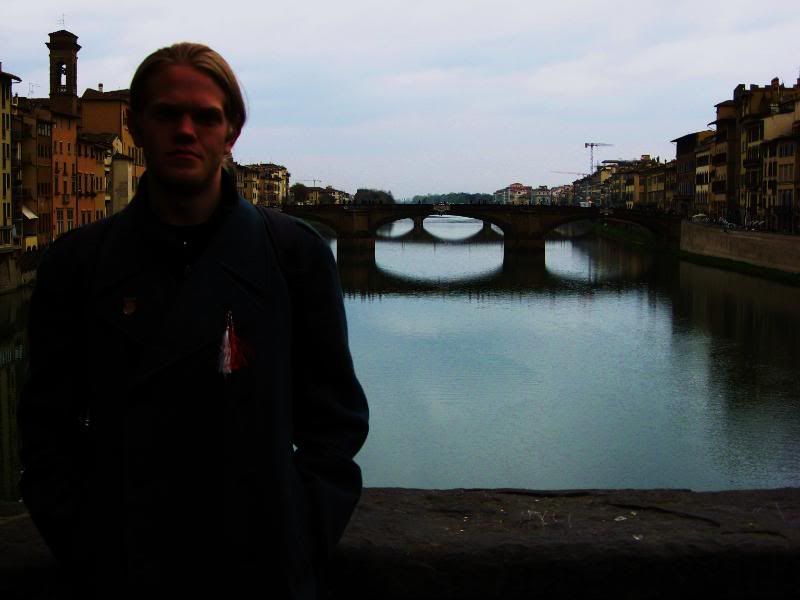 Chianti
ChiantiThrough the green rolling hills of Tuscany, I left Florence and arrived at a very old, family owned winery and farm. I was taken on a tour of the winery by horseback, which lasted over two hours. I saw the many grapes grown by old tradition to make the very same Chianti today. It is easy to get lost in the beauty of this region. I had the good fortune of arriving shortly after Spring's awakening, which made the dominant green hue of the region ever radiant, and the presence of life finding the birth and rebirth moment of the cycle vivid. I arrived back to the farm and met the nearly century old grandmothers who still prepare Tuscan food from the freshest ingredients. I was given a glass of very young wine, no older than seven months, then a traditional Tuscan meal. I was explained the thorough intricacies with which the Tuscans fashioned their diet and their wine, then I realized that, though this place is far away from the mountains, there is a silence and stillness of itself found in living a meticulous yet calm life. One could spend the very last years here, and it may make one's entire life worth living.
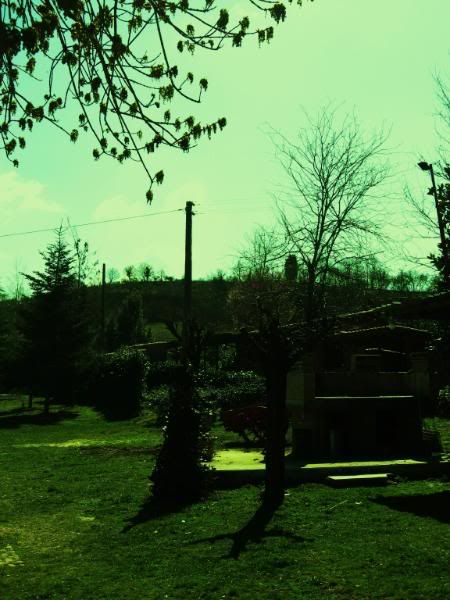
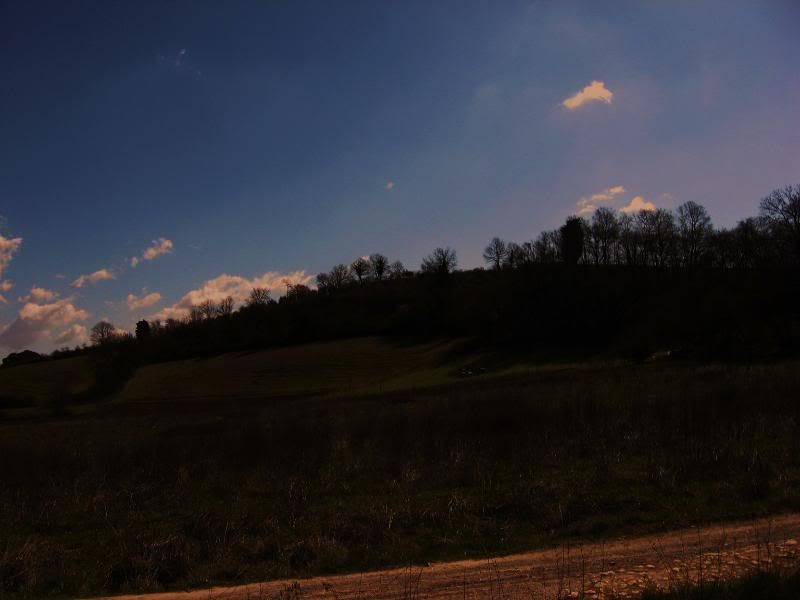
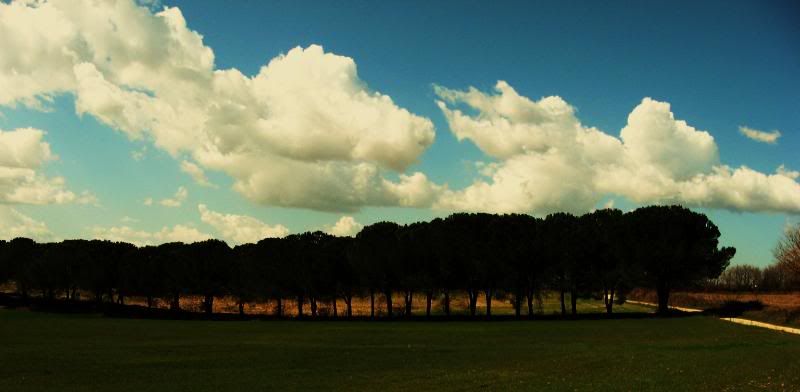

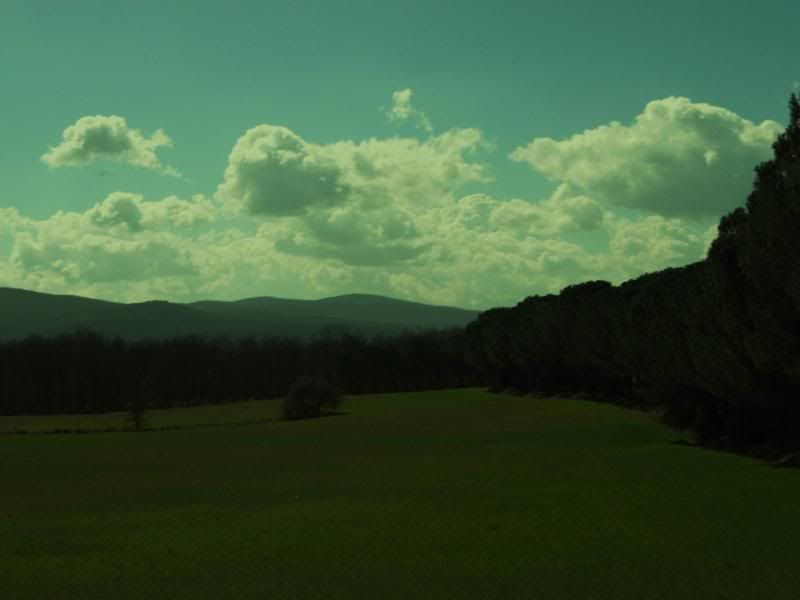
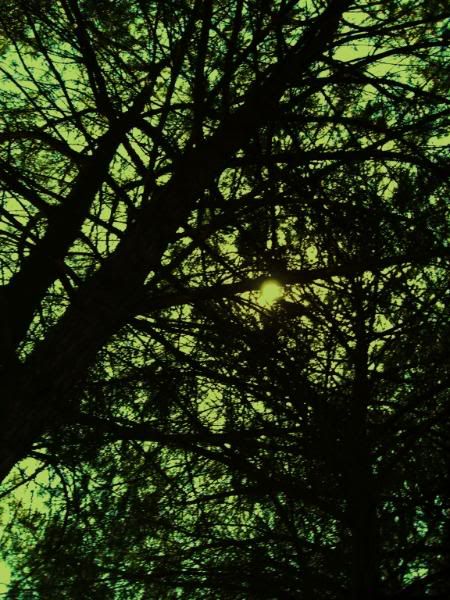
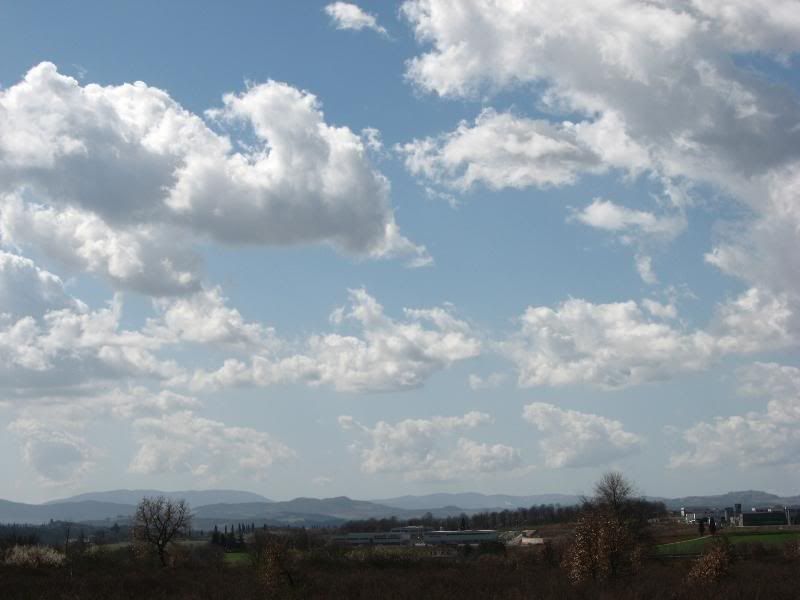
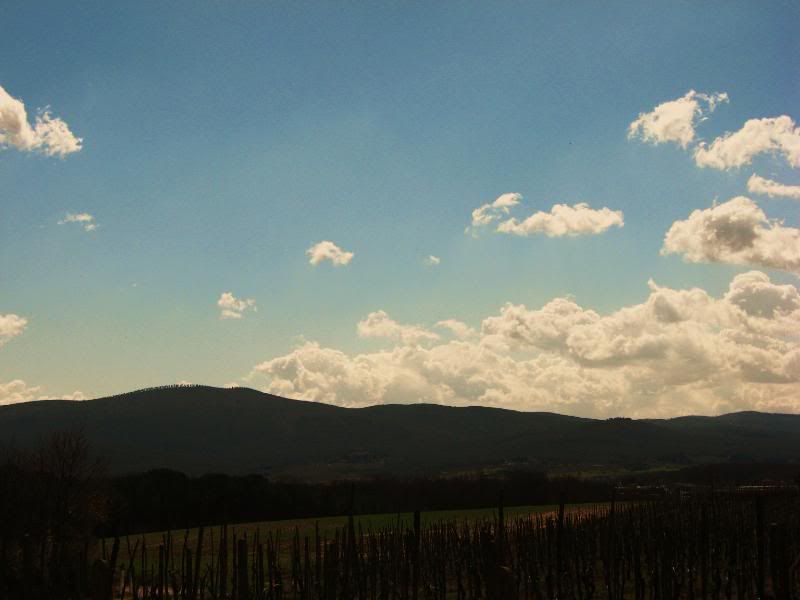
 The Infant Here is Only Three Days Old
The Infant Here is Only Three Days Old
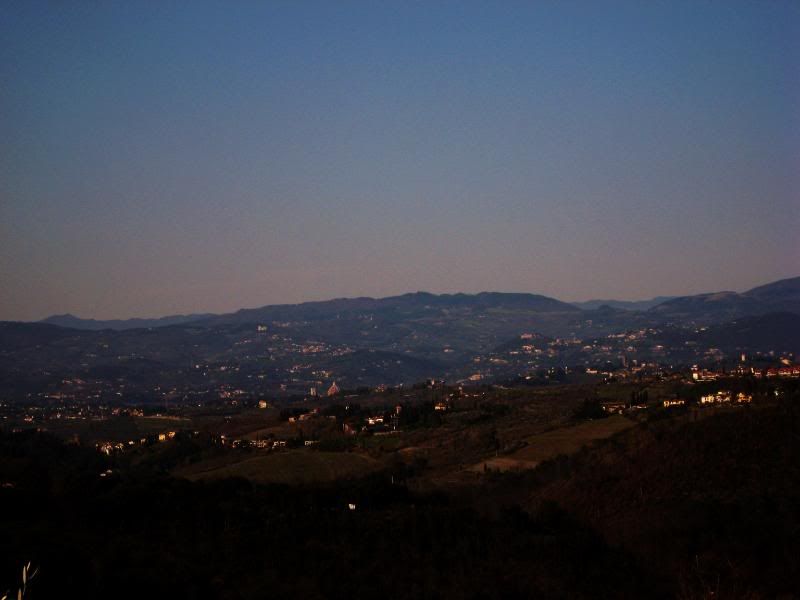
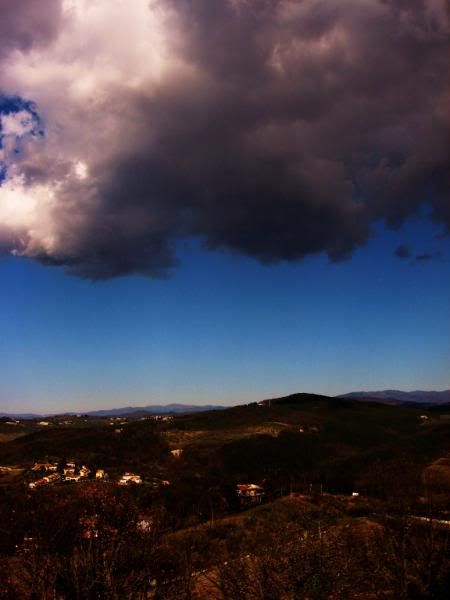
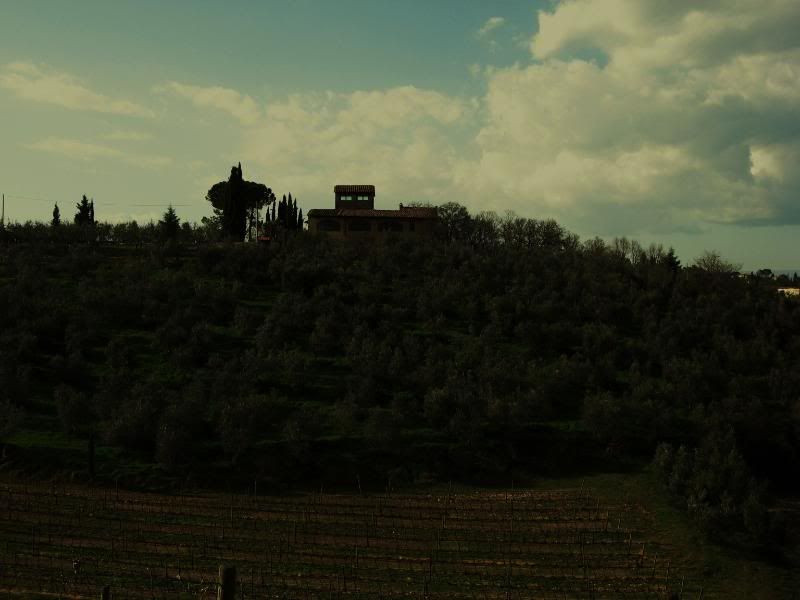

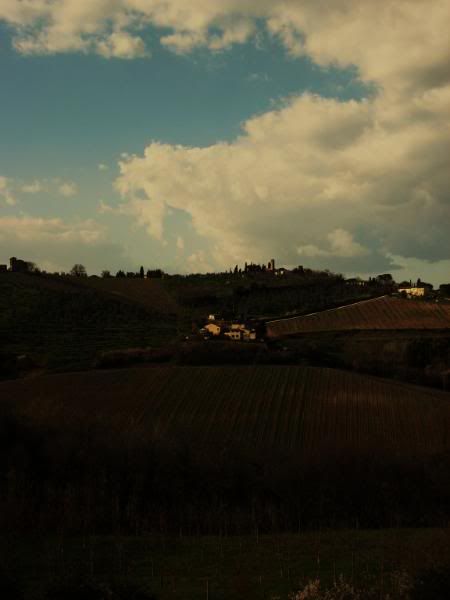
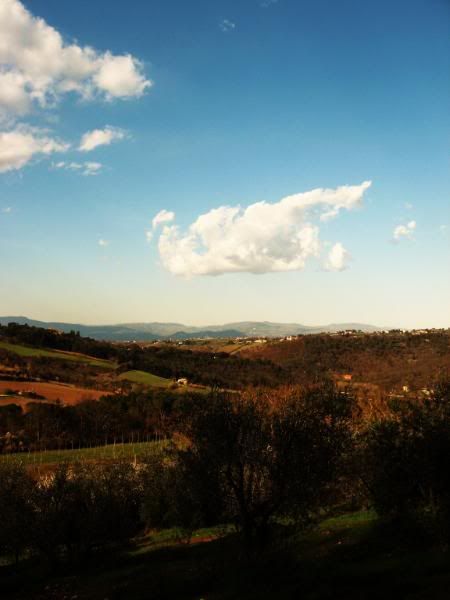
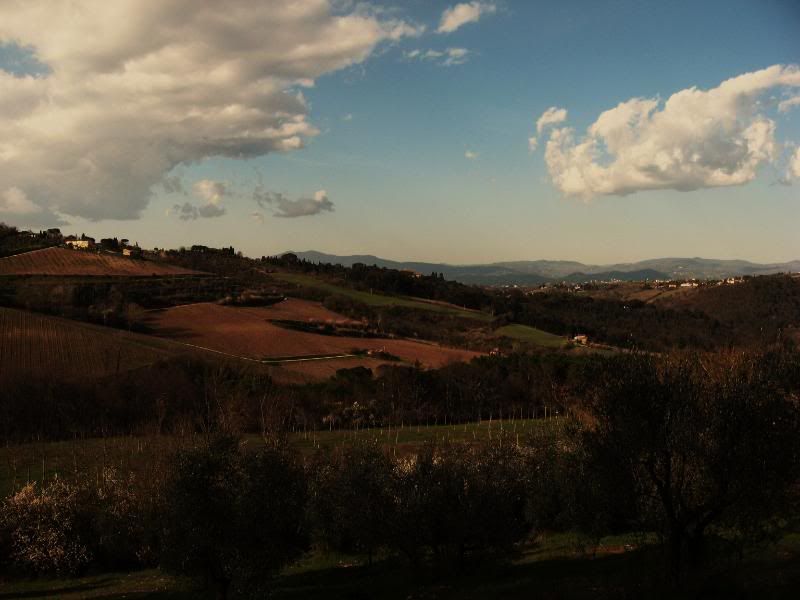
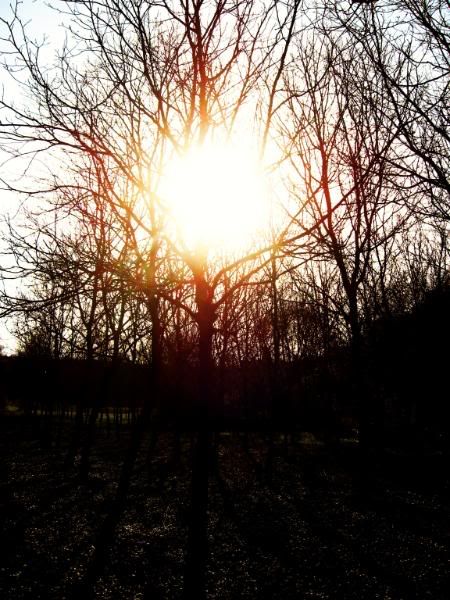
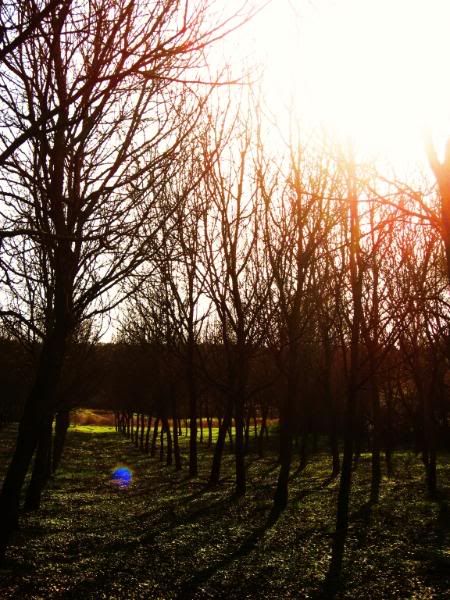
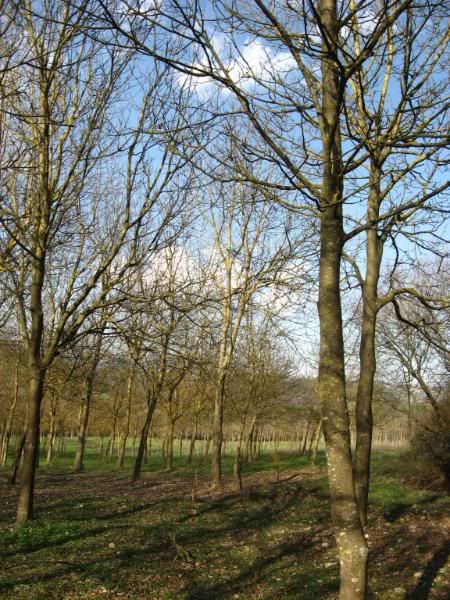
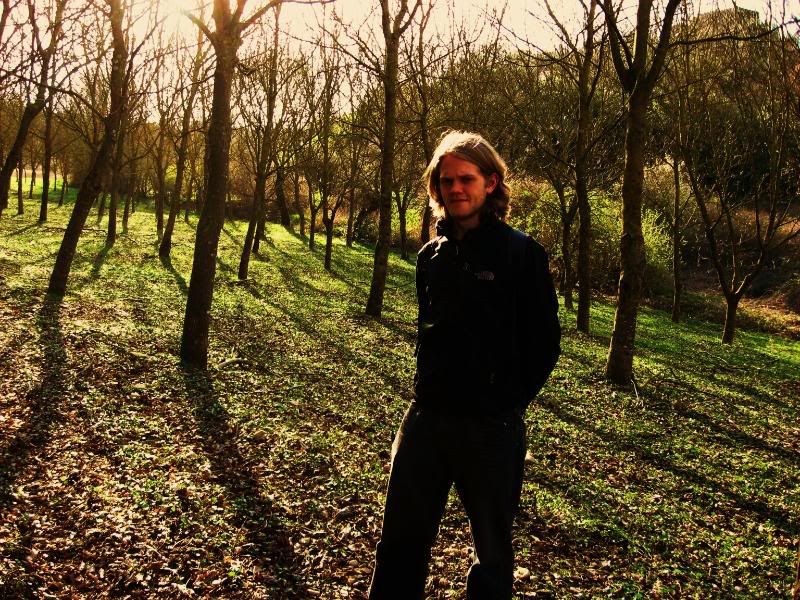
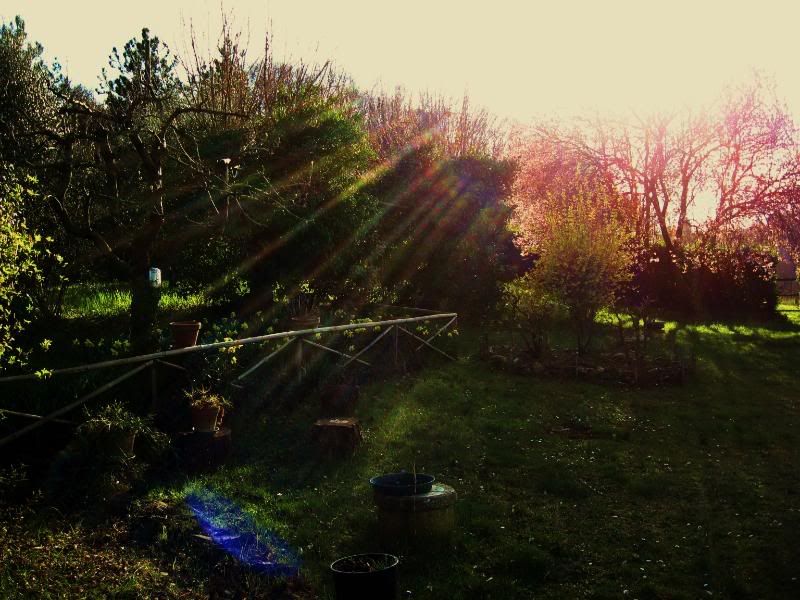
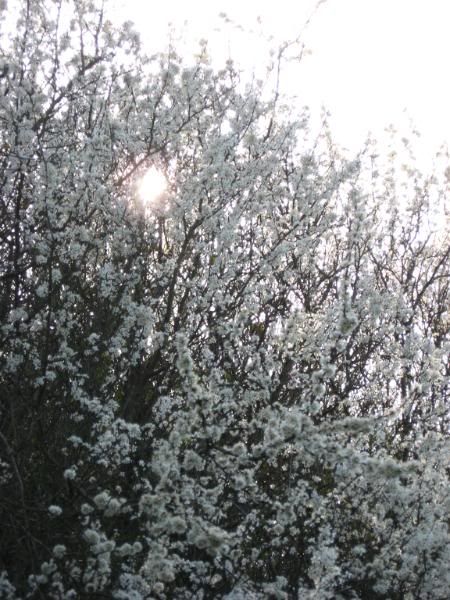


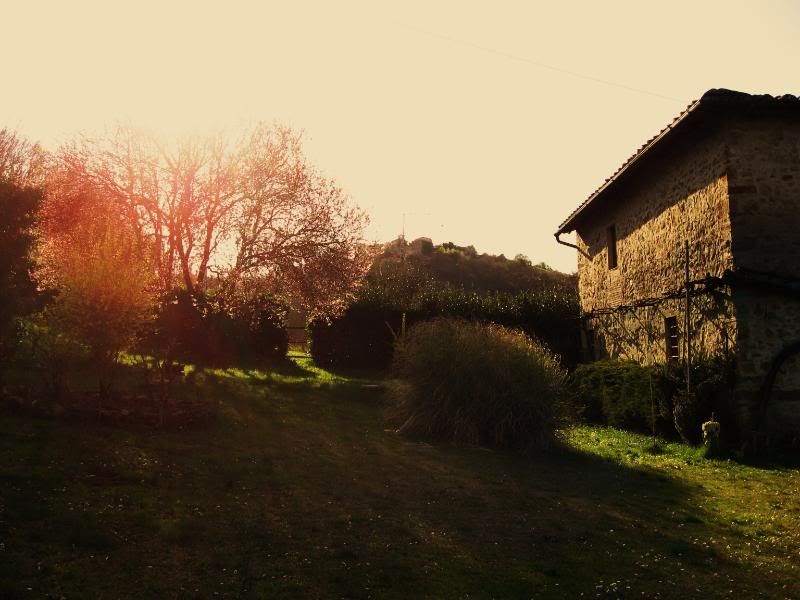 Pisa
PisaStill in Tuscany, I arrived in Pisa, Galileo's birthplace, and took a stroll to the famous Piazza dei Miracoli (Miracle Square). There is more to Pisa than Miracle Square, but I had not the time to venture beyond the ancient fortress. Besides, it was enough trouble trying to get past the onslaught of pushy Africans selling worthless merchandise – even eye contact would ruin anyone's chance at a peaceful entrance into the square, but all of that unpleasantness was easy to forget on top of the Leaning Tower, and inside the Duomo. Miracle Square remains a living work of art despite the rest of long declined Pisa.

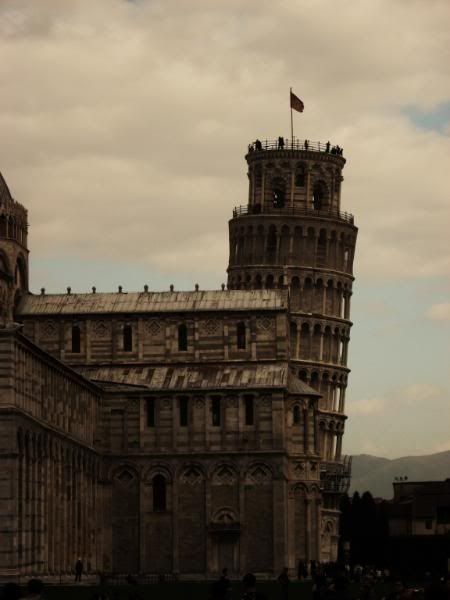
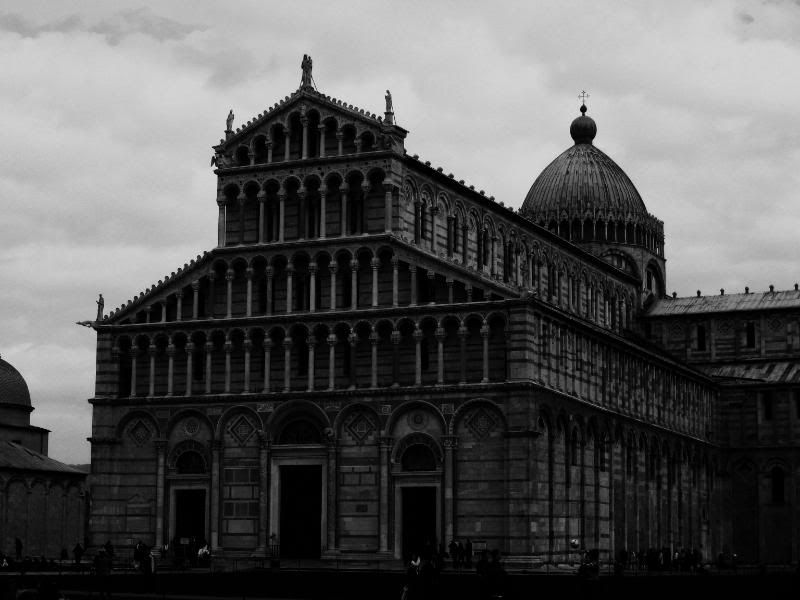
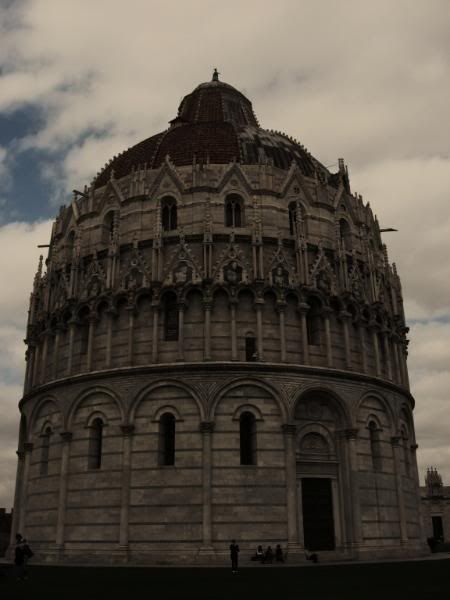 The Leaning Tower of Pisa
The Leaning Tower of Pisa Nobody knows who designed this tower because nobody wanted to claim responsibility for it. Aside from the faulty foundation, it is an amazing work of art. The tower is constructed out of solid marble, which took nearly 180 years to complete, and displays both Gothic and Roman traits. The seven bells atop the tower sound notes of a major scale. Ascending the spiral staircase in this tower is a quite an experience, especially if one has never been in a building with an uneven foundation. Gravity feels erratic, unbalanced. Also, it was from these tower windows where Galileo dropped various objects and discovered the equal force of gravity, then boldly faced grave heresy charges.
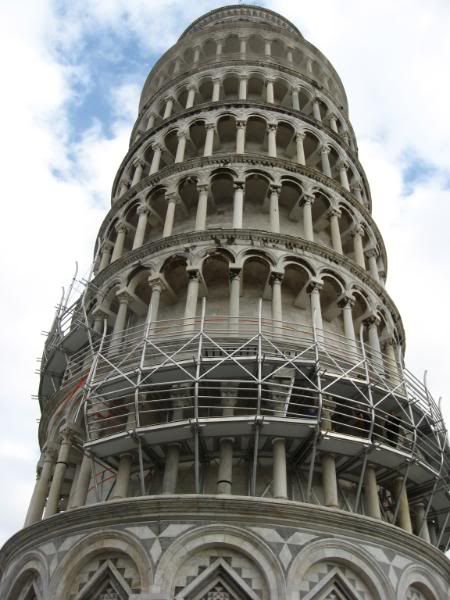
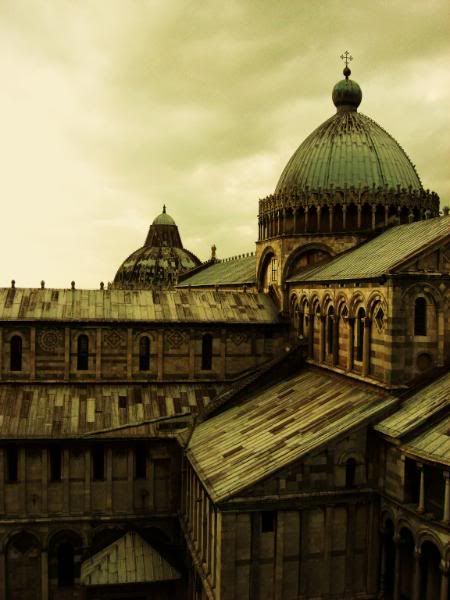
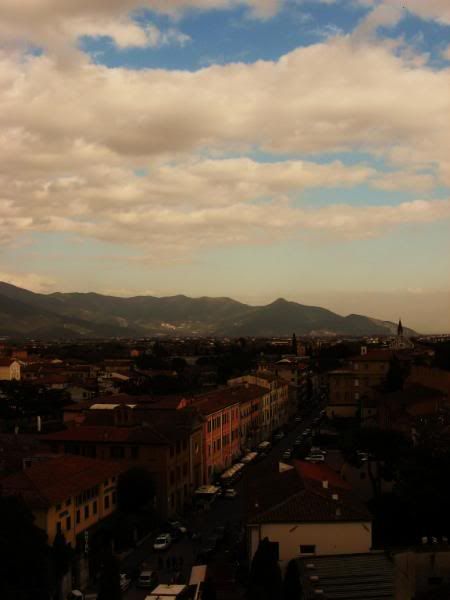
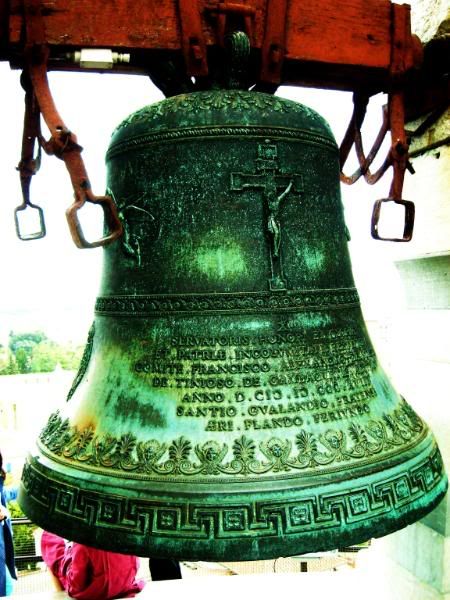

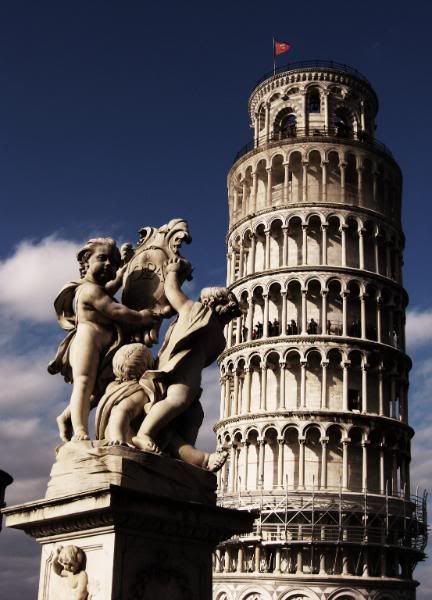

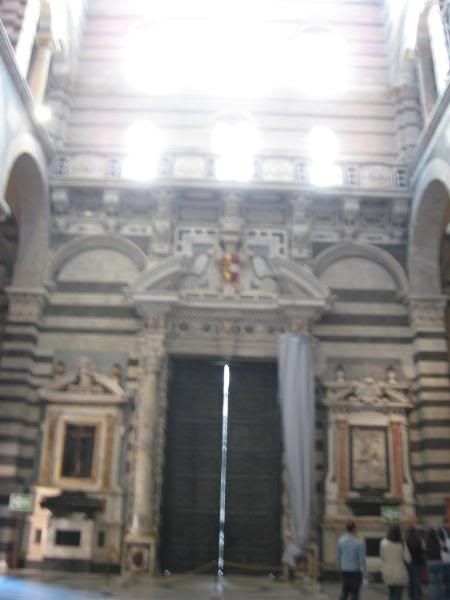
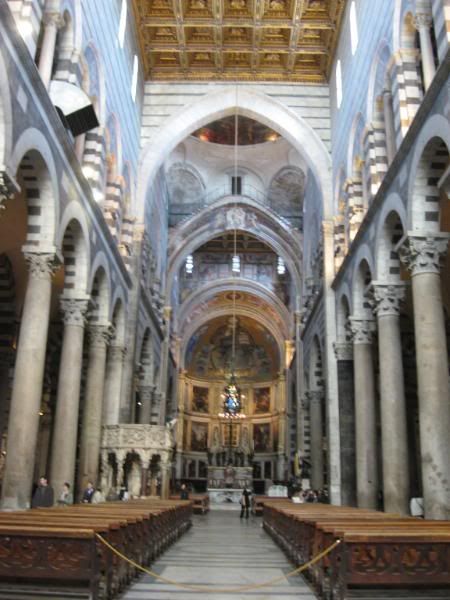
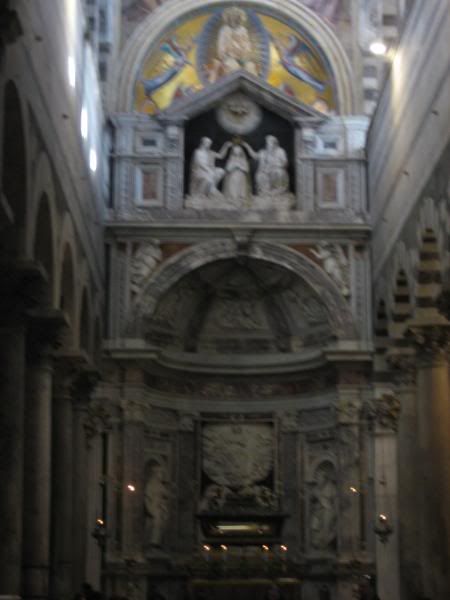
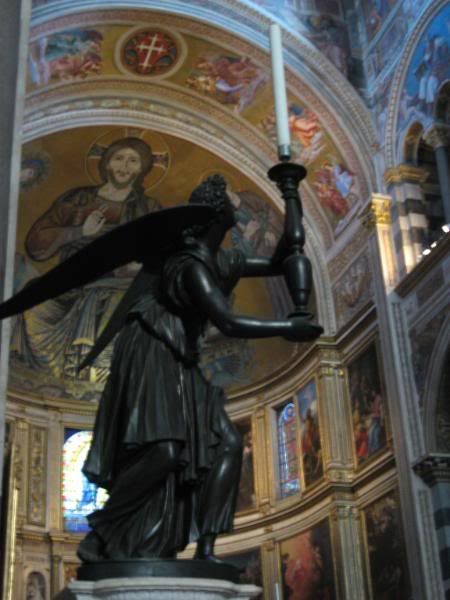


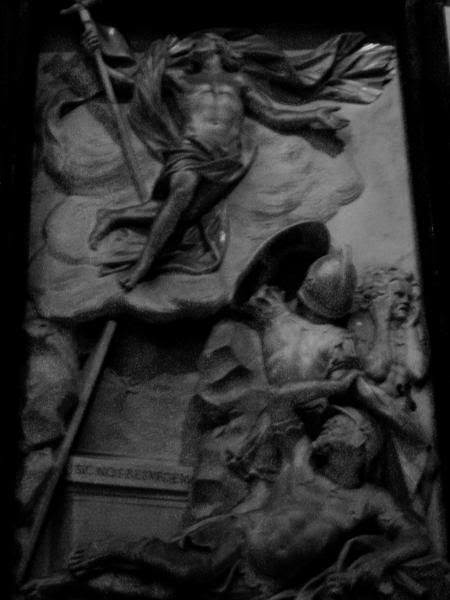
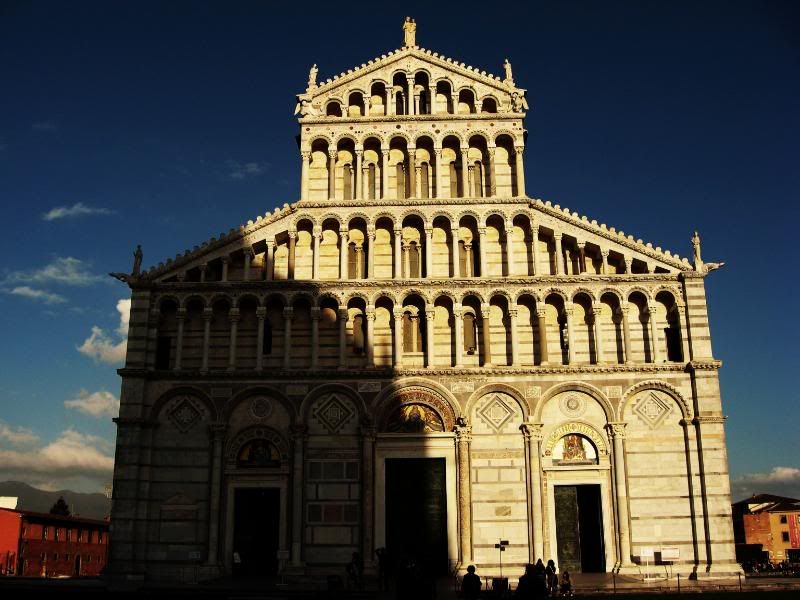
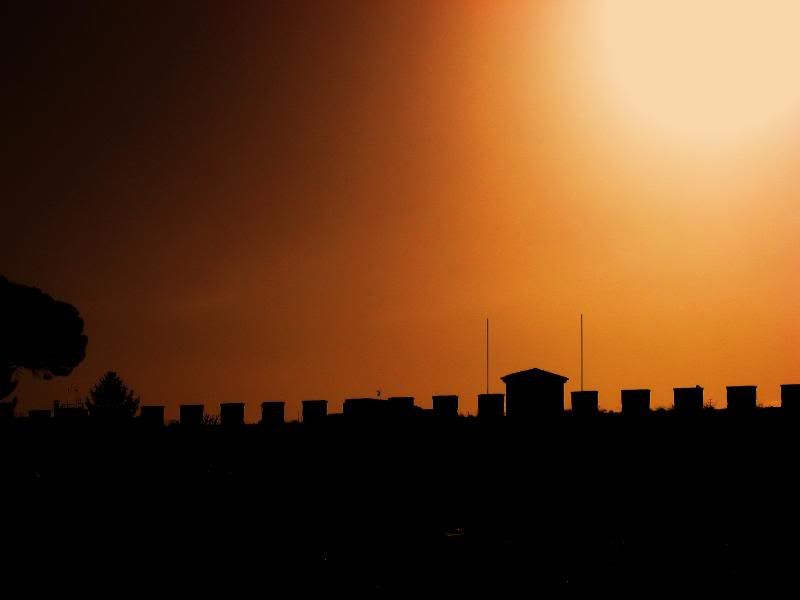 Naples – Napoli
Naples – Napoli Below Vesuvius and near Pompeii lies one of Italy's western beach cities, and probably one of her worst cities. Aside from a few medieval fortresses and Baroque style buildings, there is nothing to be found here that cannot be found in any other modern major city. Even for Italy, this place seemed ruined by urban decay beyond any possible salvage, and it remains at the mercy of Vesuvius.
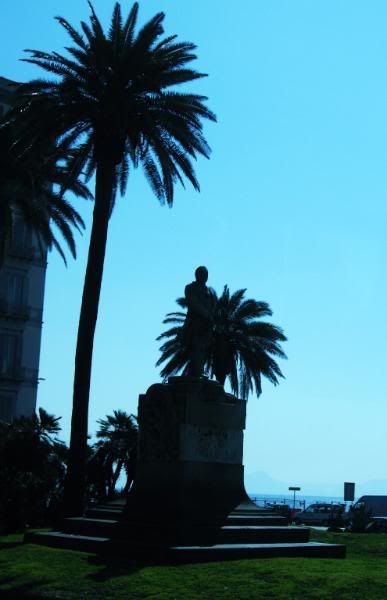
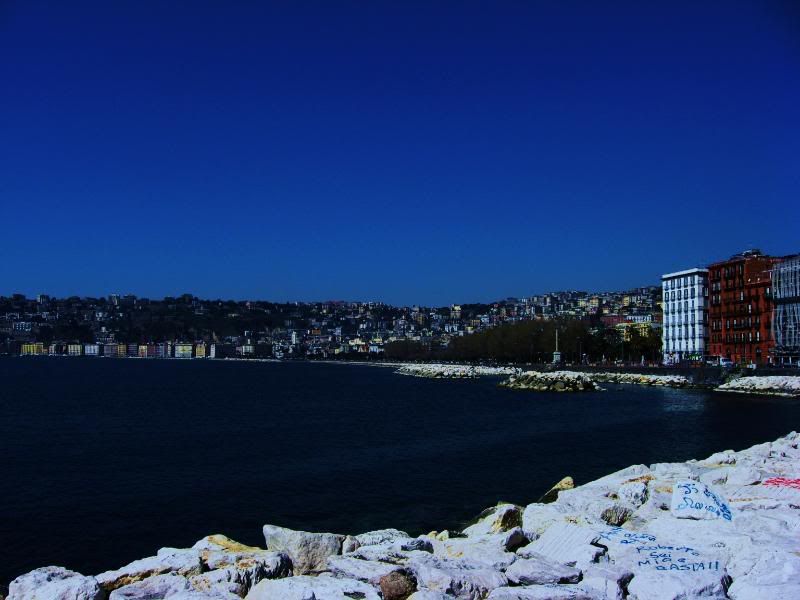
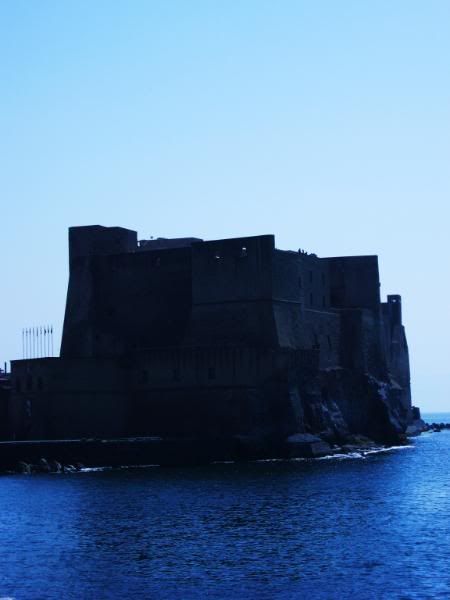
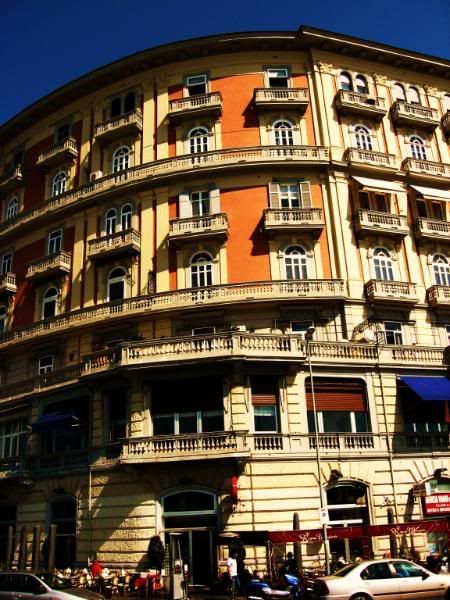 Pompeii Many a calamity has happened in the world, but never one that has caused so much entertainment to posterity as this one
Pompeii Many a calamity has happened in the world, but never one that has caused so much entertainment to posterity as this one.
Johann Wolfgang von Goethe,
Italian JourneyPompeii was neither a Roman fortress nor a military compound but a port city, much like Amsterdam, where import and export flowed steadily and where people from all over the world entered and left the empire's peninsula. Those who went through found Pompeii's essence in its restaurants, businesses, markets, laundromats, brothels, hotels, bathhouses, theatres and mithraic temples. In the Summer of 79 A.D., Vesuvius exploded with a massive eruption covering the city in over 20 meters of scorching hot volcanic ash, killing everything instantly, freezing this small yet unique piece of the Roman world in time. Fossilized humans and animals continue to be found around the archaeological site, along with more and more tools and masterpiece crafts of the Romans. Beautiful art in the form of mosaic tiling, sculpture and paint depicting the Roman gods as well as crudely drawn vulgar Latin graffiti cover the walls of Pompeii, showing that large cities, no matter the time, never fail to possess like faces and are evermore cyclic in nature.
Having lived in a medieval town and attended a 700 year old university, I've gained a pretty sharp sense of how old Europe is. What the forebearers of Europe built was meant to endure time, one of the harshest elements of all, and much of it did. Arriving in Pompeii however, I realized I had stepped into a very different place, one that was frozen in time for well over a millennium. I proceeded down the streets of an ancient Roman city that had not been touched by the middle ages, nor the Renaissance, neither by the Enlightenment nor progressive modern ugliness despite the nearly three centuries of tourism it has endured. Pompeii was accidentally rediscovered in 1748 and has only been uncovered, preserved and examined. It's a popular destination for archaeologists as the uncovering continues without end – that is, until Vesuvius erupts again, which has always been imminent.
August 24th 79 A.D. - Eruption
1748 – accidental rediscovery

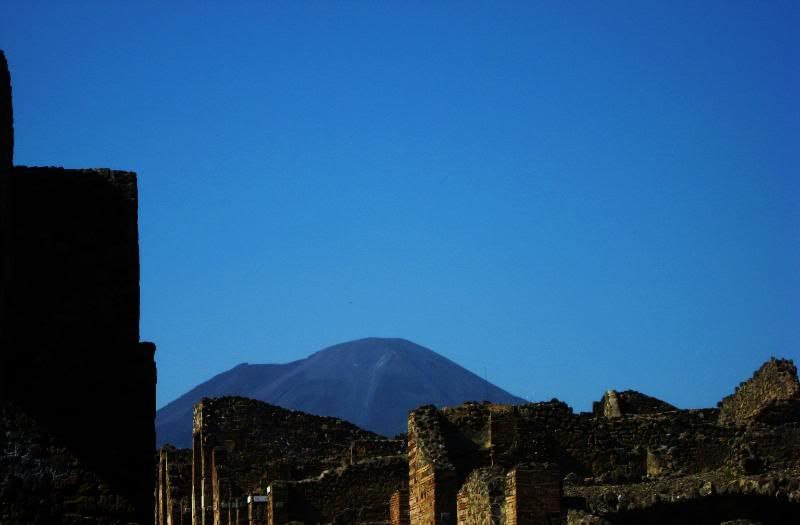
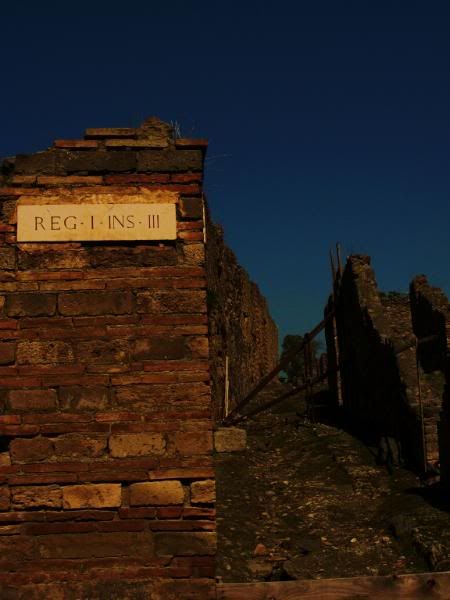 Roman Street Market
Roman Street MarketSeen here is an example of the cyclic nature of history. Old concepts buried beneath ash for an age were reinvented in the middle ages and are still used by us.
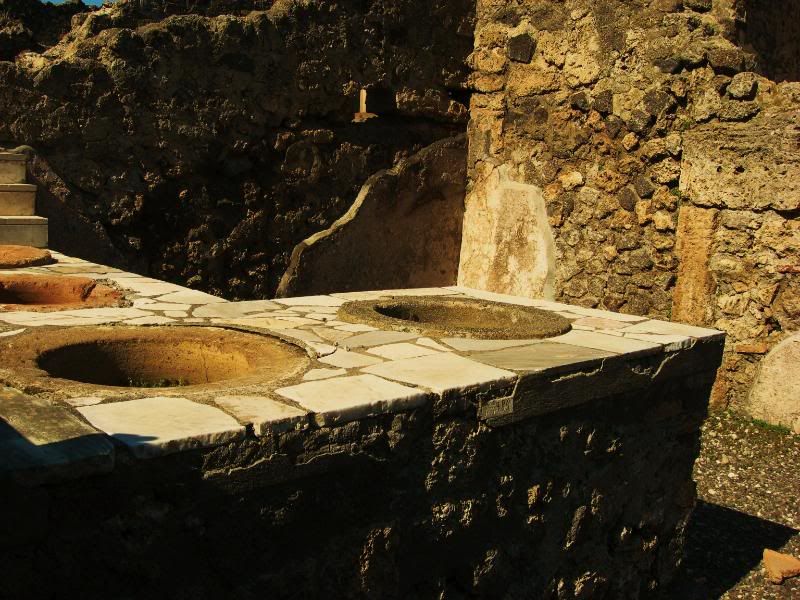
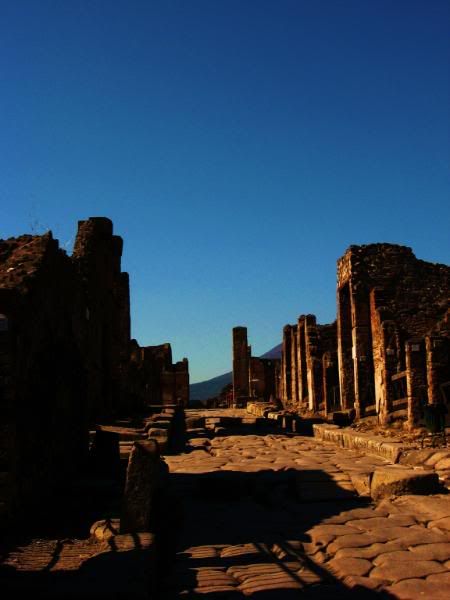
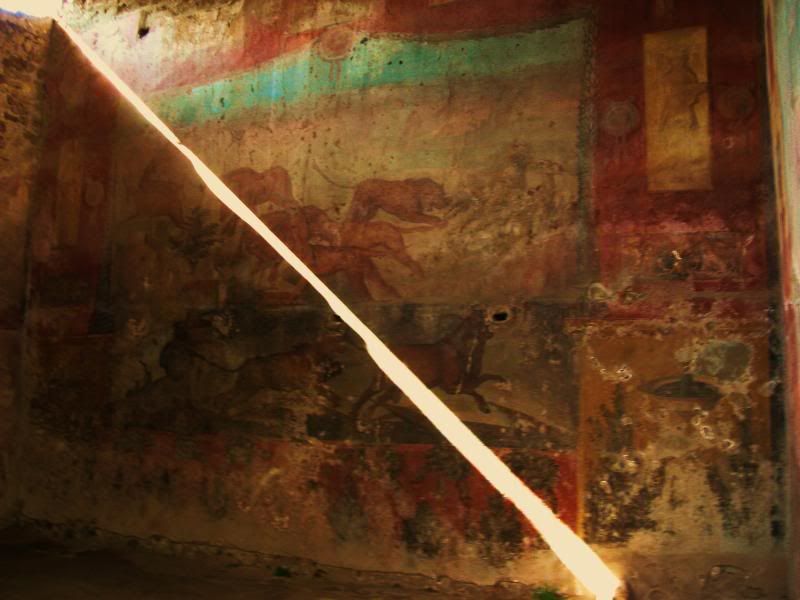
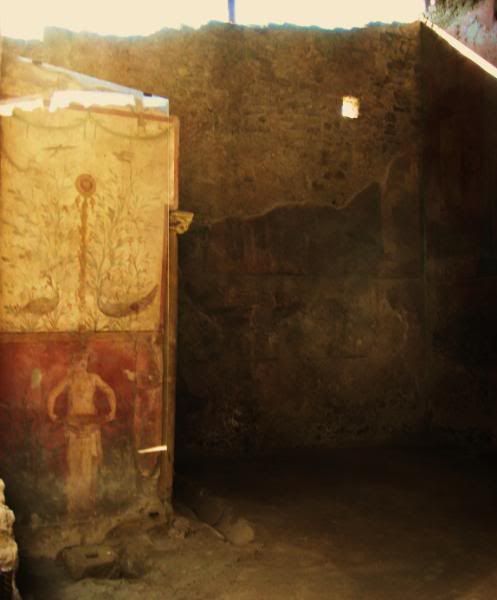

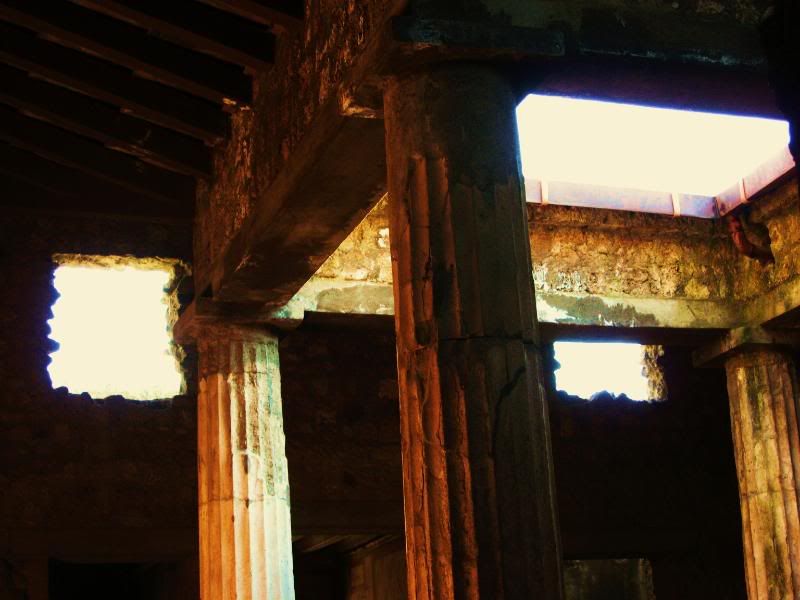
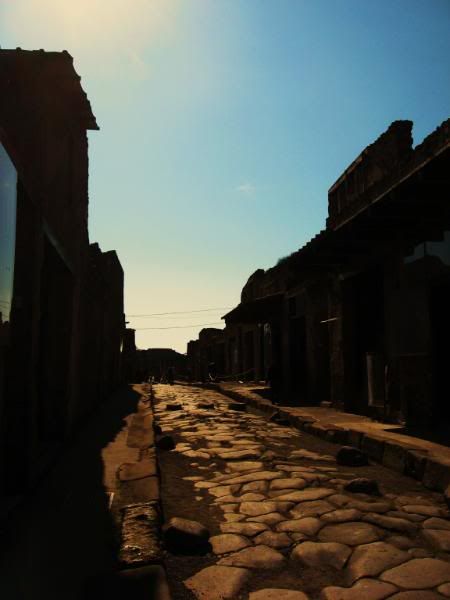
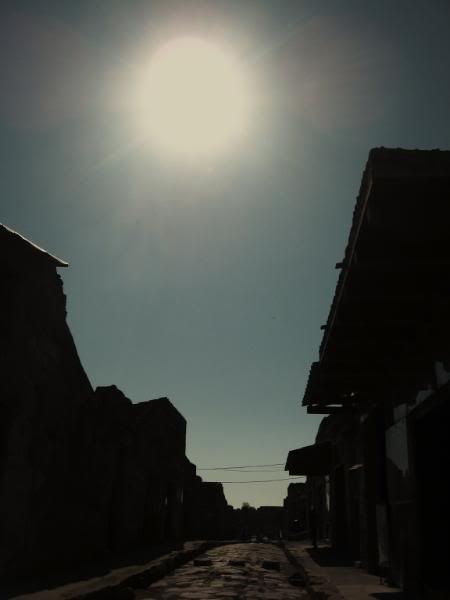
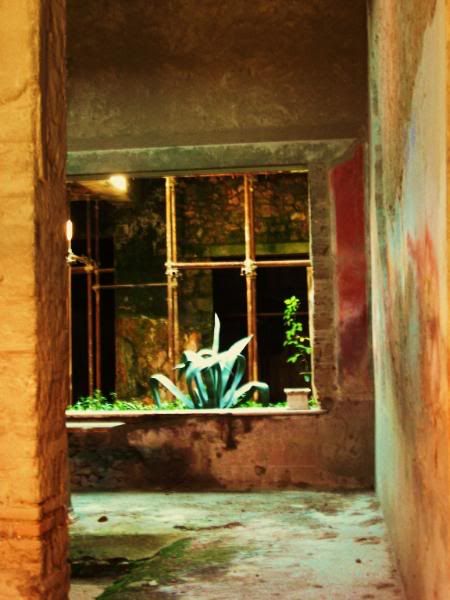
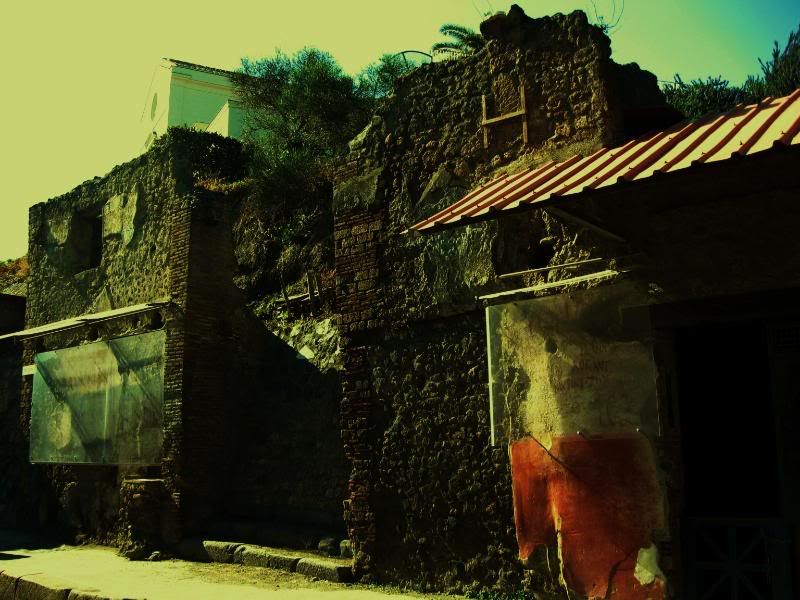
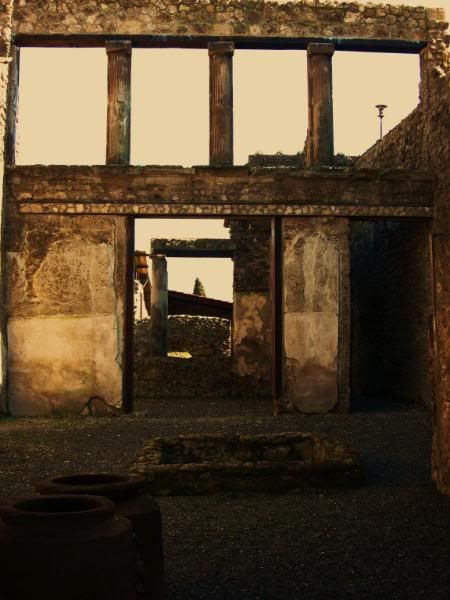
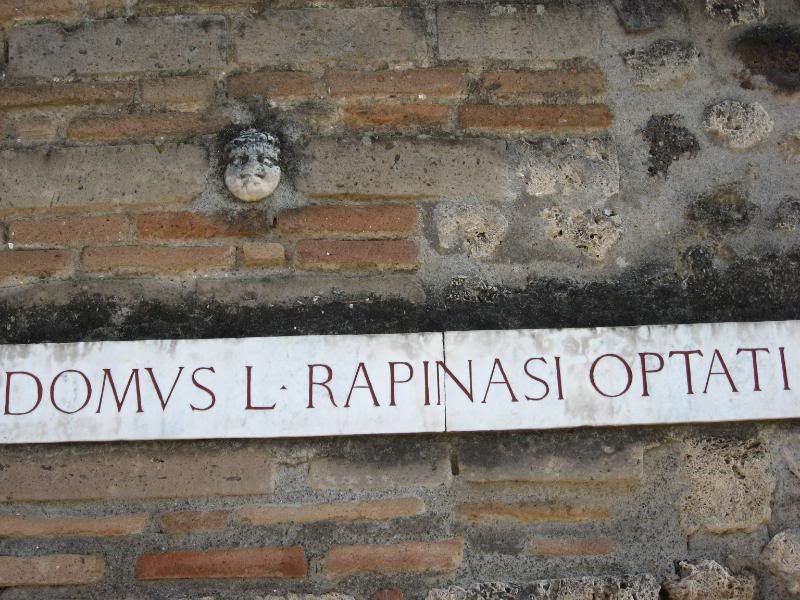
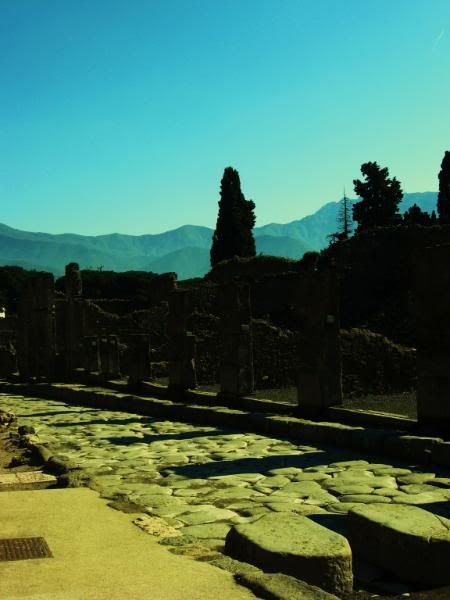 Whorehouse Accommodation
Whorehouse Accommodation In the brothel there are pictures depicting different sexual positions which non-Latin speakers used to order a moment of ecstasy on a concrete bed.
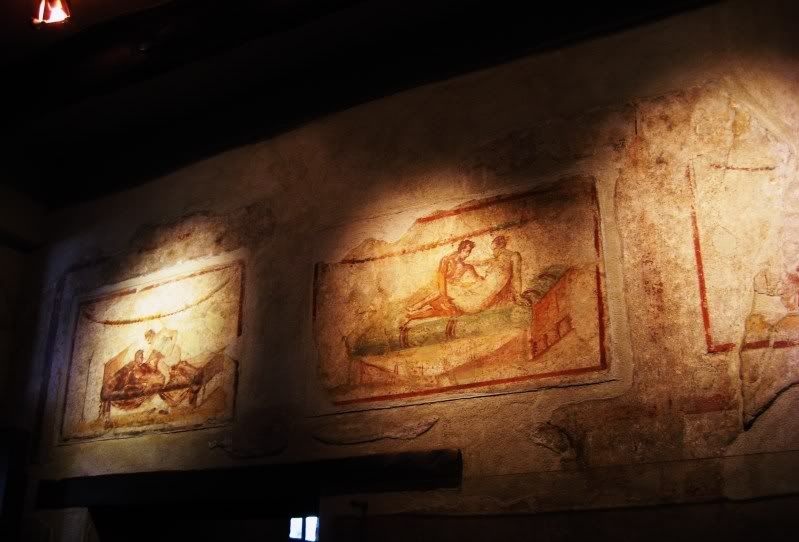
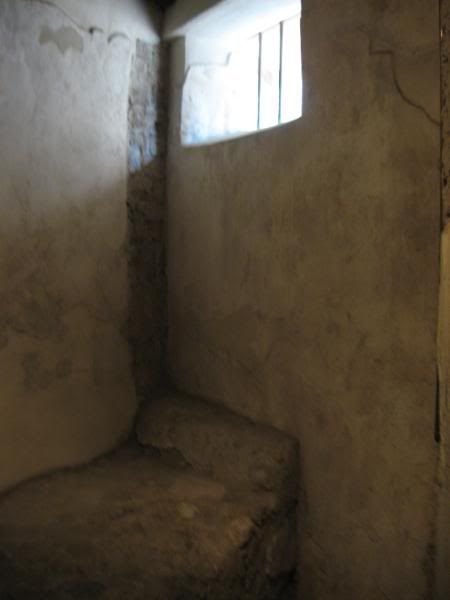
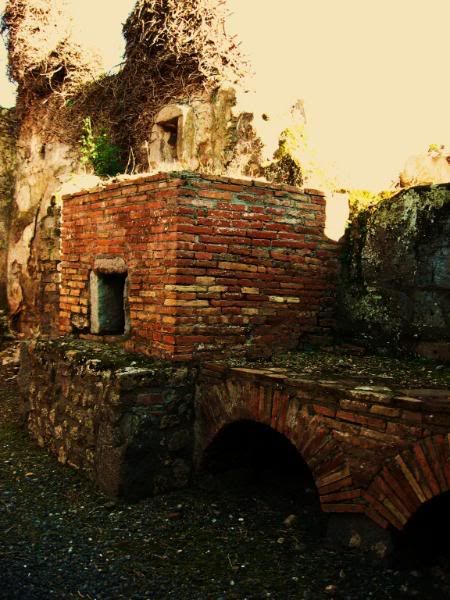
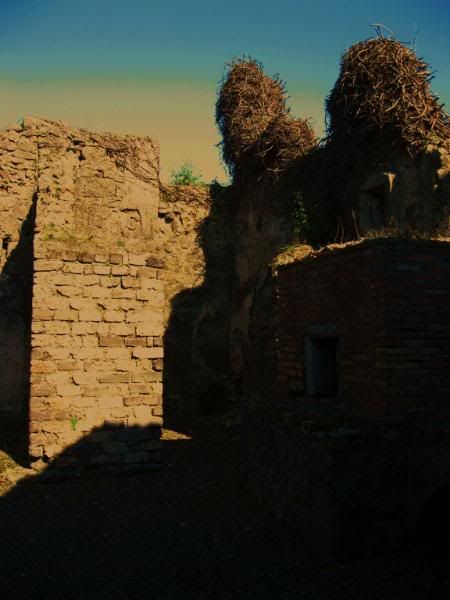
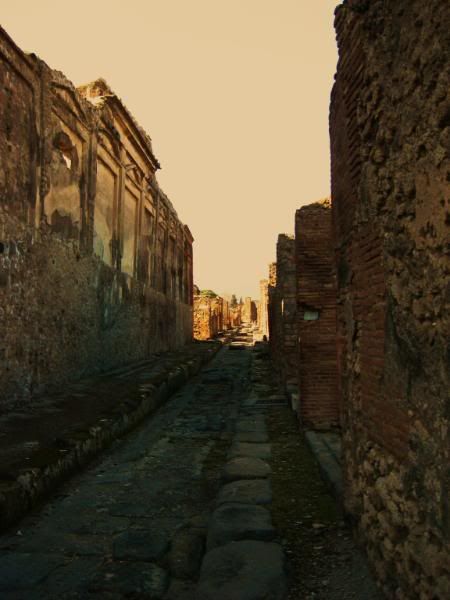
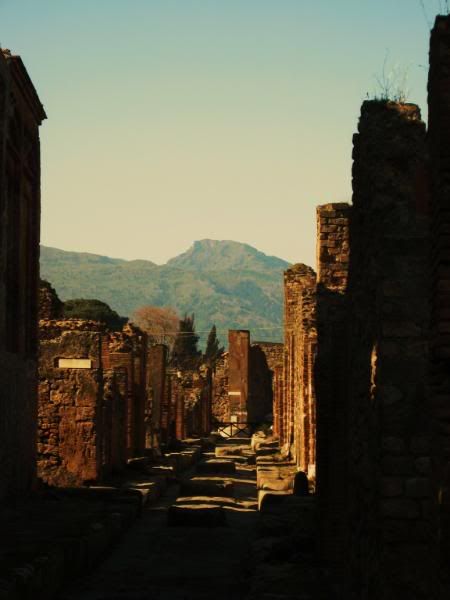
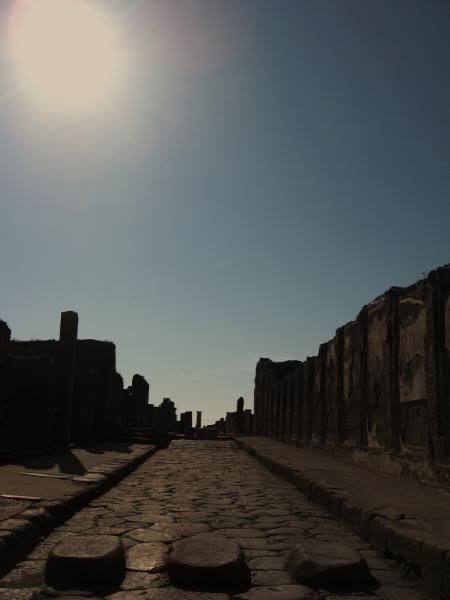


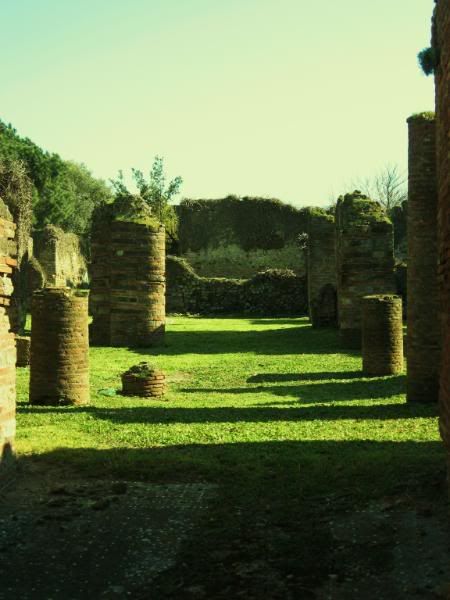
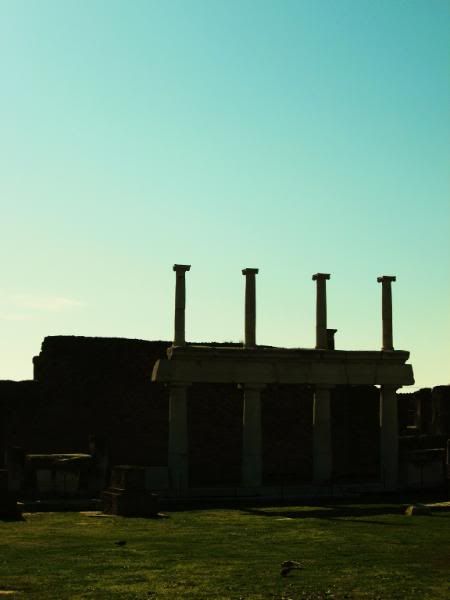
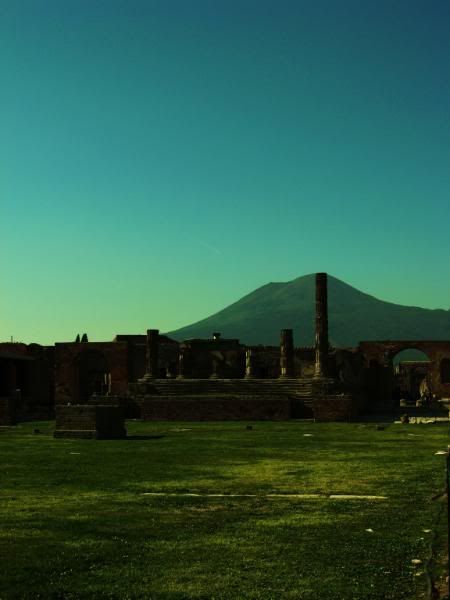
 Within the Bathhouse
Within the Bathhouse 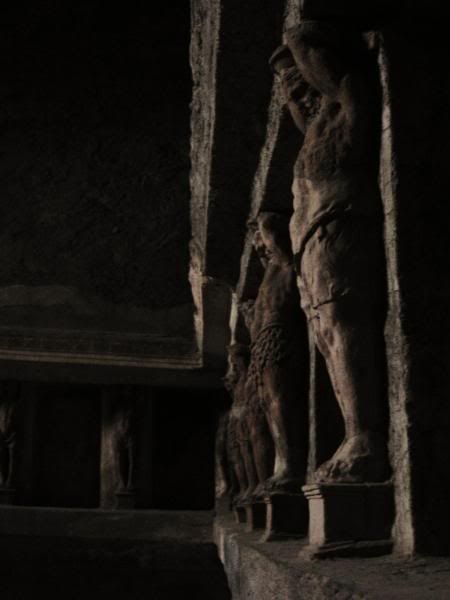
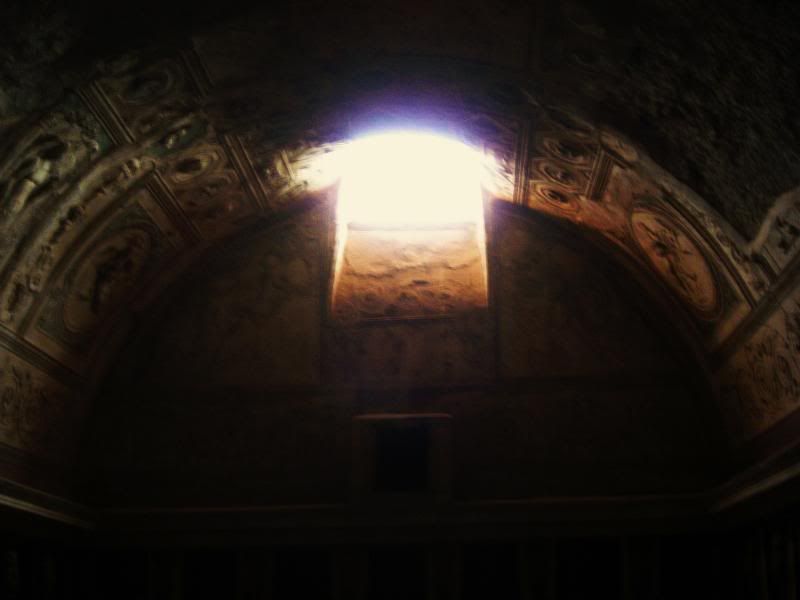
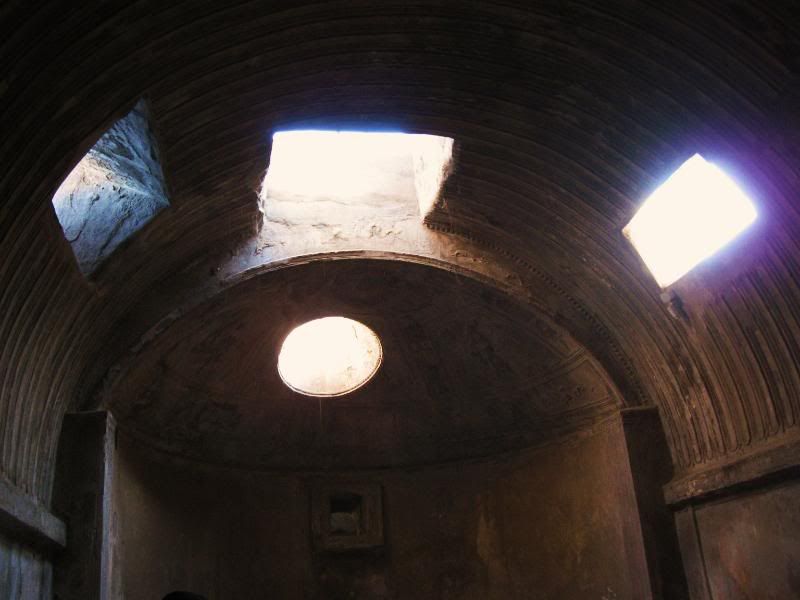
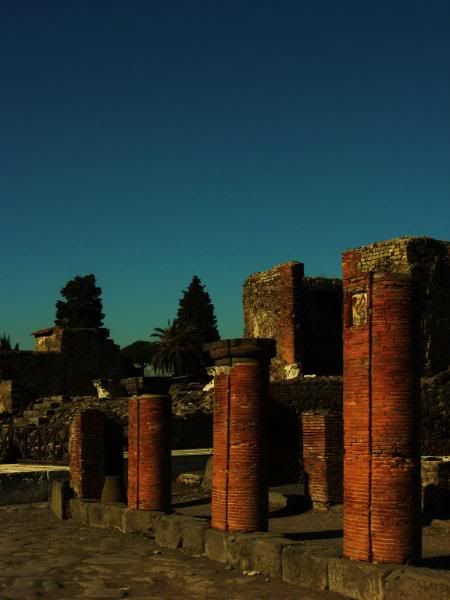 Roman transference – “Beware of Dog”
Roman transference – “Beware of Dog” 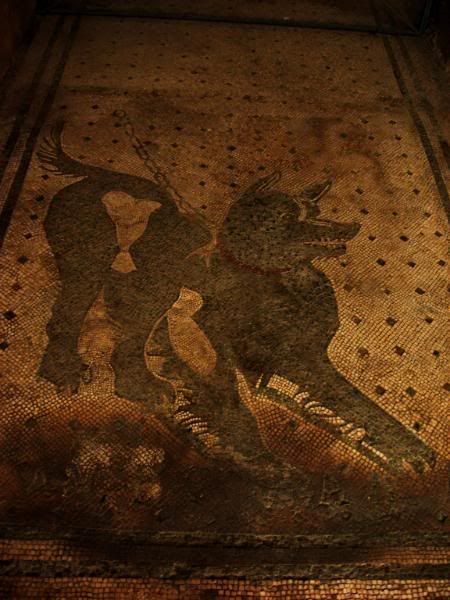 Fossilized Lifeforms
Fossilized Lifeforms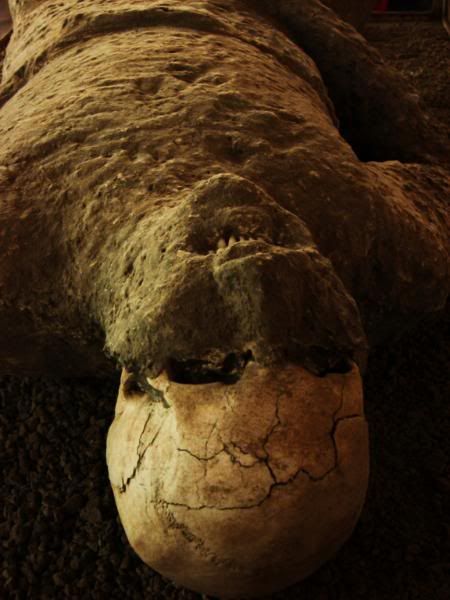
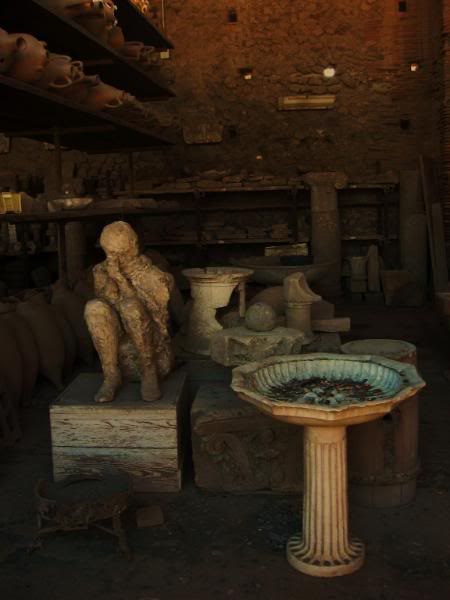
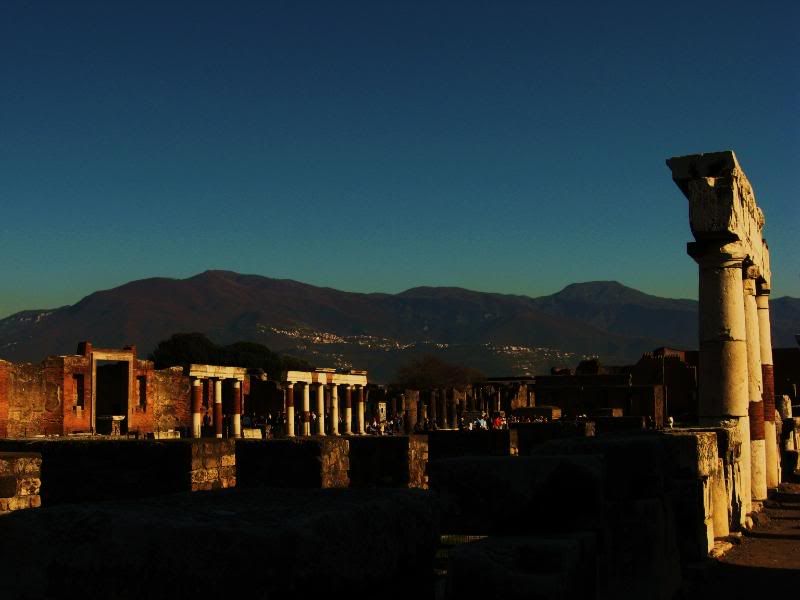 Remnants of the Mithraic Temple
Remnants of the Mithraic Temple The solar power once wielded by the emperors lives forever.
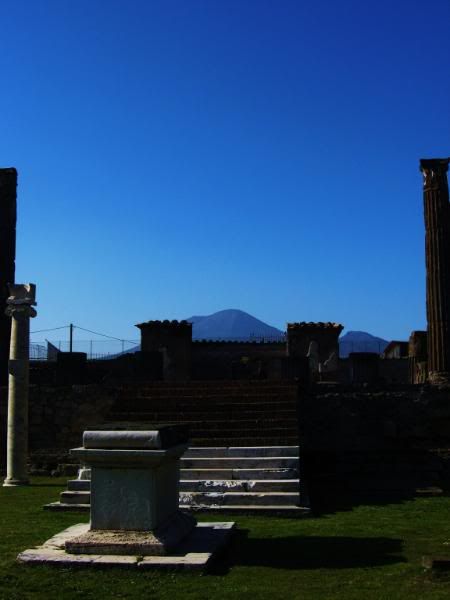
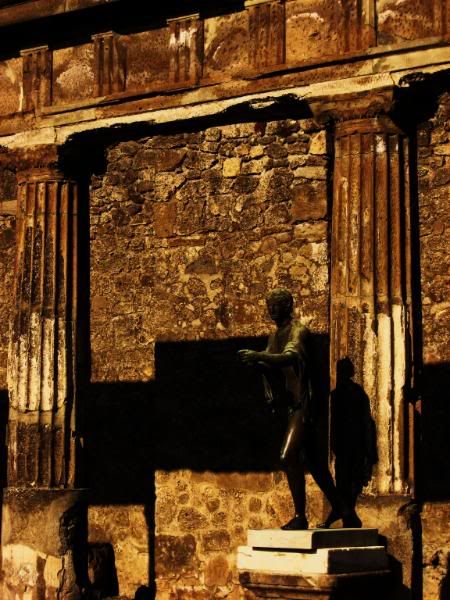
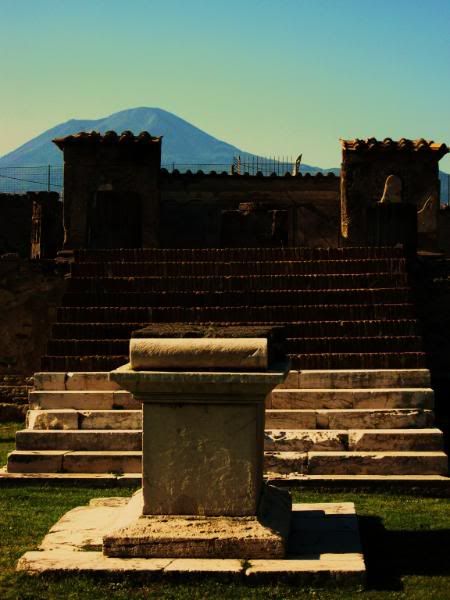
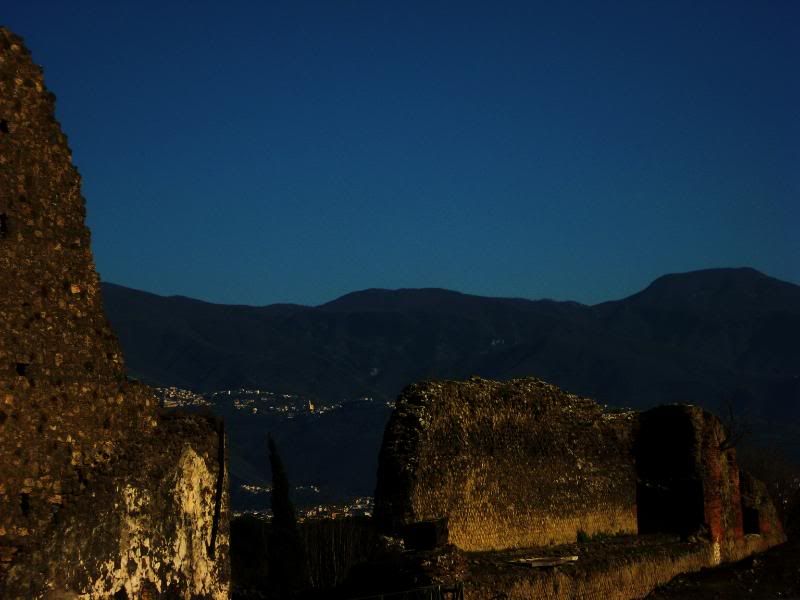 Rome – Roma – Vatican
Rome – Roma – Vatican Never before had I thought I would be standing within the state that was once the Holy Roman Empire that plunged ancient Europe into the middle ages. Vatican City, made an independent state in 1929, has been a secure home for Popes and their art collections for over 600 years. The amount of art stockpiled in the Vatican museums is astronomical. It's been said that if one were to look at every exhibit for 60 seconds, all will have been seen in around 12 years. I find this estimation hard to believe, but considering how much is there, it wouldn't be surprising. I could have easily stayed 12 hours but stayed about half that amount of time, and felt like I only saw a small fraction of the museums. These museums used to be only for the Pope's personal enjoyment, and only in the early 20th century was that changed, and only because of the Duce of Fascism, Benito Mussolini, who convinced the Pope of the time to allow the public into the museums.
The art here spans millennia – artifacts from ancient Rome that were salvaged or excavated by the Holy Roman Empire, ancient pagan deities from all over the former empire, impossible work by Renaissance masters, and so on. Nothing could prepare me for The Sistine Chapel and Raphael rooms. To think a man of the middle ages could create a nearly living image of the creation nearly 60ft off the ground is astonishing, but actually seeing it is something else. Like with his
David in Florence, his Sistine Chapel is something unbelievable, and radiates with an incredible aura.
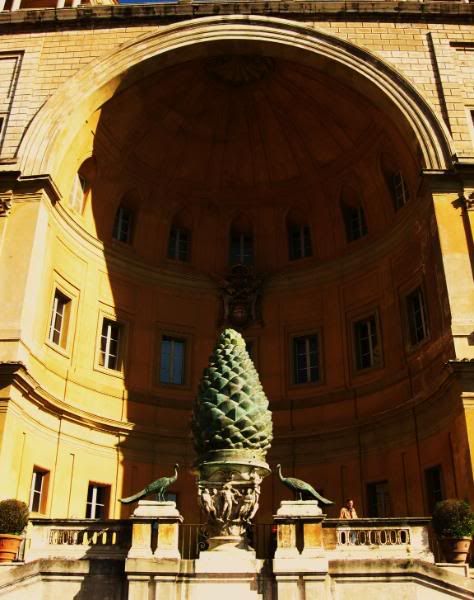
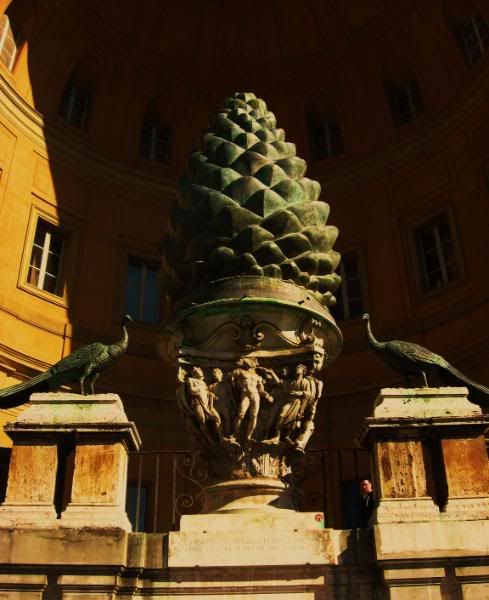
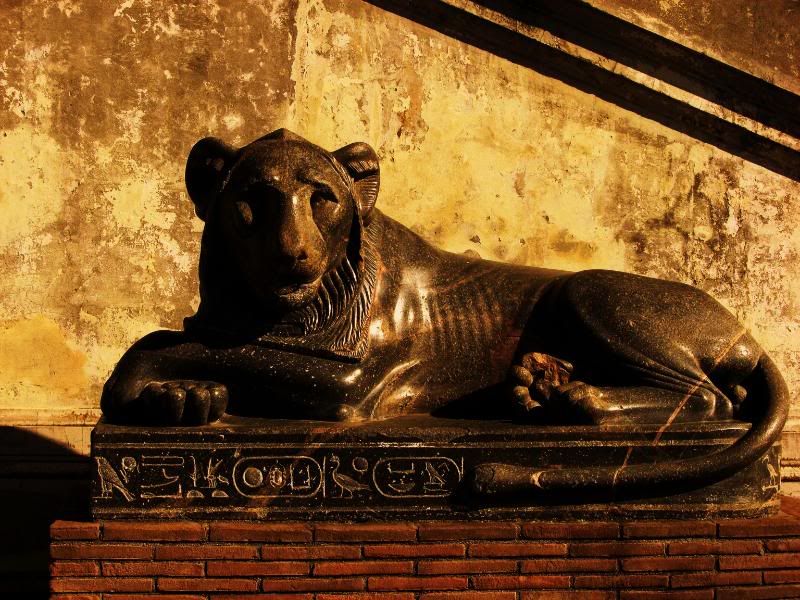
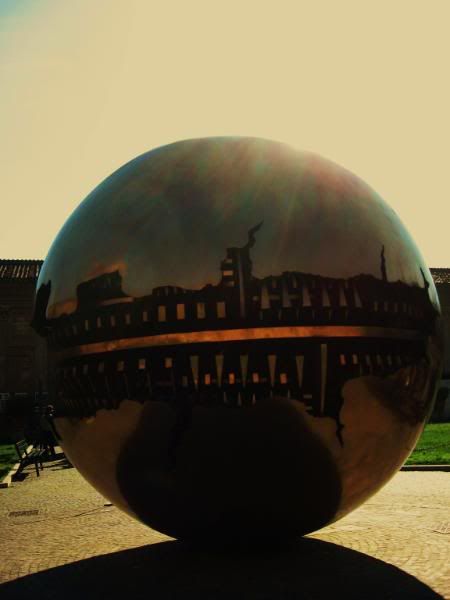




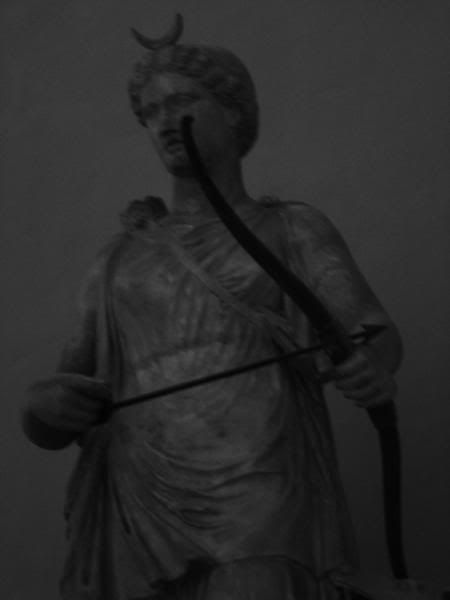
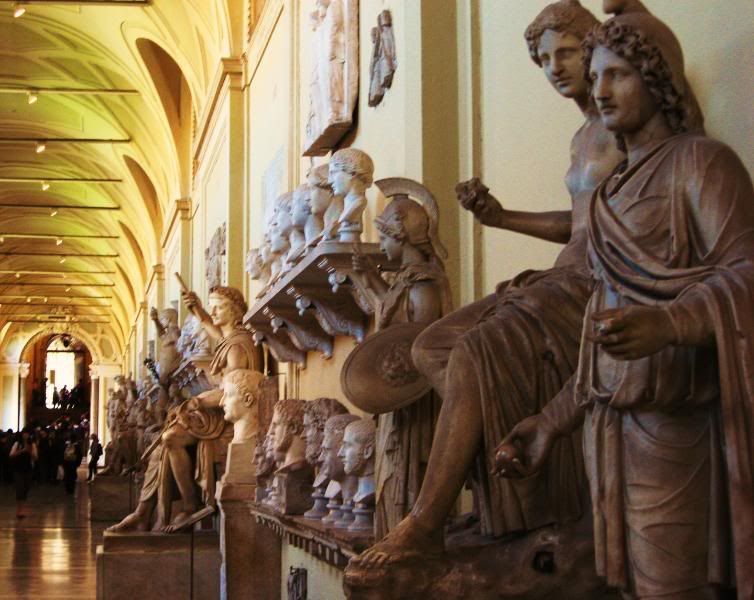
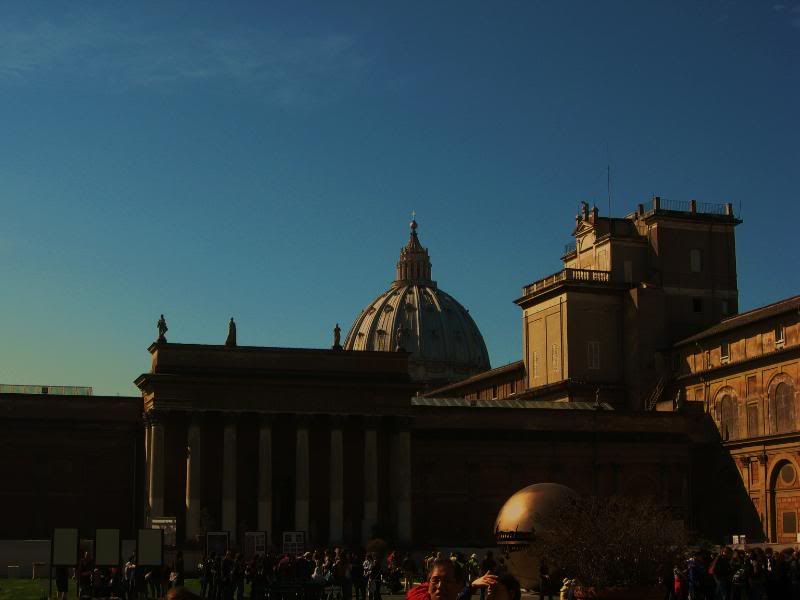
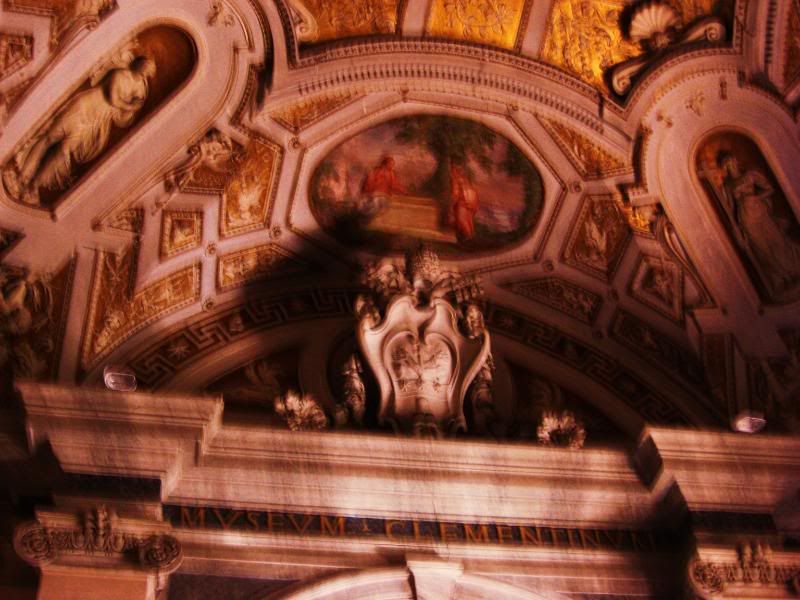
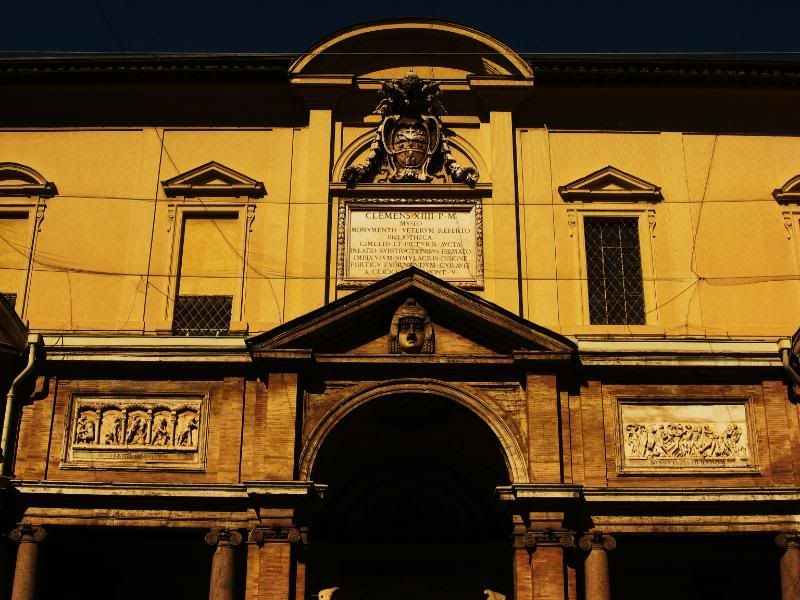
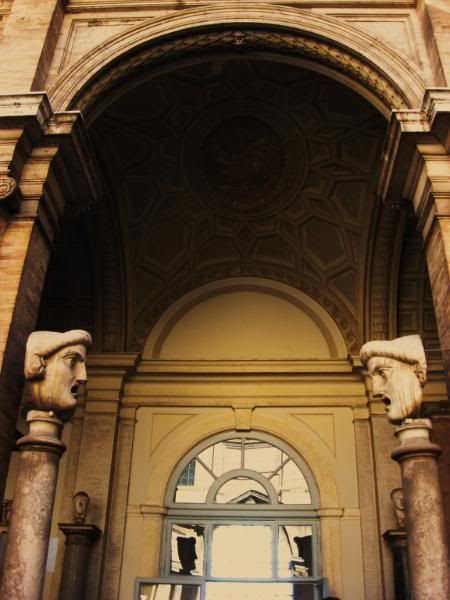 Sun God Apollo
Sun God Apollo 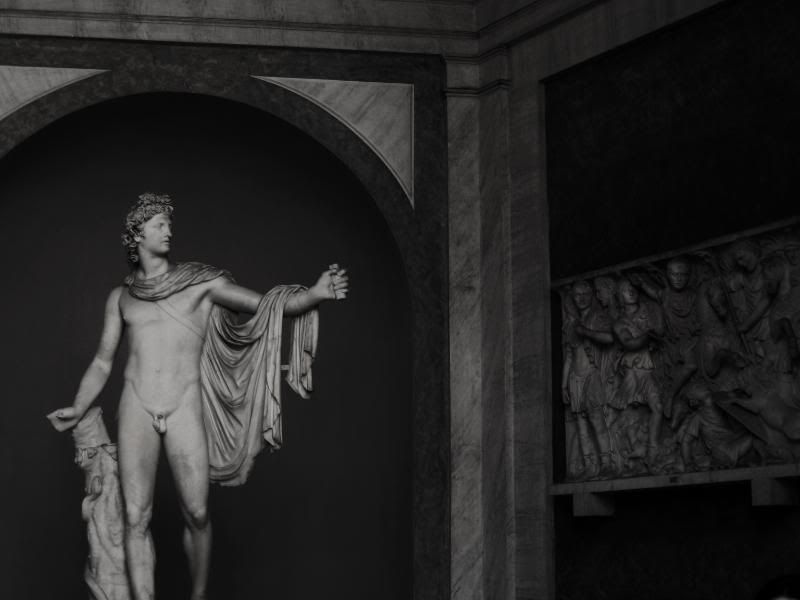

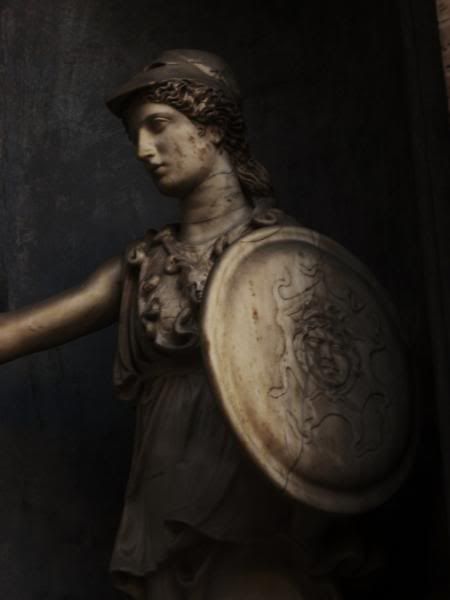
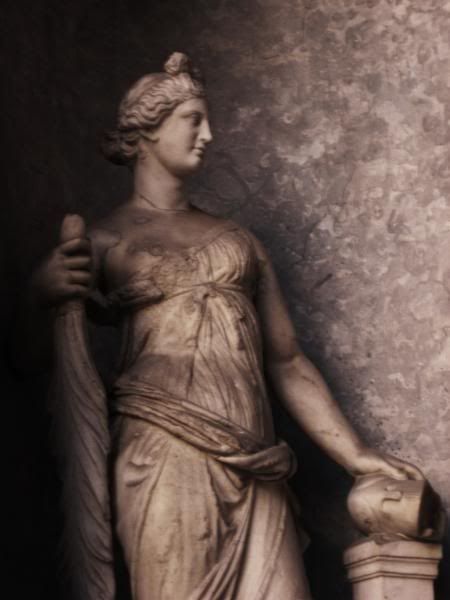

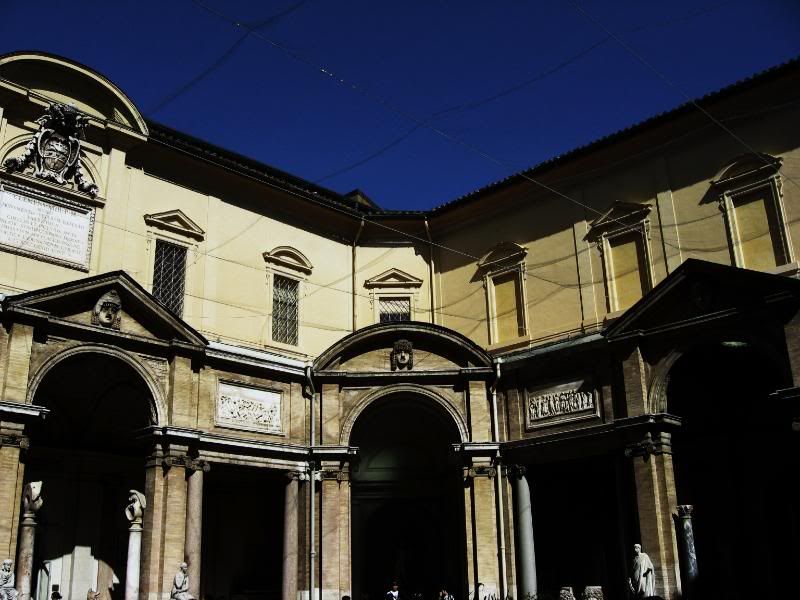
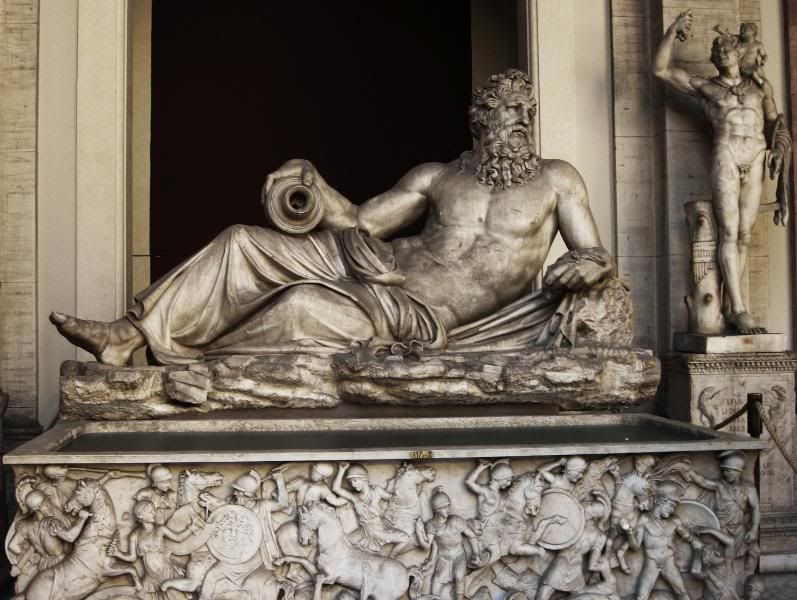
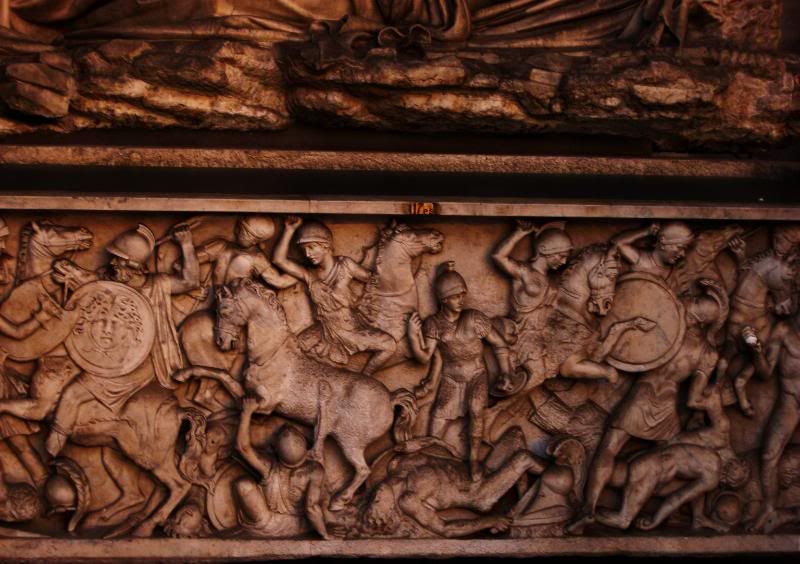
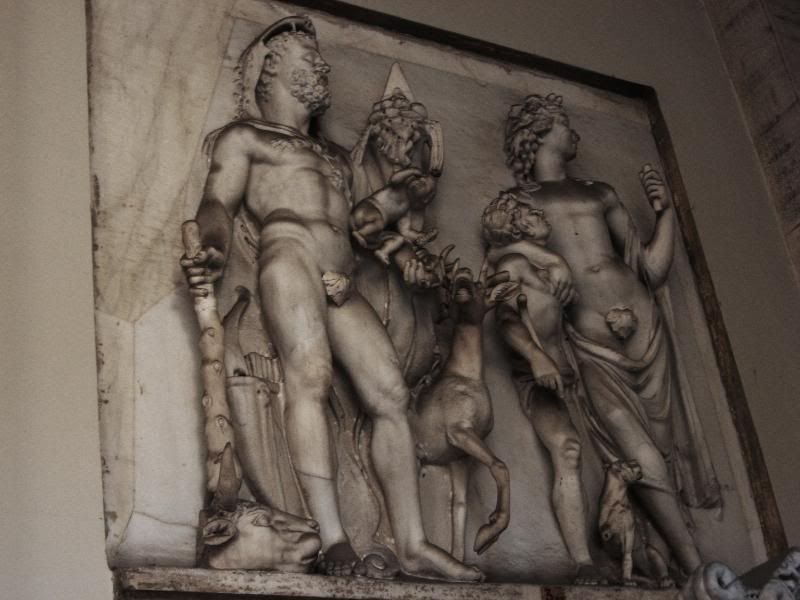
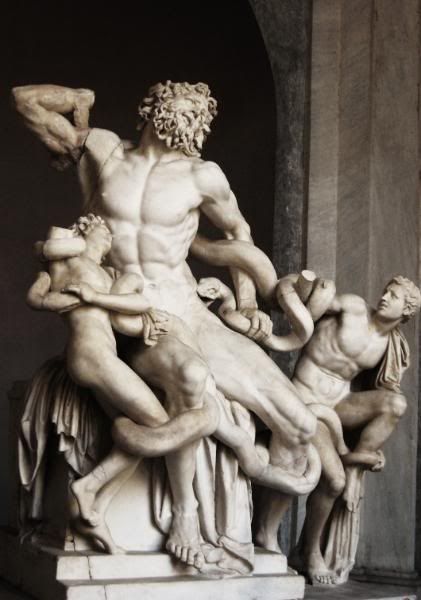

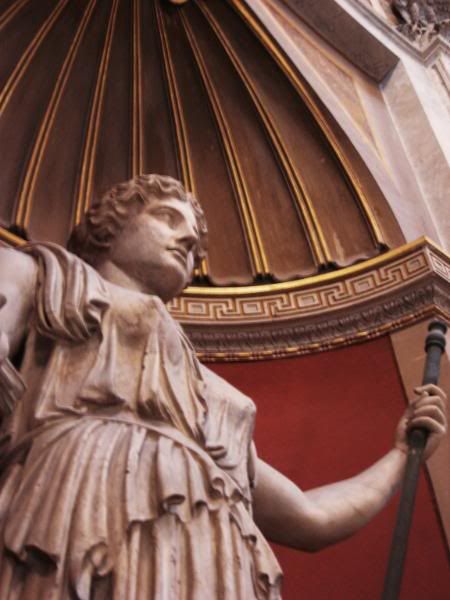
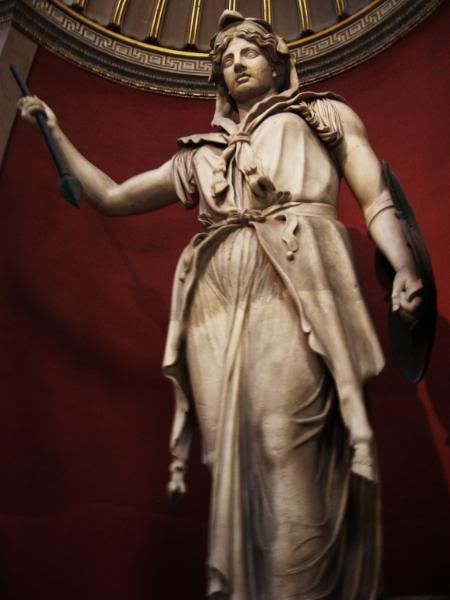
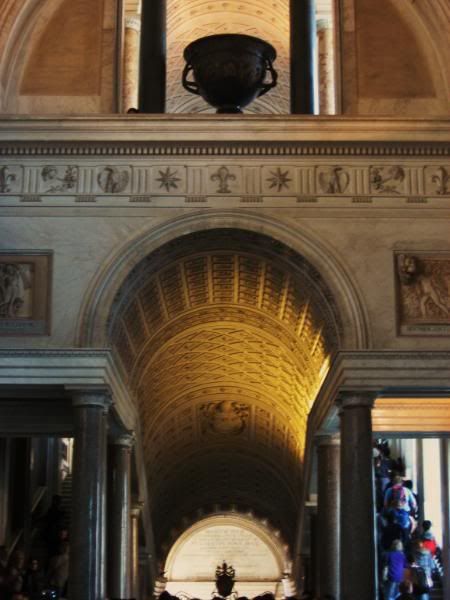 Egyptian Red Marble
Egyptian Red Marble This red marble is originally from Egypt and is unique because it does not exist anywhere else in the world. The Romans, entranced by its beautiful hue, took all of it back to Rome throughout the ages. Today, none exists anywhere outside of Rome.
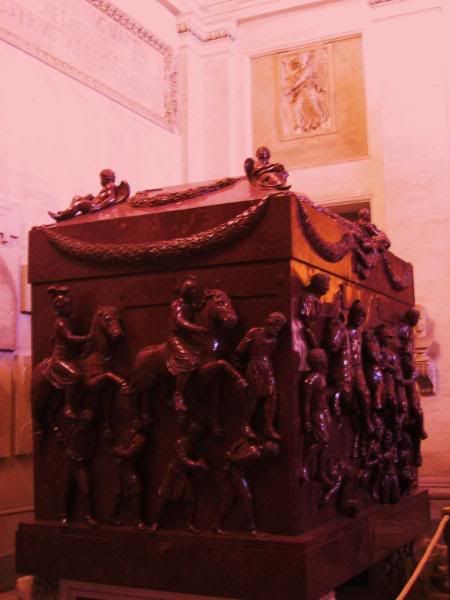
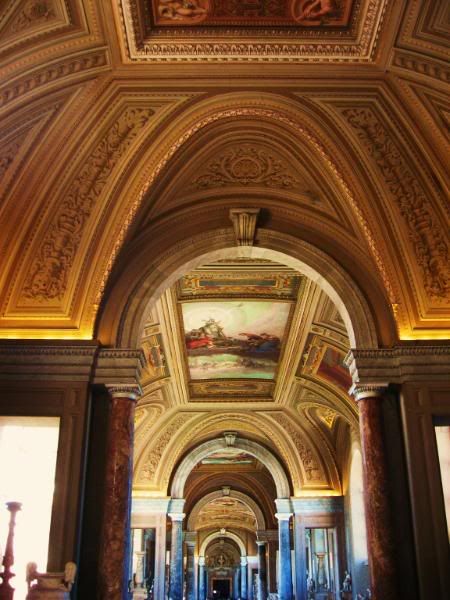
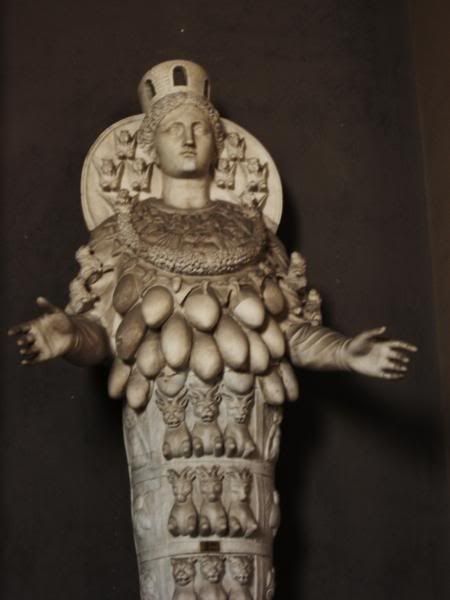
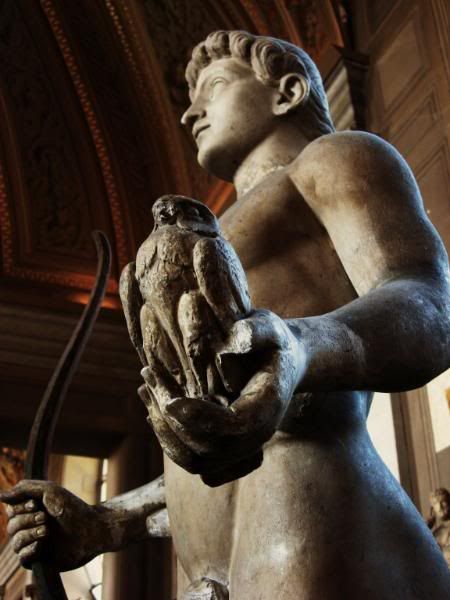
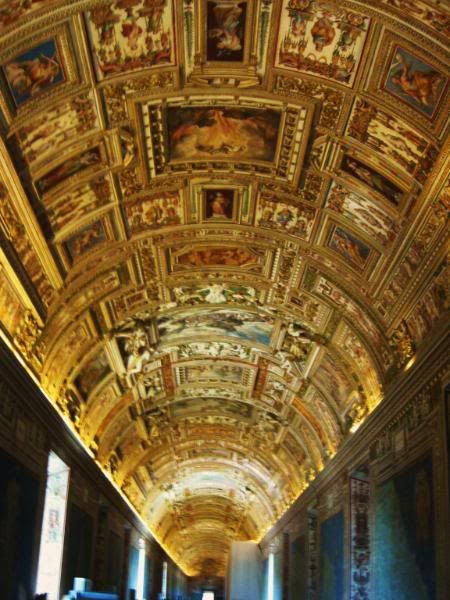
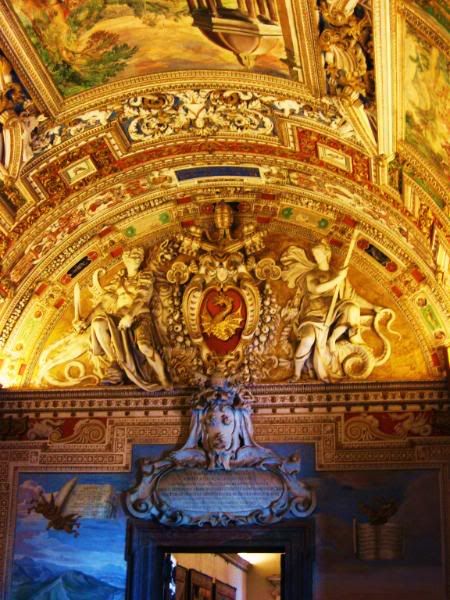 Christ falls Mercury
Christ falls Mercury Here stands Christ, having knocked Mercury to the ground where he lies shattered. This is meant to symbolize the triumph of Christianity over Pagan Europe, but it symbolizes way more than that. Mercury was Wotan to the Romans, the archetype of Roman will, and he lead them to rule nearly all of the known world. Rome then fell with the rising of the cross, and the rest of that known world shared the fate of Mercury. But the pieces remain. The symbol relates to Europe today, a land once ruled by the supreme archetype now lies broken on the ground, while an alien deity rules the land and inhibits the European Collective Unconscious from reaffirming the archetype. The pieces are still there, waiting to be put back together, a resurrected archetype that will wield its existence through us, and free our spirit of of the alien ruler. I saw gradual traces of this in Michaelangelo and other supreme artists of the day – their eternal art is the archetype in motion under the guise of Christianity. This is not a rare phenomenon as a few examples, such as Meister Eckhart, Charles Martel and J.S. Bach have shown.
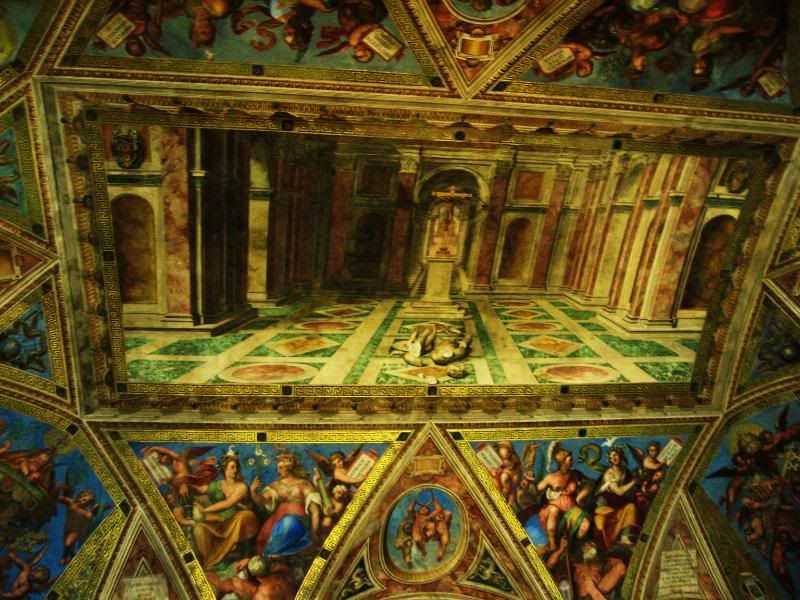
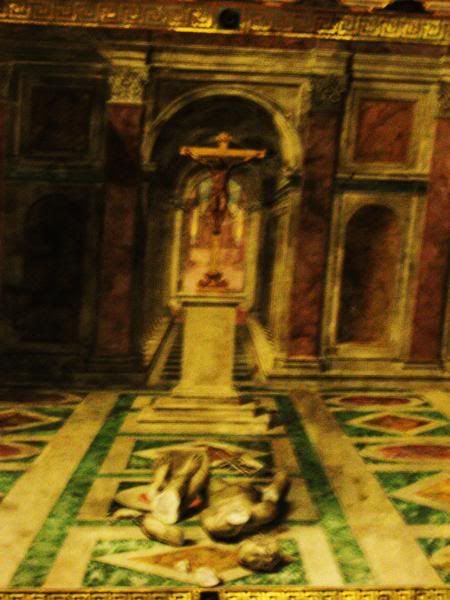
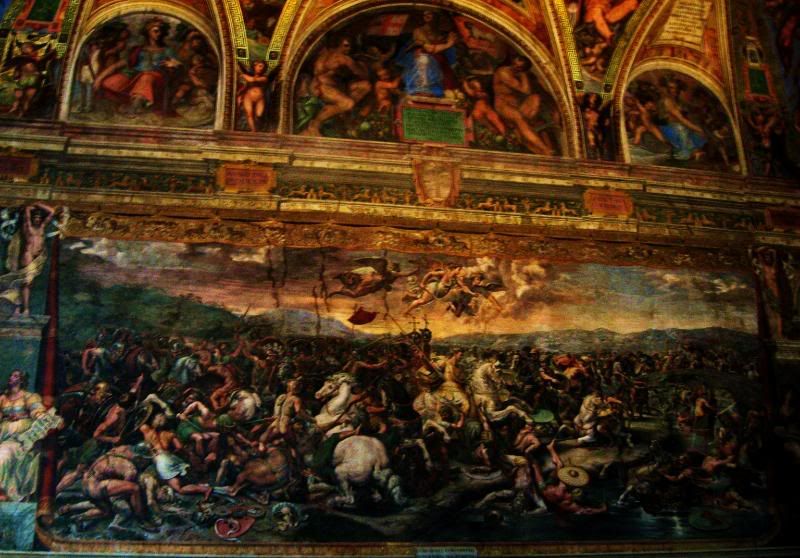
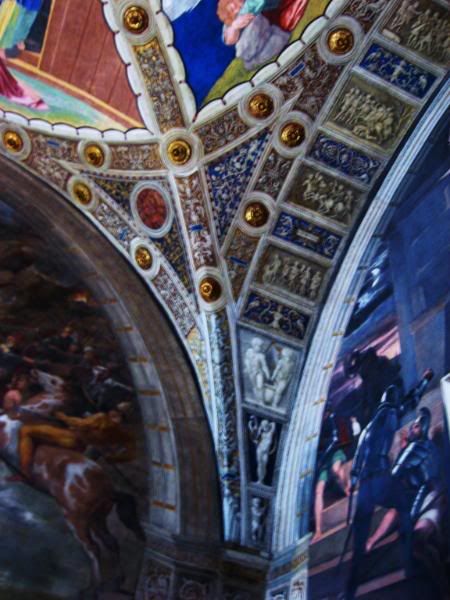
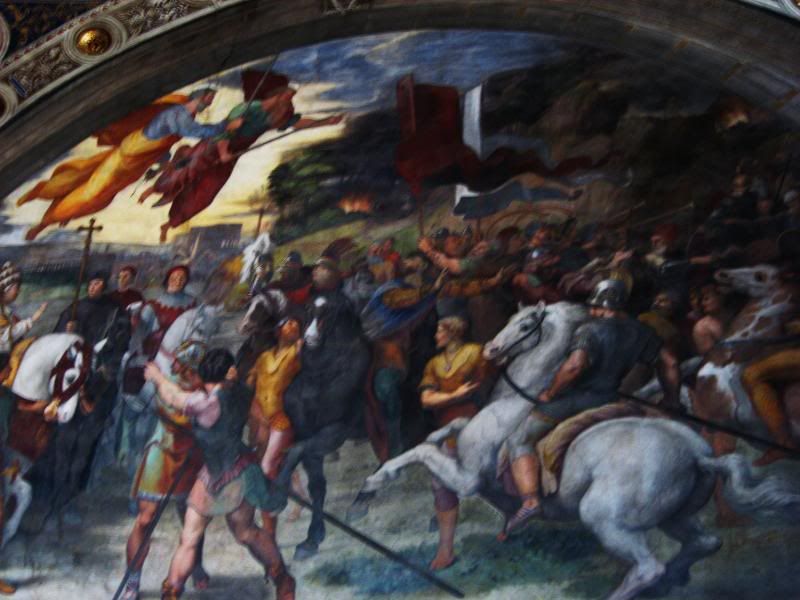
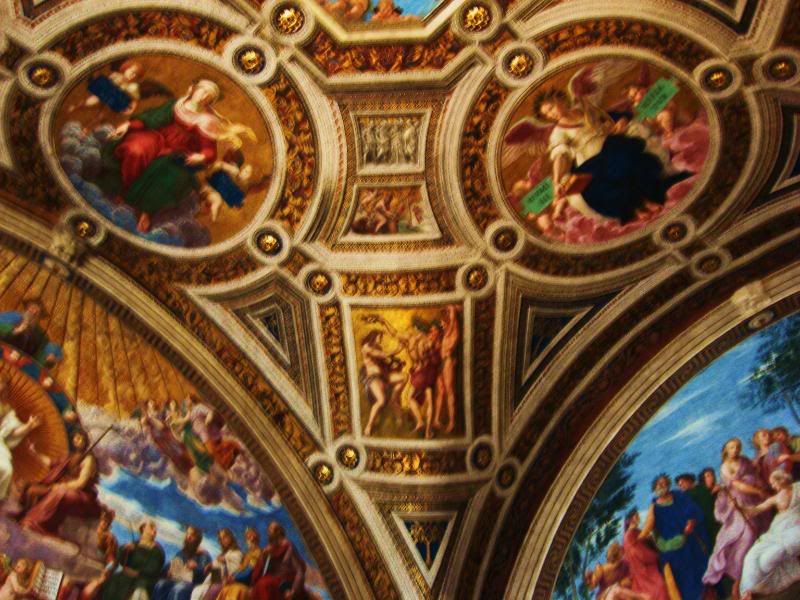
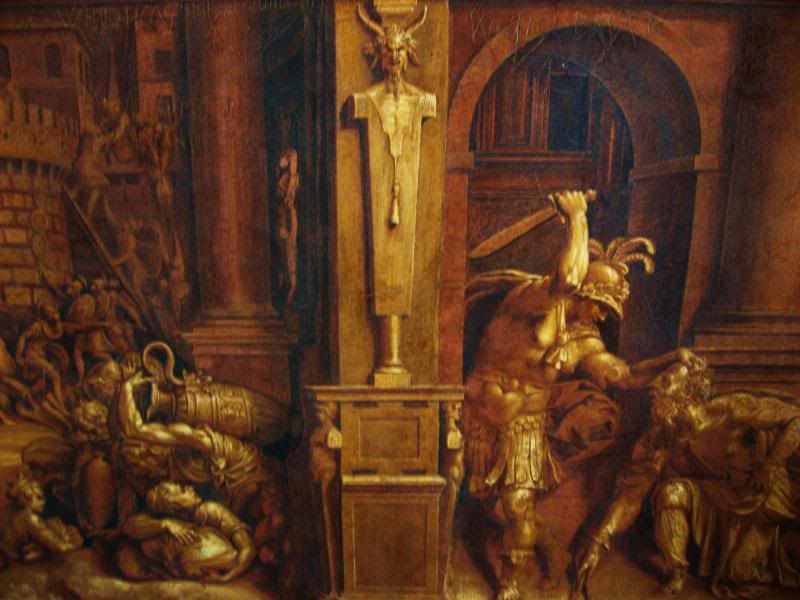
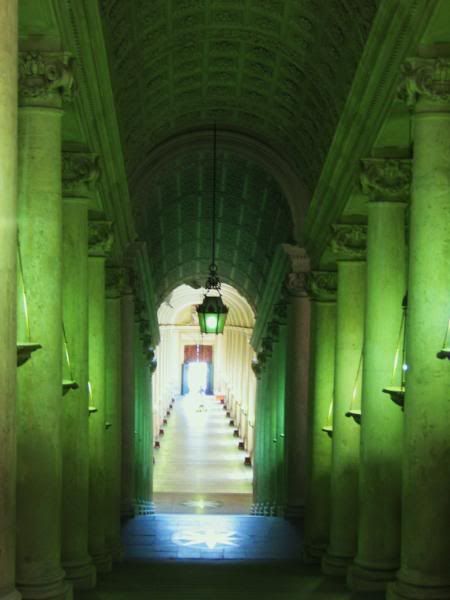
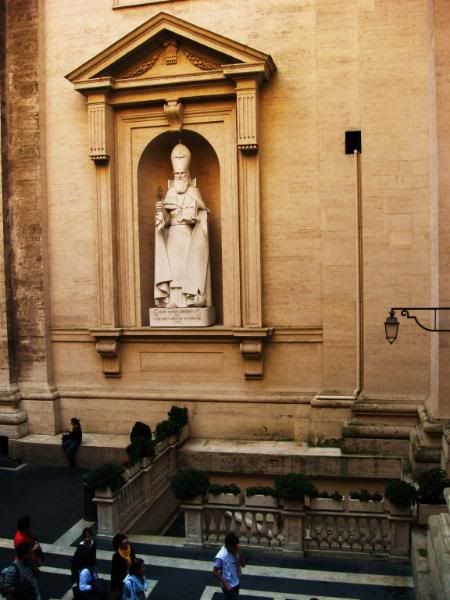

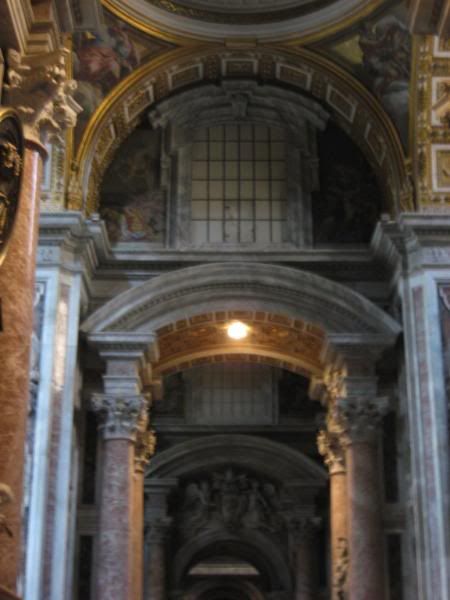
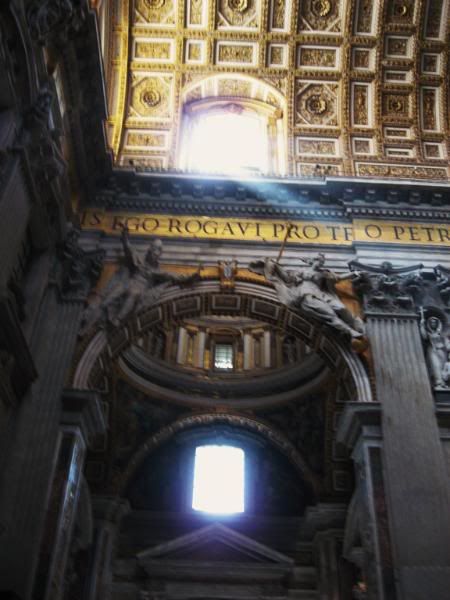

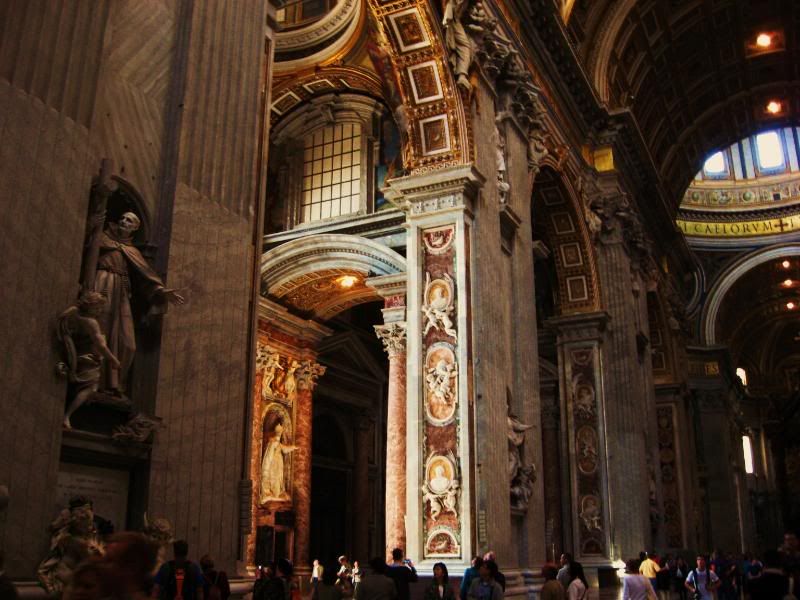

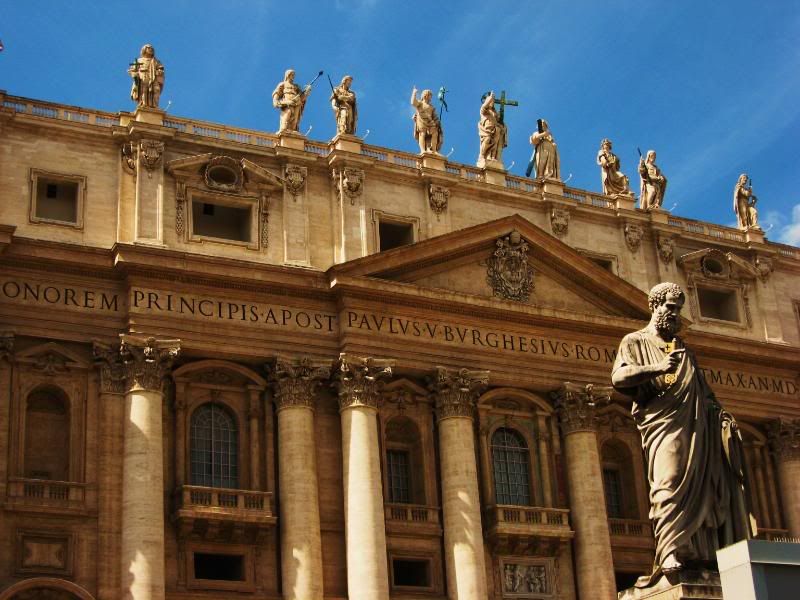
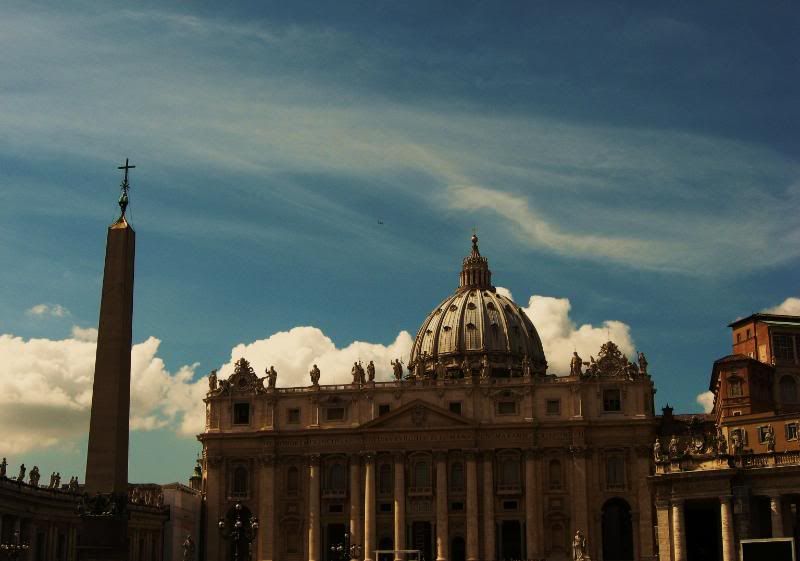 Rome – Roma – Ancient
Rome – Roma – AncientAlthough I arrived in Rome starved and drained of all energy, this feeling quickly disappeared as I entered the city center and noticed the unique surroundings on Via del Fori Imperiali – no longer was I in the land of the medieval Gothic, but another thousand years back among the capitol of an empire that once ruled the known world. I had an overwhelming desire to do nothing but walk around endlessly, but my time in Rome was a brief yet intense moment. The Roman structures are still there, those older than the Holy Roman Empire, and finding a 2000 year old ruin on nearly every corner in Rome is daily and mundane to modern Romans. The streets are always crowded, and an underground subway system cannot be built, because every time a piece of modern Rome is unearthed, more ruins are found, and thus a new archeology project ensues. I would be constantly excited and on top of these events if I lived here, I thought. I've never seen the warrior ethos so vividly and beautifully represented in only one city. The perfectly carved statues of the gods, kings and soldiers all stand with drawn spears and swords, while Victoria rides her chariot on the marble cliffs above. From here is where a civilization expanded its rule which lasted for about a millennium, and the tales which tell this story are written all over the place in today's Rome. The masterful grasp the ancient Romans had not just on art but on engineering is amazing. These ancient structures have survived many an earthquake throughout the ages, yet the fact that some Italians are hopelessly failing to construct earthquake proof buildings today perhaps means they unconsciously prefer the ancient to the modern.
This was not my first experience with Rome, I have seen it before in my dreams, and much of the reality perfectly matched the structures and angles in my dreams. A few months before I visited Rome, I dreamed that I watched the ancient city crumble at the hands of wild huntsmen. Every building was fallen, and flames reduced everything to ash. Then another people entered the city and rebuilt everything with the huntsmen. More people came and built more structures at an incredibly rapid rate, all working together. They then transformed instantly into Mussolini's Blackshirts, wielding axes and SPQR shields. Suddenly another attack ensued, only the attackers were slouching minions laughing loudly while they knocked over columns of Blackshirts with their numbers. The Blackshirts feared the invaders would take everything they built, so they destroyed it all themselves. At this point I awoke. The dream symbolizes the simple reality I noticed while walking around the Roman Forum – Rome was a vast civilization that lasted longer than any other, a civilization that existed because the Romans desired a future, and created it. Though it all came to an irrevocable end for reasons not unlike the problems we face today, everything was reinvented, as the people of the new age looked to the past to create a future for themselves, just as the Romans looked to the Greeks to determine their fate. So is the cyclic nature of history and life, the unabated, ever-flowing eternal return, from where there is no escape, and where I sometimes find optimism and a sense of unification. Being that Rome became another one of my favorite European cities, I will one day see it all until there is nothing left to see.
PantheonFirst built by Marcus Agrippa in 27 B.C. as a dedication to the Gods of Rome, then, after a raging fire, rebuilt by Emperor Hadrian in 127 A.D., converted to a Catholic church in 609 A.D. by Pope Boniface IV, a tomb for many Renaissance masters including Raphael the painter, a tomb for two Italian kings, and a lasting source of inspiration for architects all over the world.
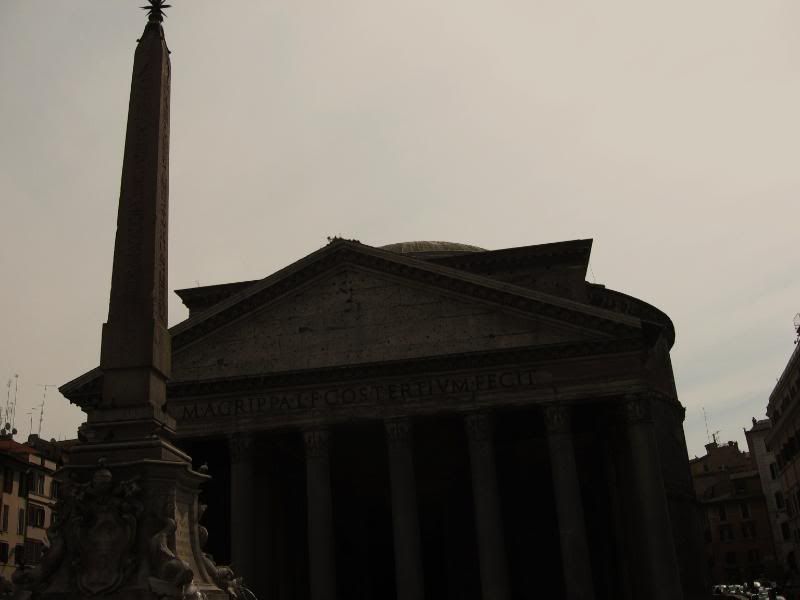
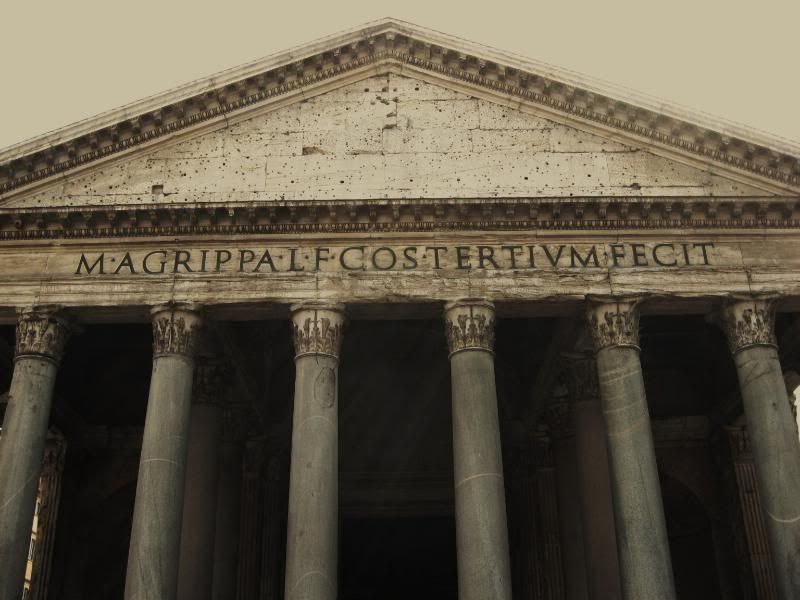
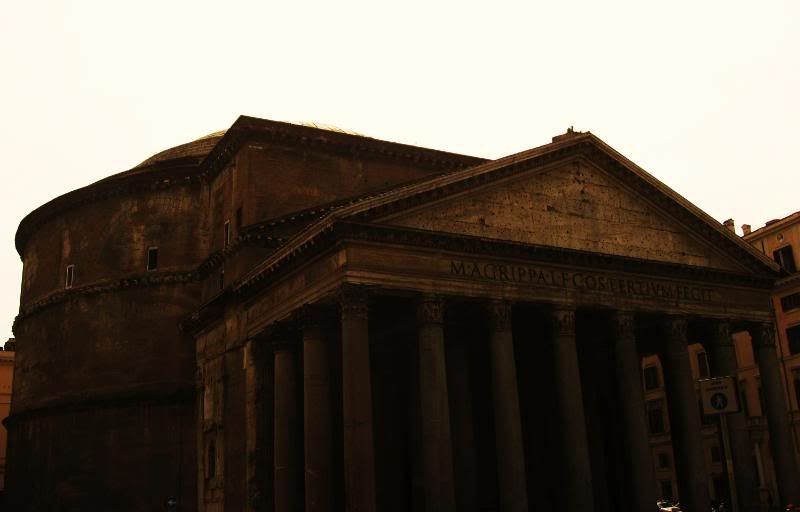
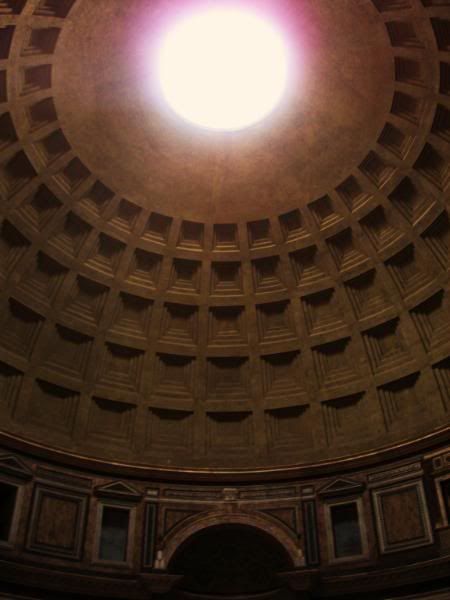

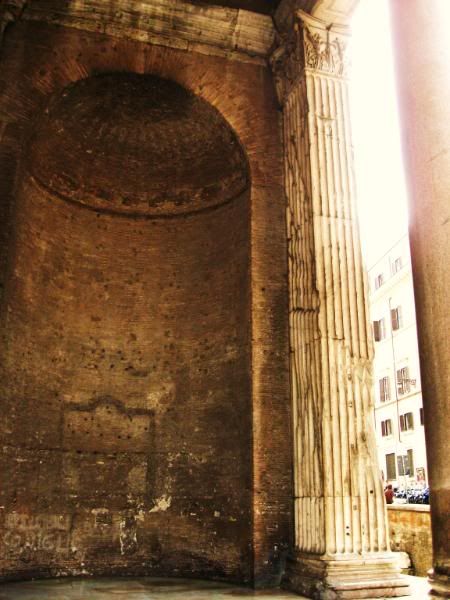

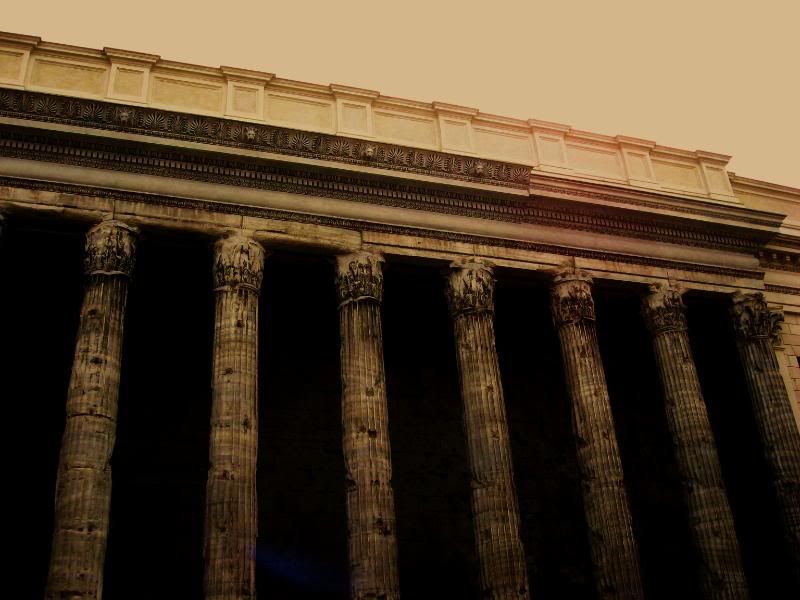 A little ruined a picture
A little ruined a picture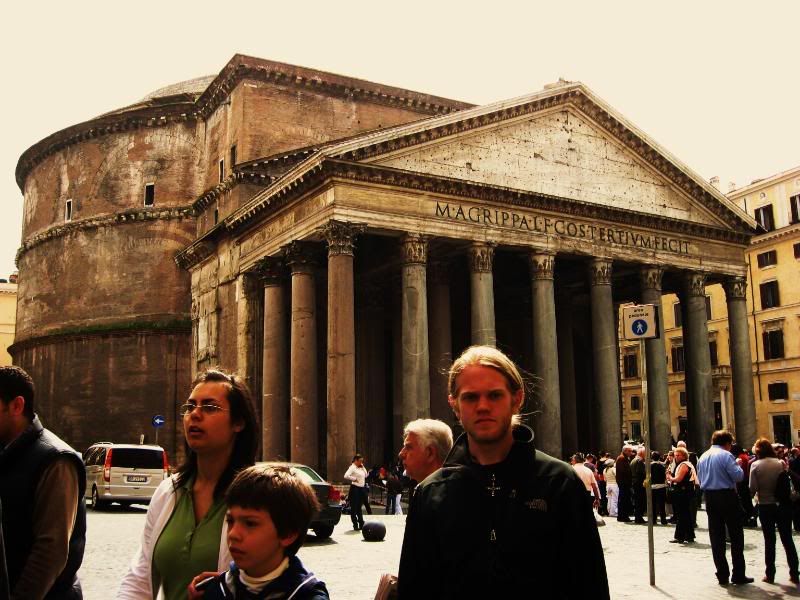 Trevi Fountain – La Fontana di Trevi
Trevi Fountain – La Fontana di Trevi A Baroque depiction of the finding of a pure water source near the Empire's capitol.
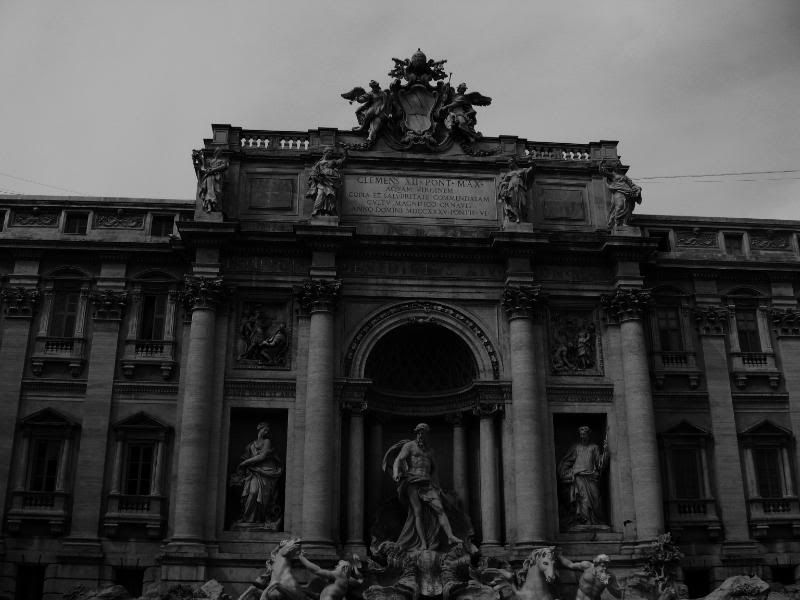

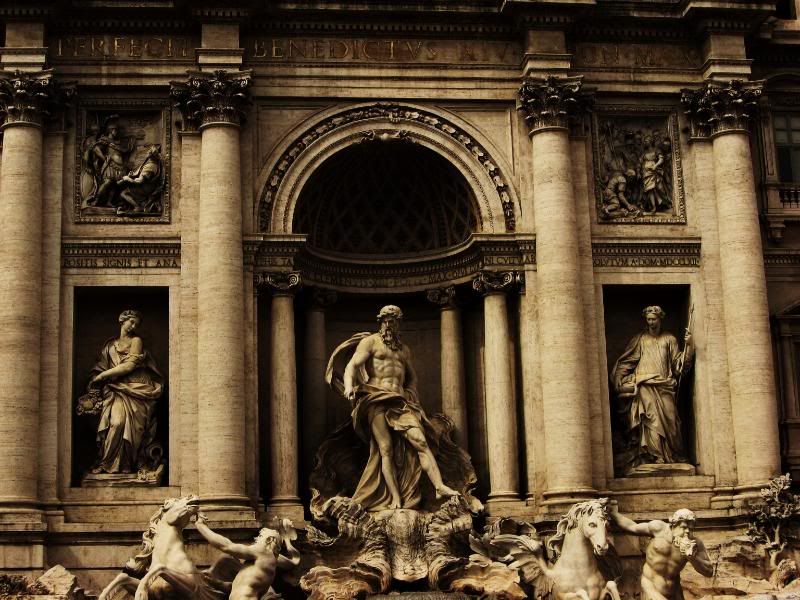
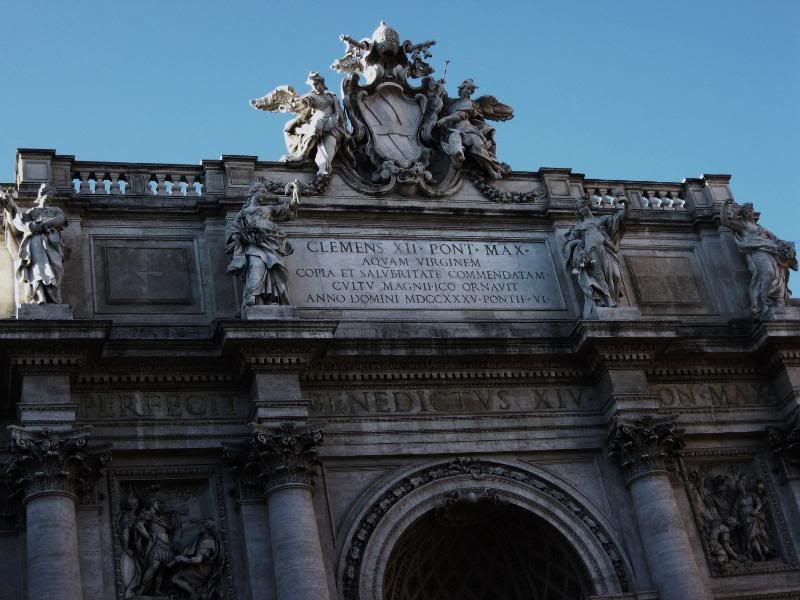 On Via del Fori Imperiali Altara Della Patria – Altar of the Fatherland – National Monument of Vittorio Emanuele II
On Via del Fori Imperiali Altara Della Patria – Altar of the Fatherland – National Monument of Vittorio Emanuele II This massive monument, carved out of marble, is dedicated to the unification of Italy, and the first king of unified Italy. Vittorio Emanuele II is the rider in the middle surrounded by marble Gods, fountains, Corinthian columns and hailed from above by Victoria and her chariots.

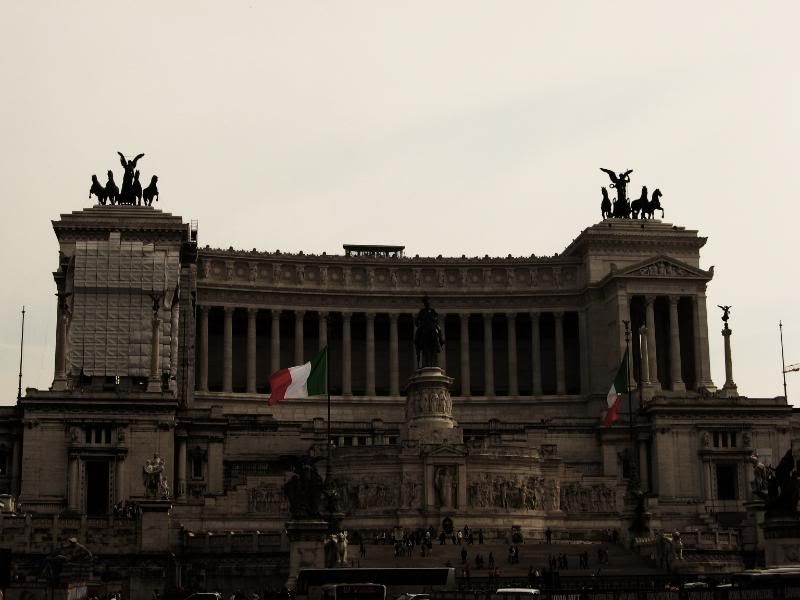
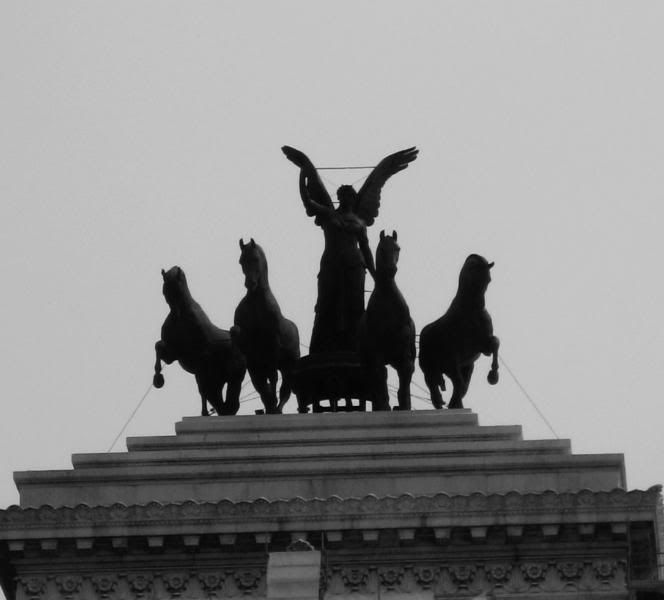
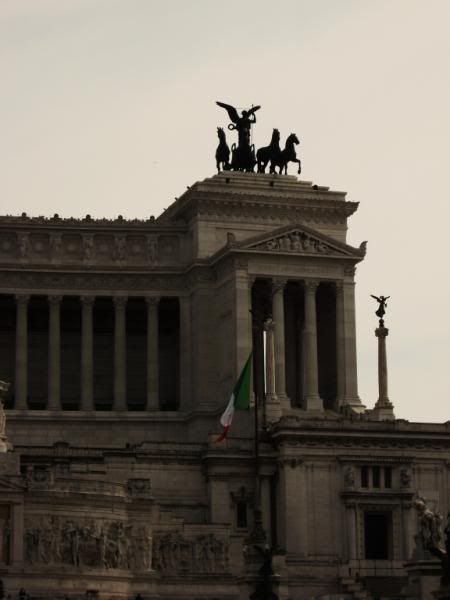
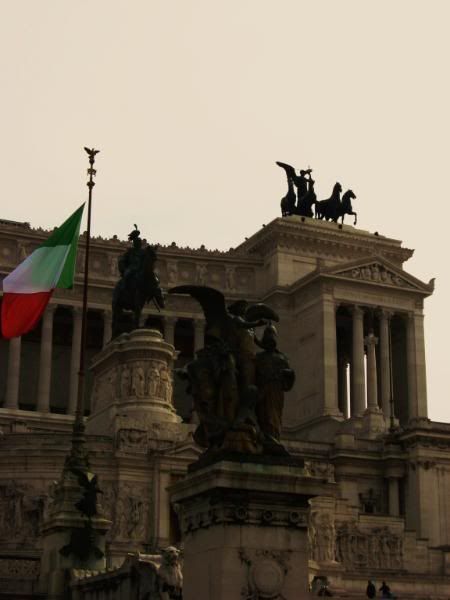
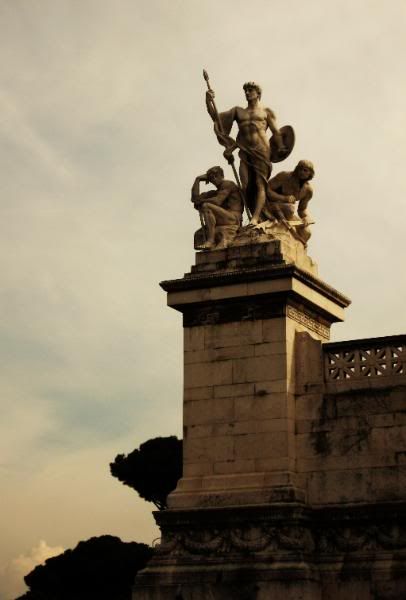
 Palazzo Venezia
Palazzo Venezia Across the street from the Altar of the Fatherland is the over 700 year old Palazzo Venezia, a former papal palace and former office of Mussolini. From this window the Duce would address his Popolo Italiano.
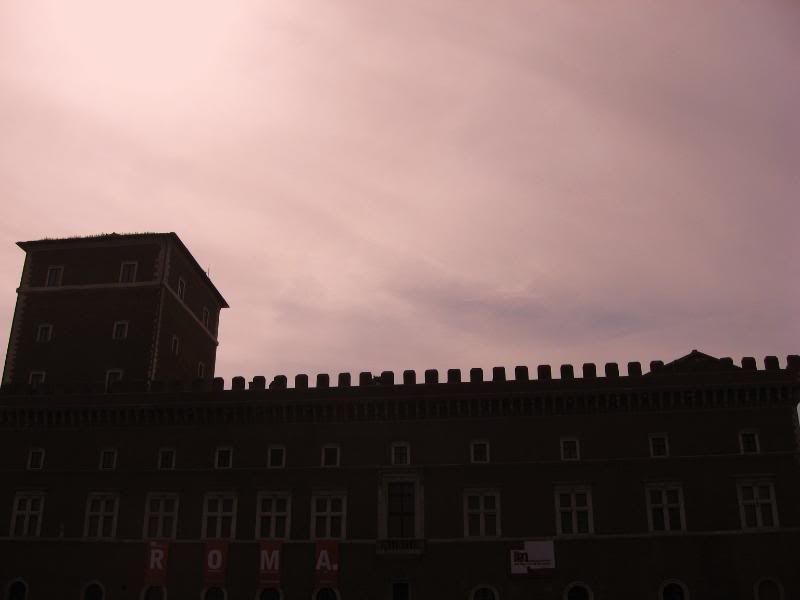
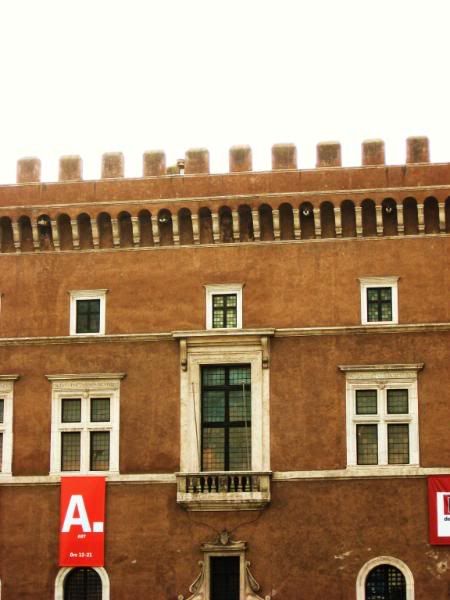 Fontana dei Quattro Fiumi – Fountain of the Four Rivers
Fontana dei Quattro Fiumi – Fountain of the Four RiversCarved by a Baroque artist in the mid 1600's, this fountain holds an Egyptian obelisk with four gods corresponding to the four major rivers, the Nile, the Danube, Ganges and Rio della Plate.

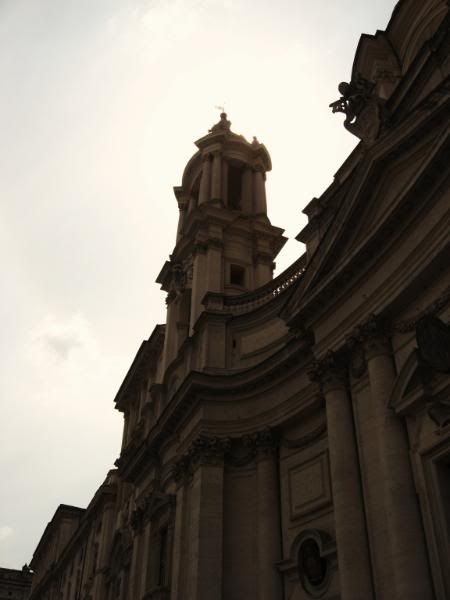
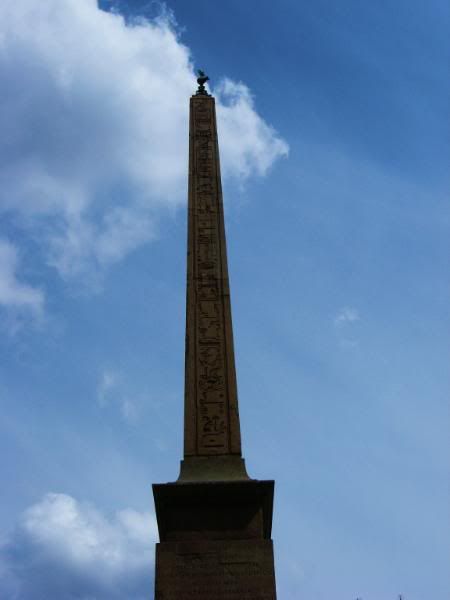
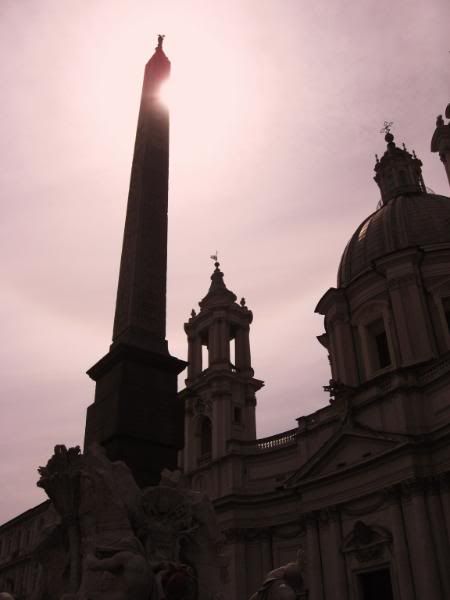
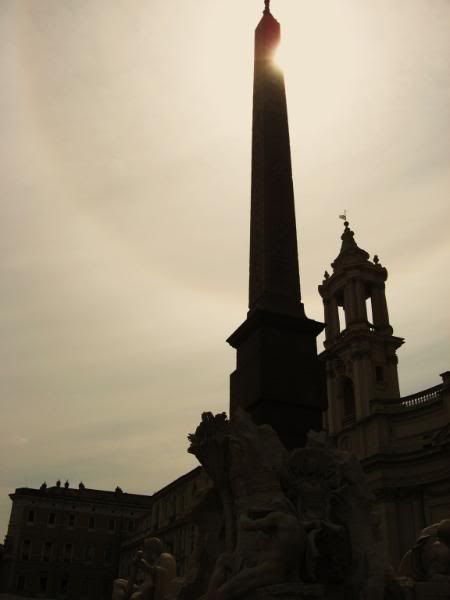 Forum Romanum – Ancient Roman Forum
Forum Romanum – Ancient Roman ForumBegun by Romulus and Titus in the 7th century B.C. and finished by Octavius after the assassination of Julius Caesar, the remnants of the Forum Romanum stand today; toppled and worn, yet bear a proud ancient face that has survived over 2000 years of elements. Walking through the remnants of the mithraic temples and headquarters of the ancient Empire was a truly remarkable experience.
Rome O thou new comer who seek'st Rome in Rome
And find'st in Rome no thing thou canst call Roman;
Arches worn old and palaces made common,
Rome's name alone within these walls keeps home.
Behold how pride and ruin can befall
One who hath set the whole world 'neath her laws,
All-conquering, now conquerèd, because
She is Time's prey and Time consumeth all.
Rome that art Rome's one sole last monument,
Rome that alone hast conquered Rome the town,
Tiber alone, transient and seaward bent,
Remains of Rome. O world, thou unconstant mime!
That which stands firm in thee Time batters down,
And that which fleeteth doth outrun swift time.
Ezra Pound,
Personæ 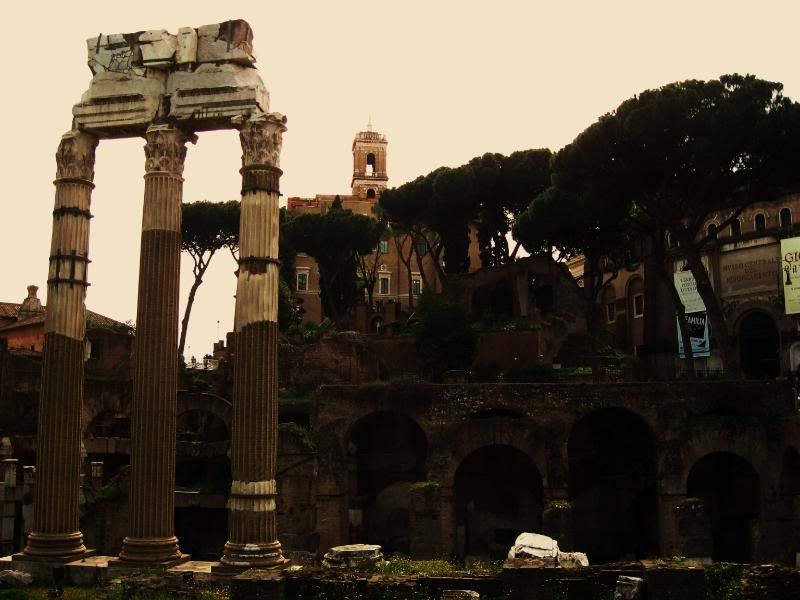
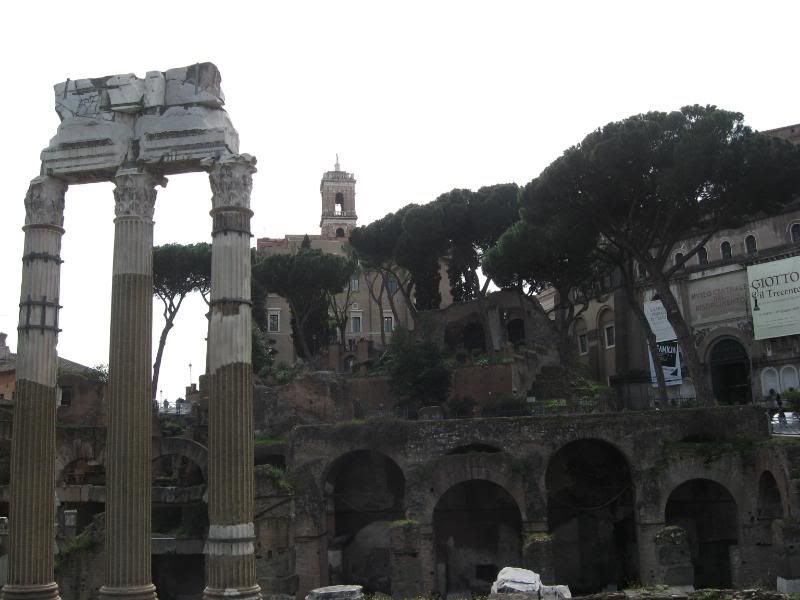
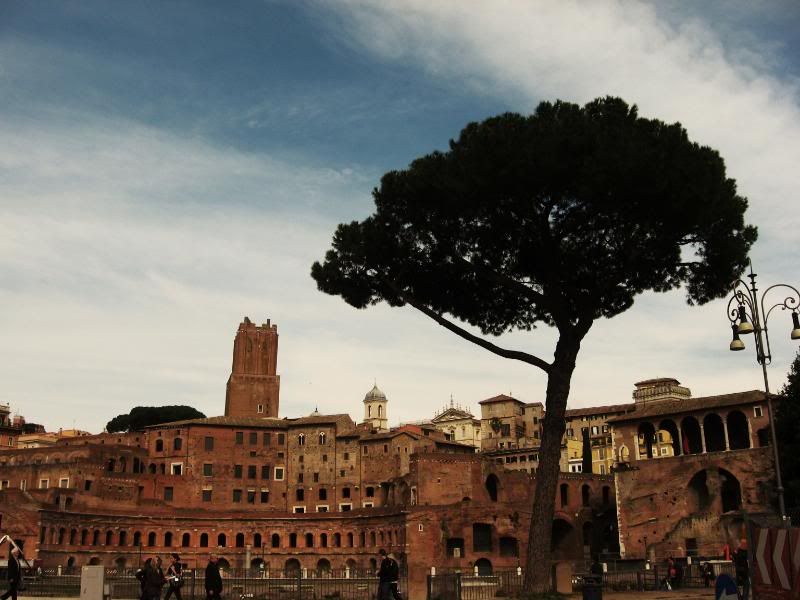

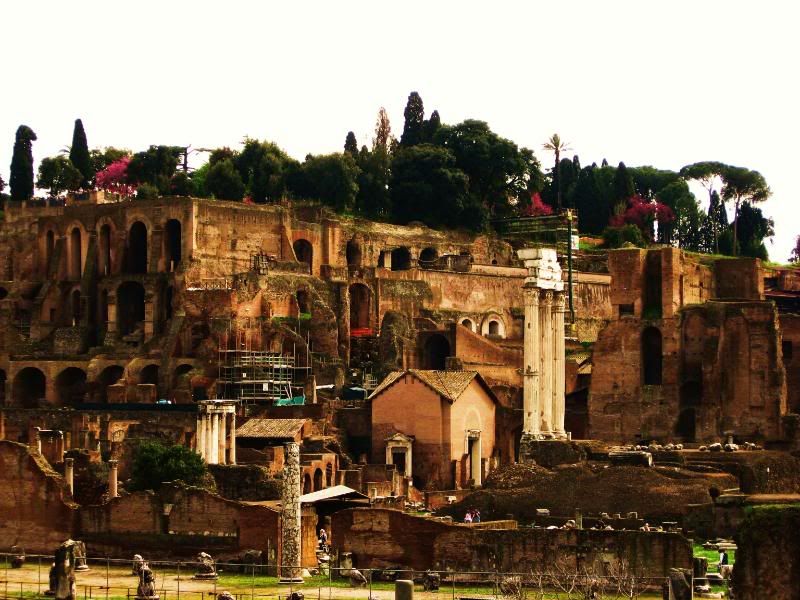
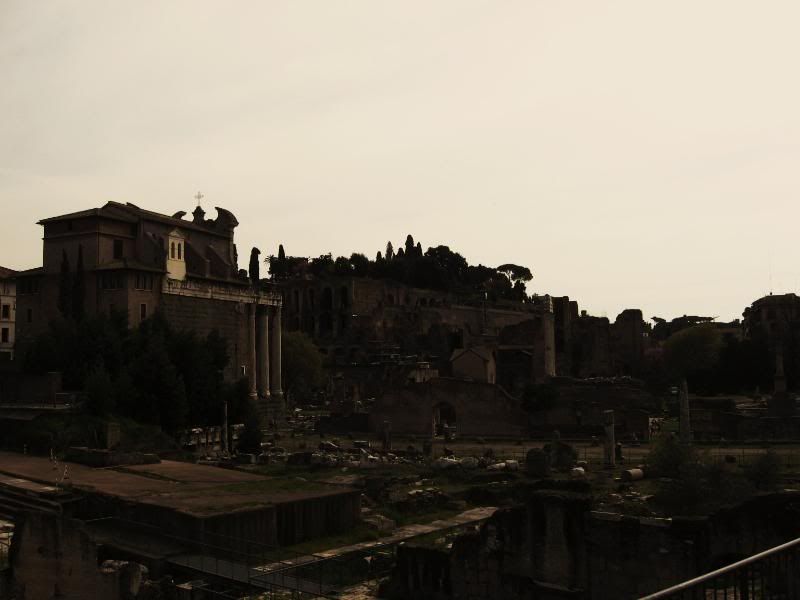
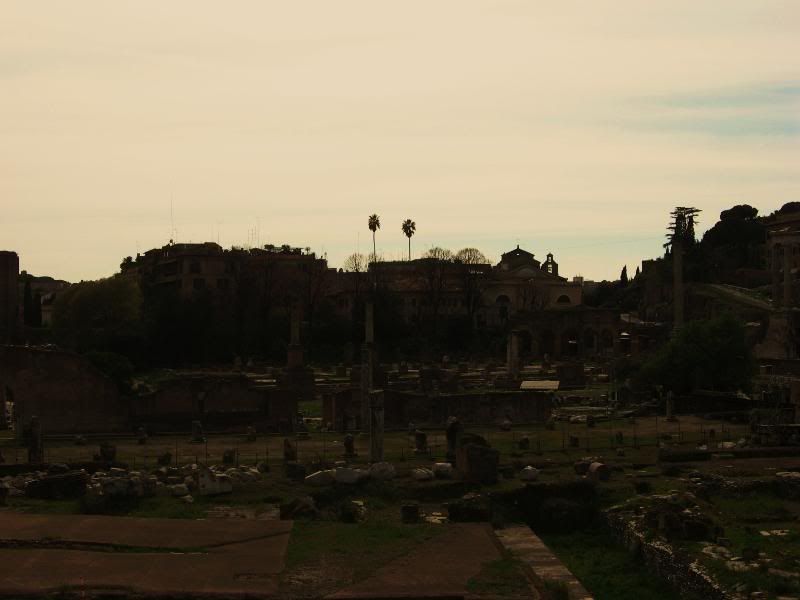
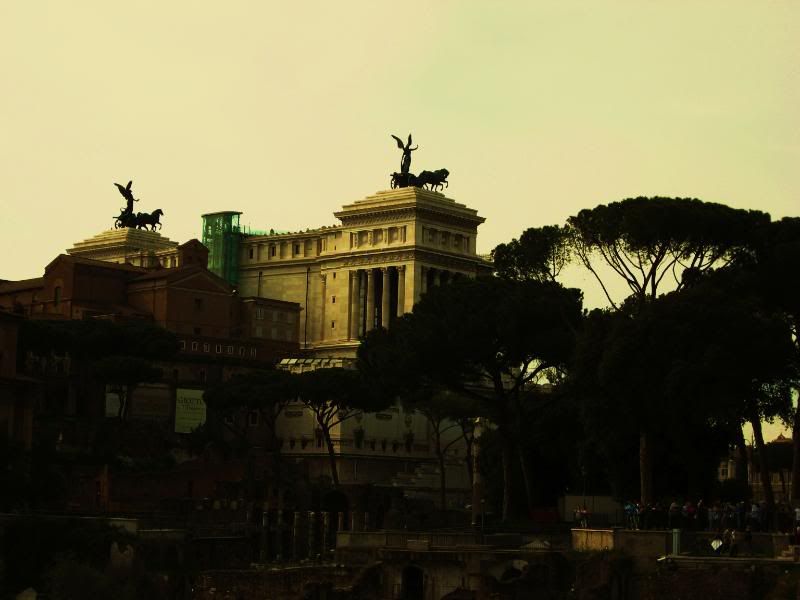
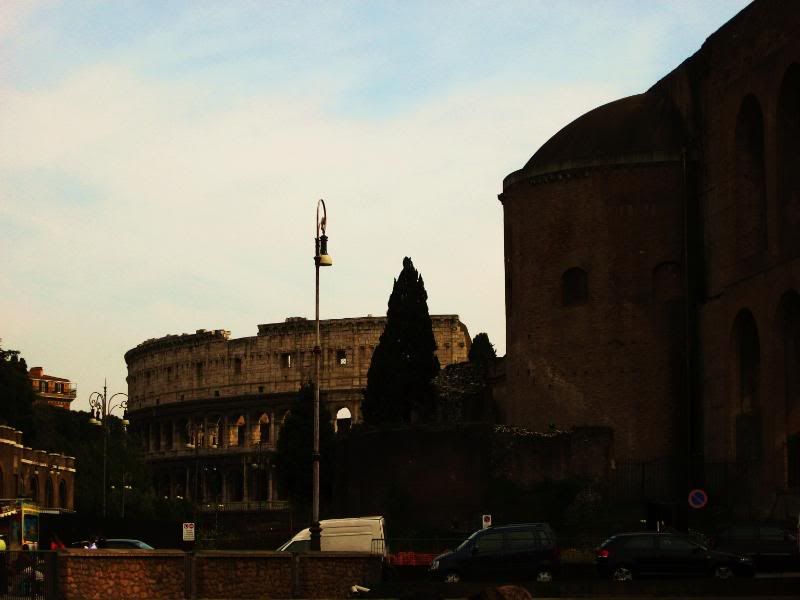


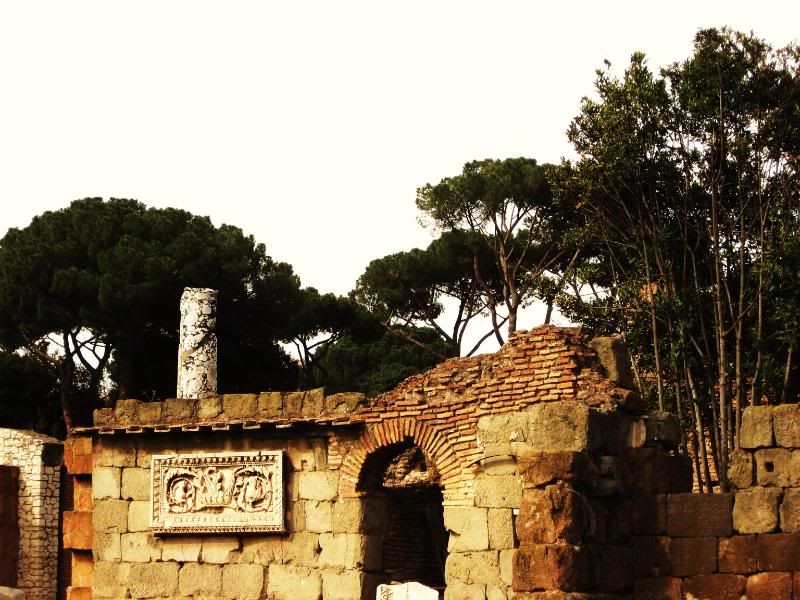

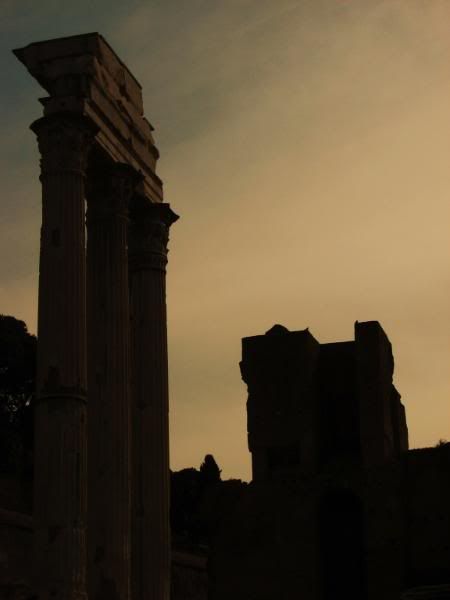

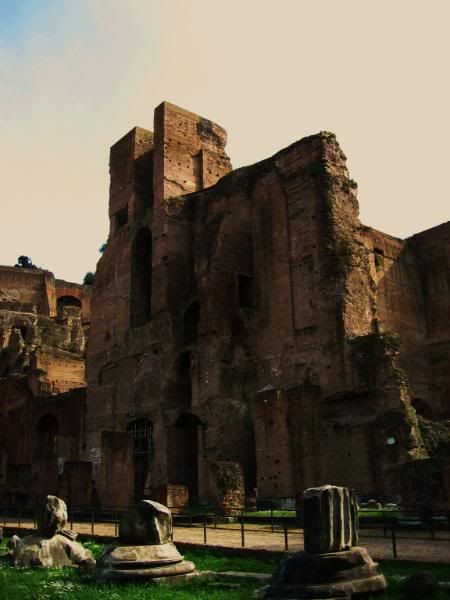
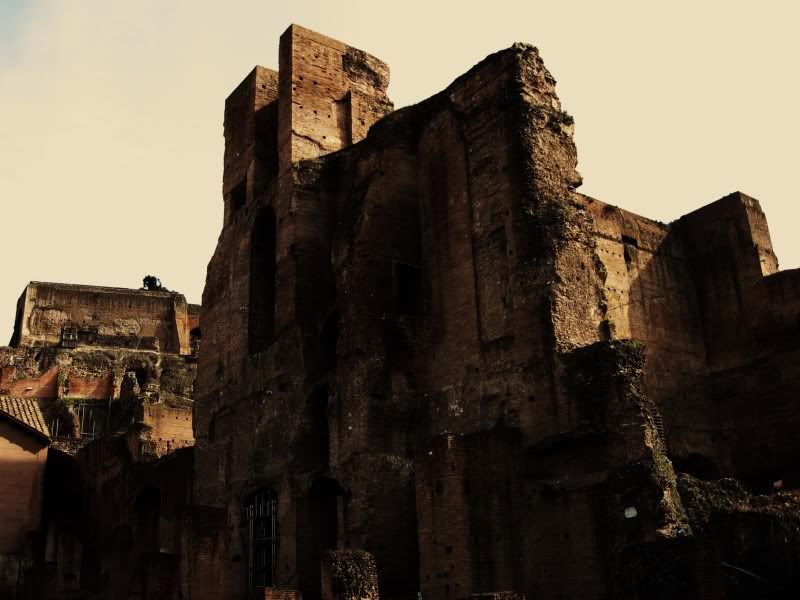
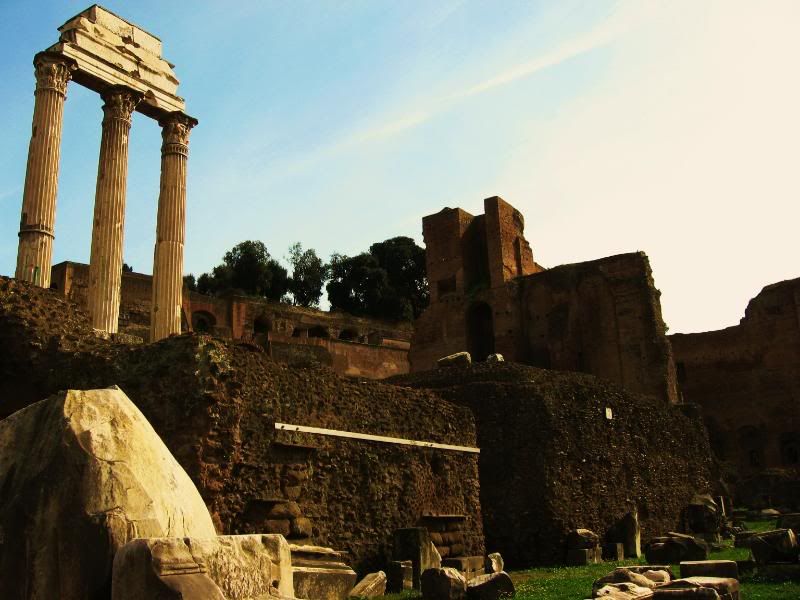
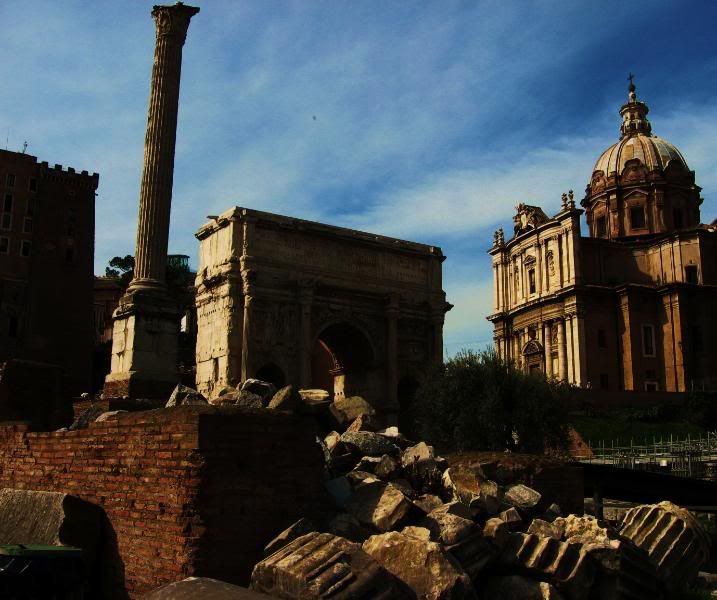
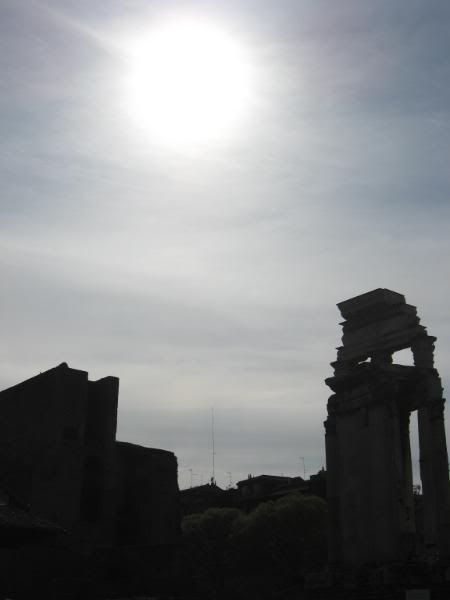
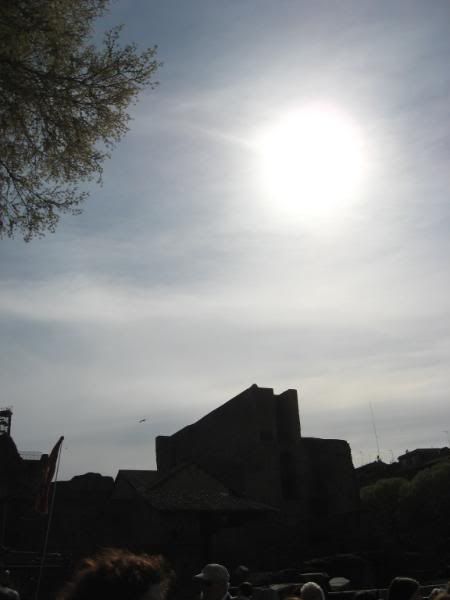
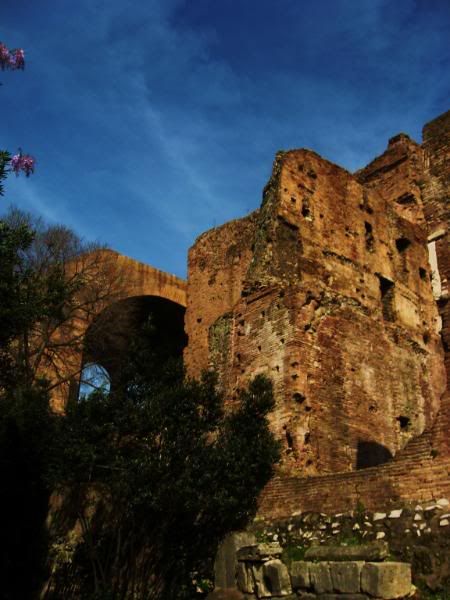
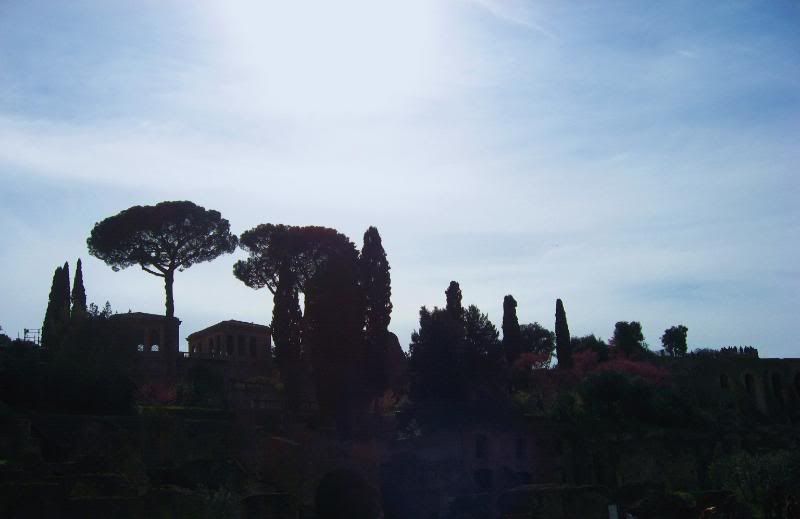
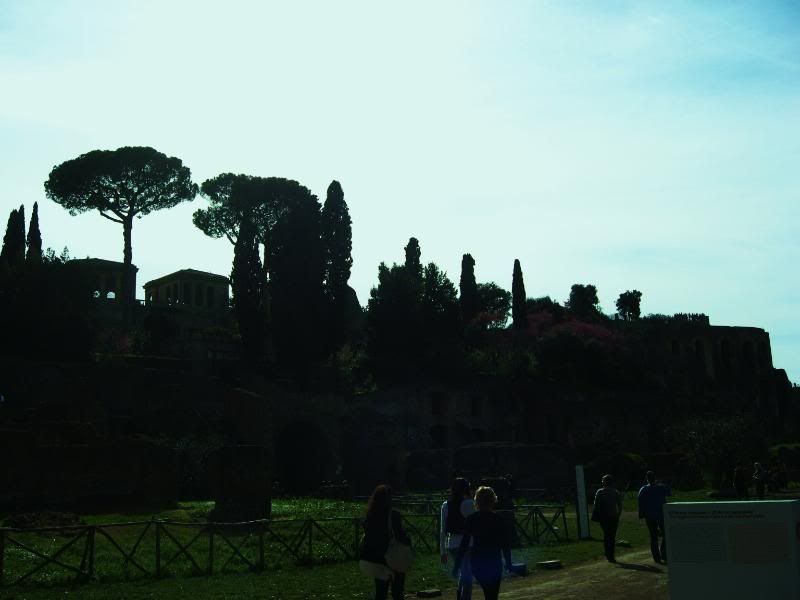
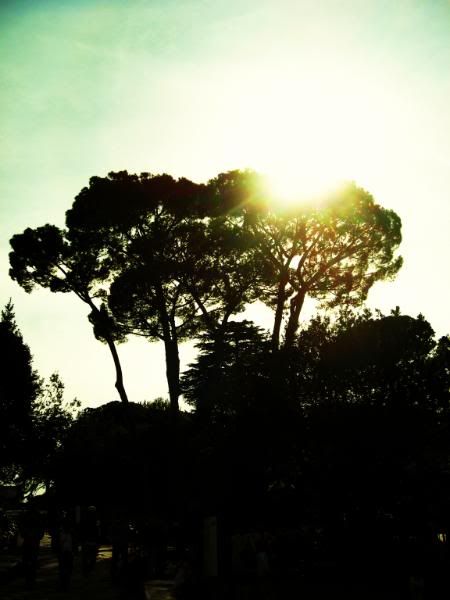
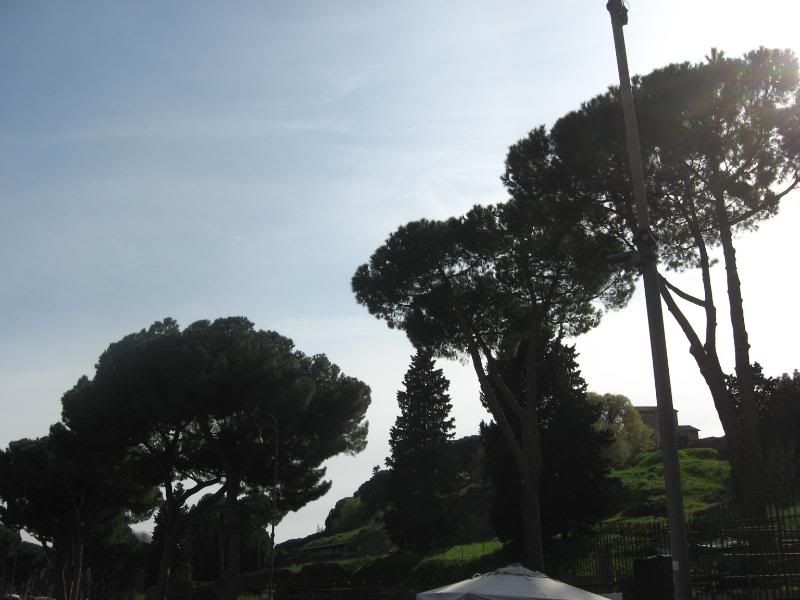 Charlemagne's Arch
Charlemagne's Arch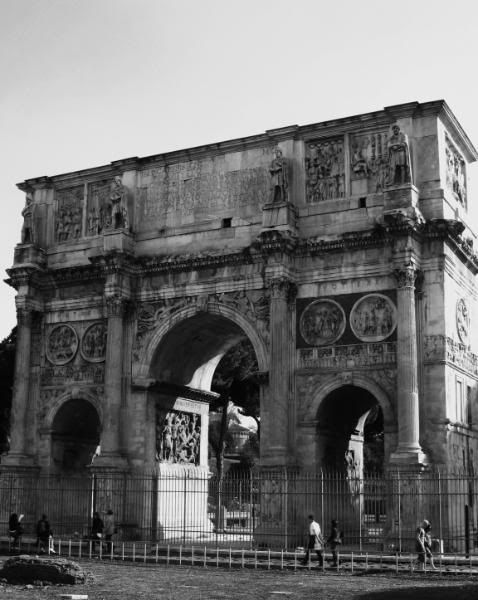

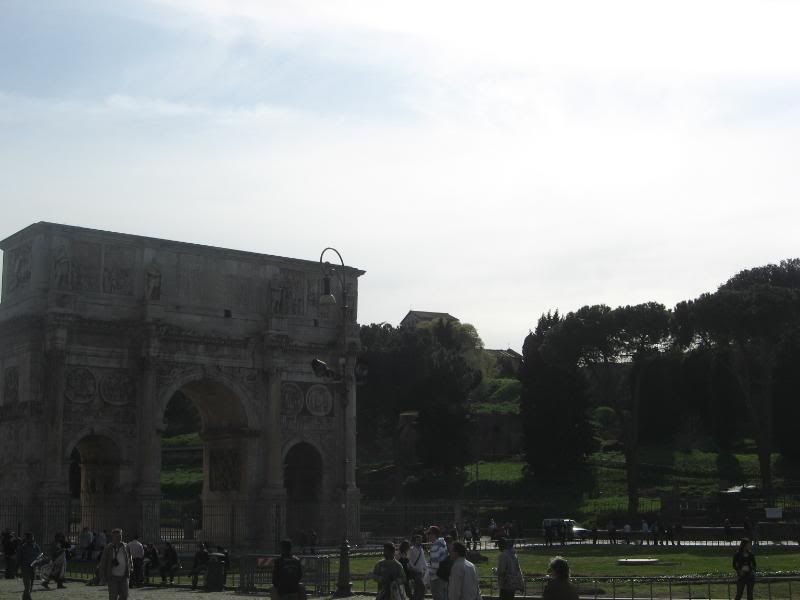 Amphitheatrum Flavium – The Colosseum – Il Colosseo
Amphitheatrum Flavium – The Colosseum – Il ColosseoThe largest amphitheatre ever built by the Romans. A lasting icon of the supreme engineering and architecture skills of the Roman Empire that could seat 50,000 spectators, and has withstood centuries of earthquakes, aside from the south side. Once an amphitheatre where historical reenactments, executions, wild hunts and tales of the gods were told – then a shrine for the executed Christians and an occasional squatter's fortress – now an iconic image of Ancient Rome.
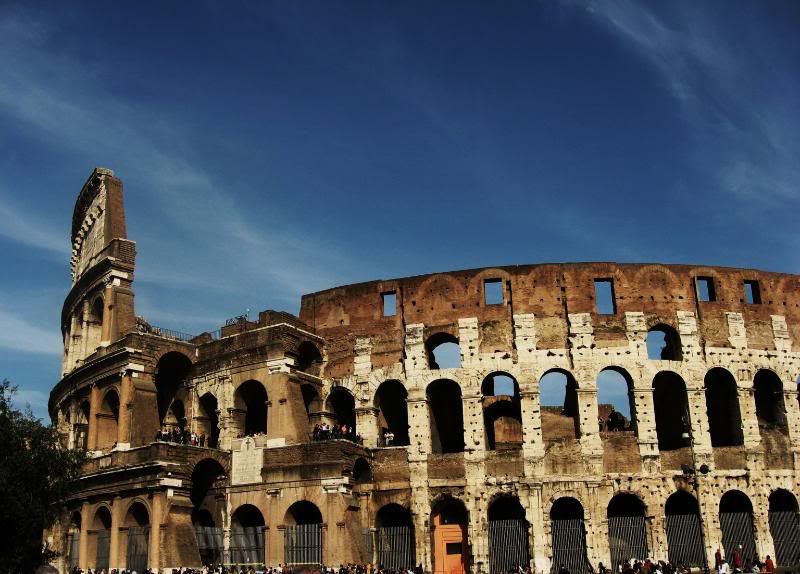
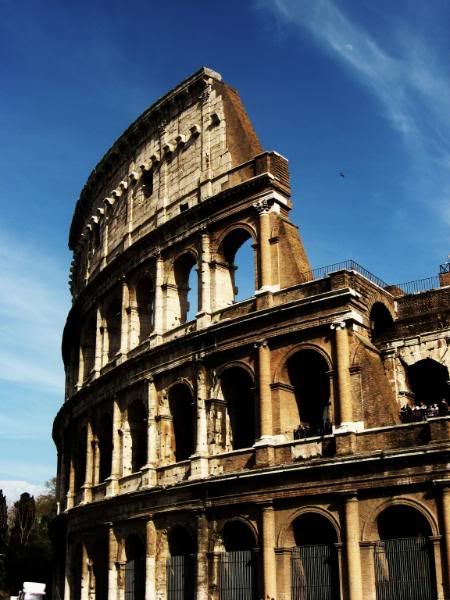
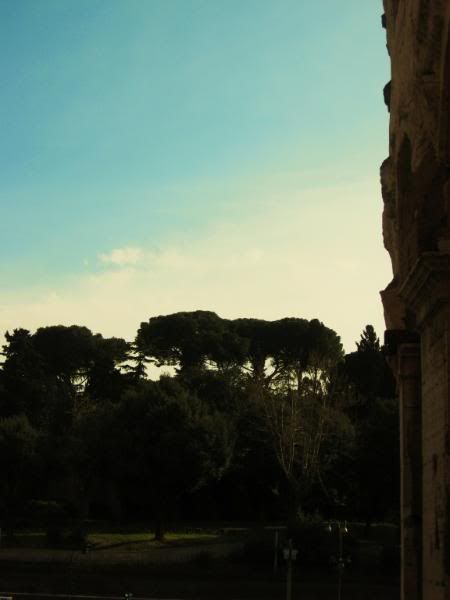
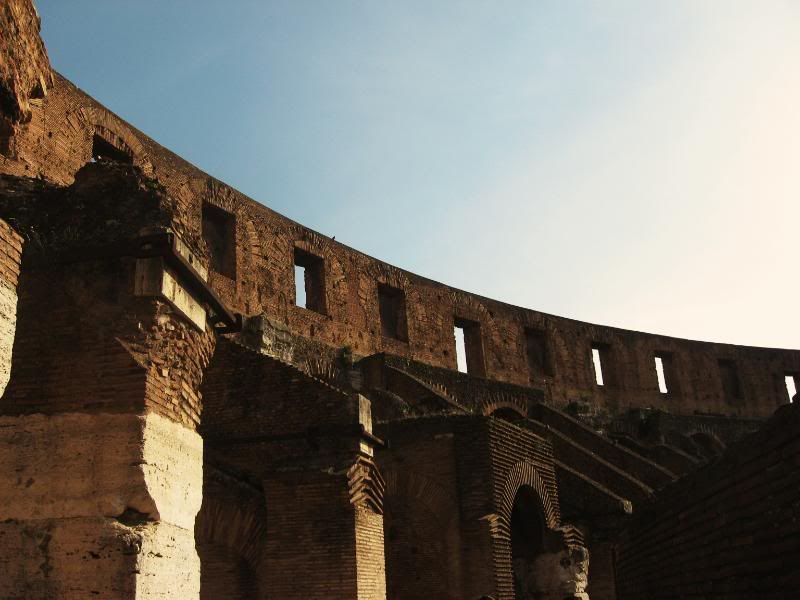
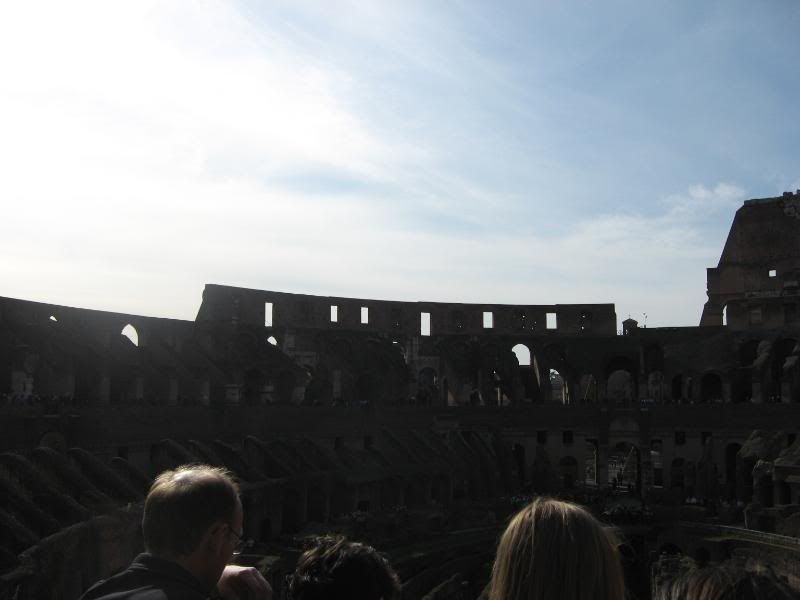
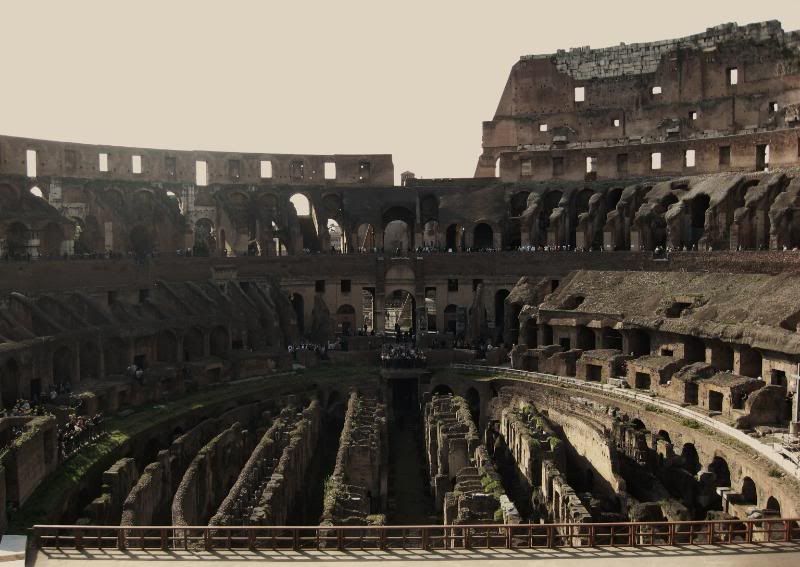
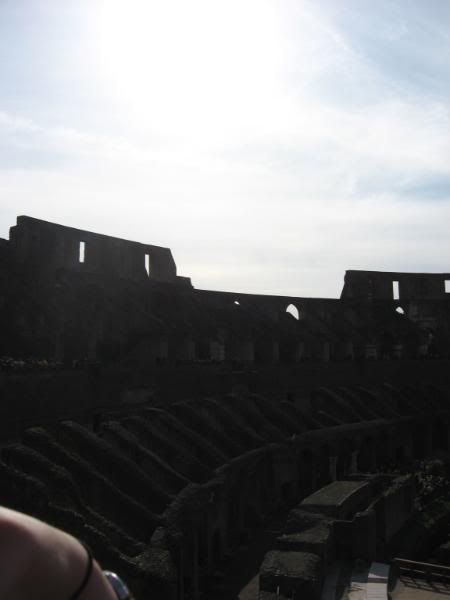
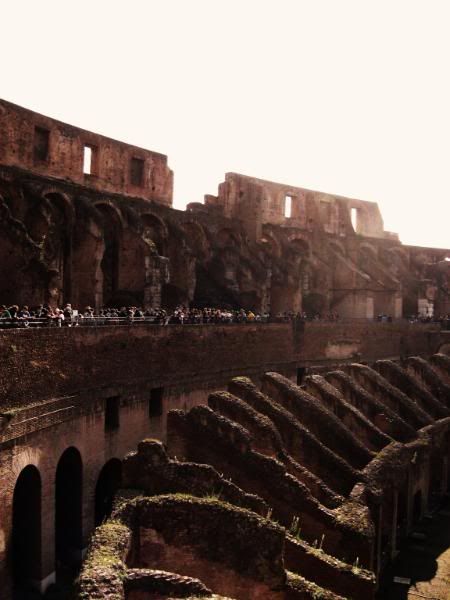
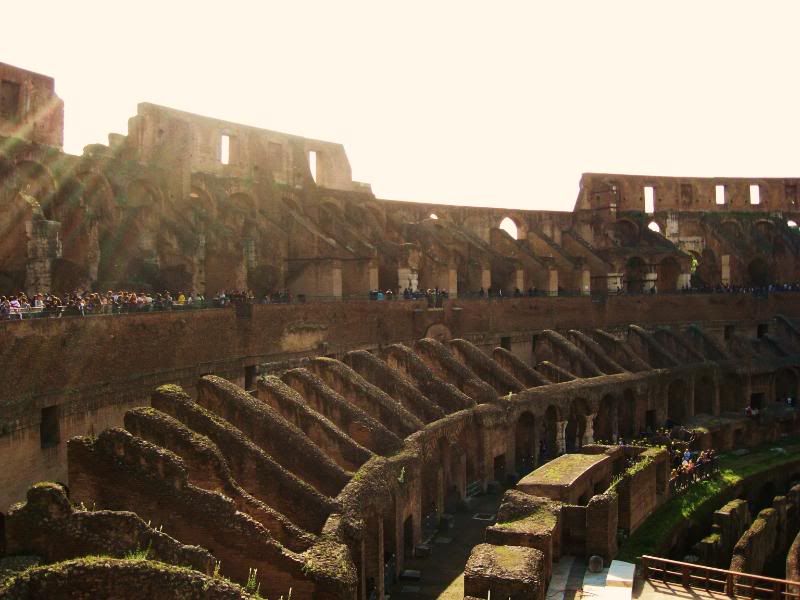
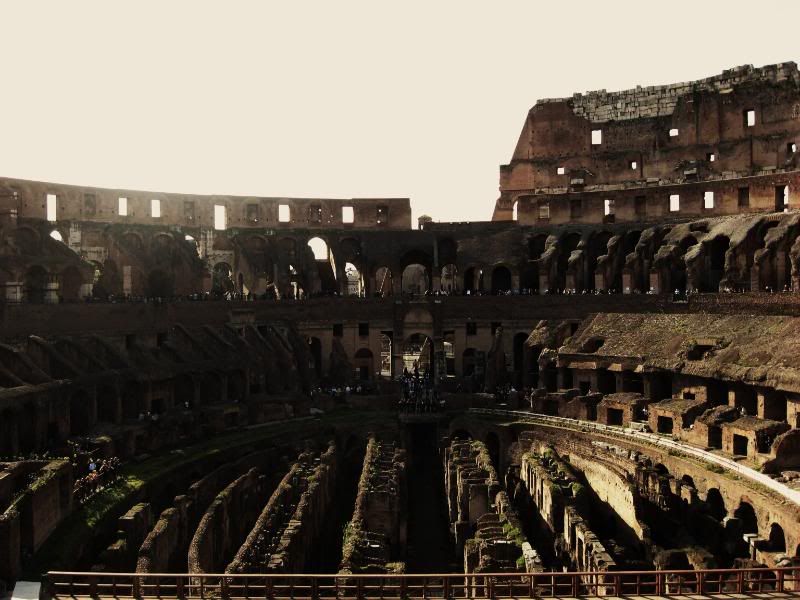 Pollice Verso ("Thumbs Down") by Jean-Léon Gérôme, 1872
Pollice Verso ("Thumbs Down") by Jean-Léon Gérôme, 1872 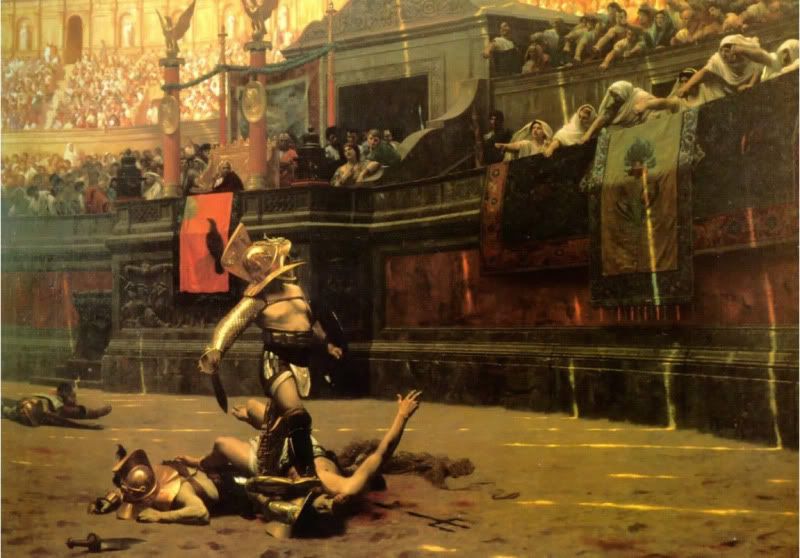 The Christian Martyrs' Last Prayer, by Jean-Léon Gérôme, 1883
The Christian Martyrs' Last Prayer, by Jean-Léon Gérôme, 1883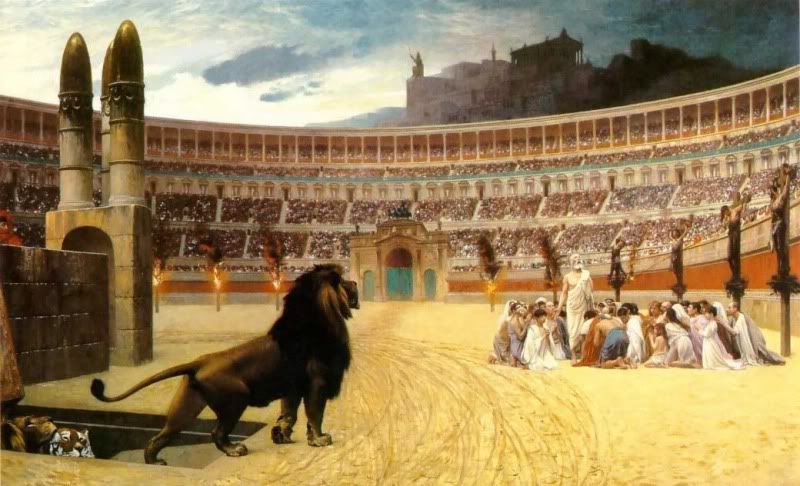
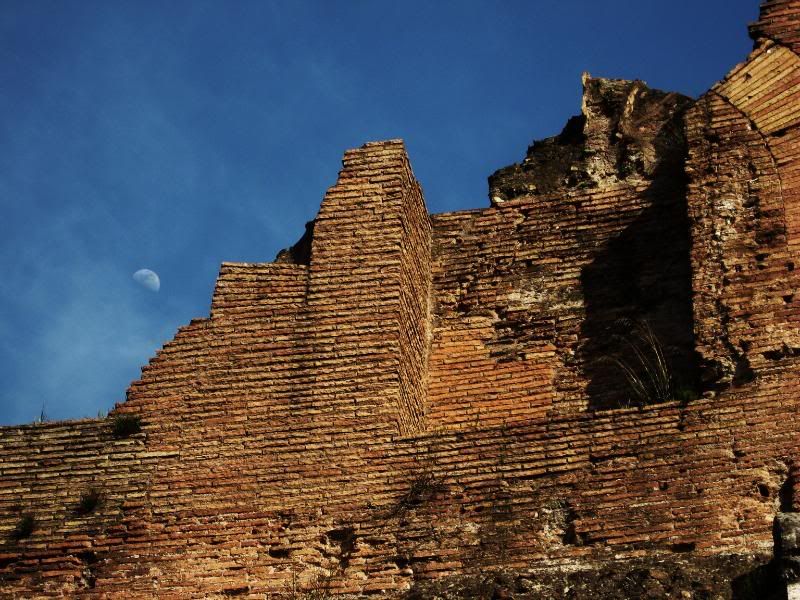
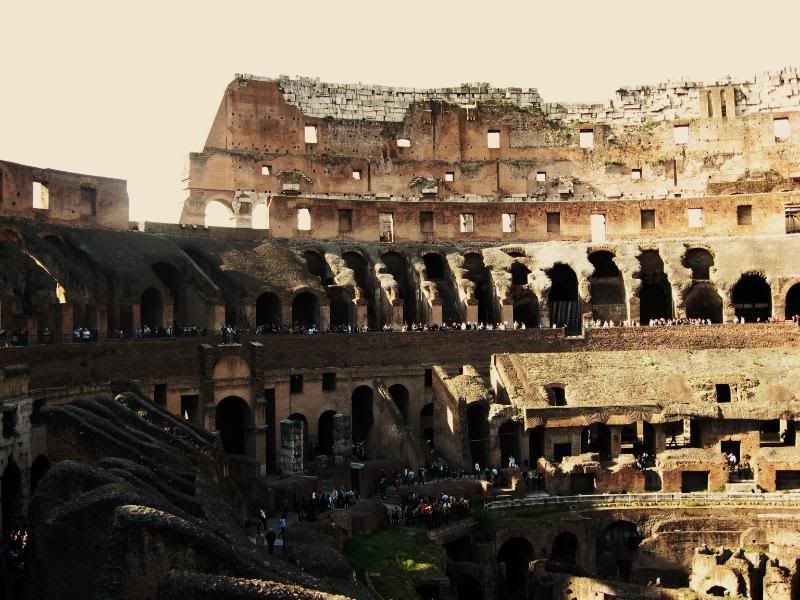
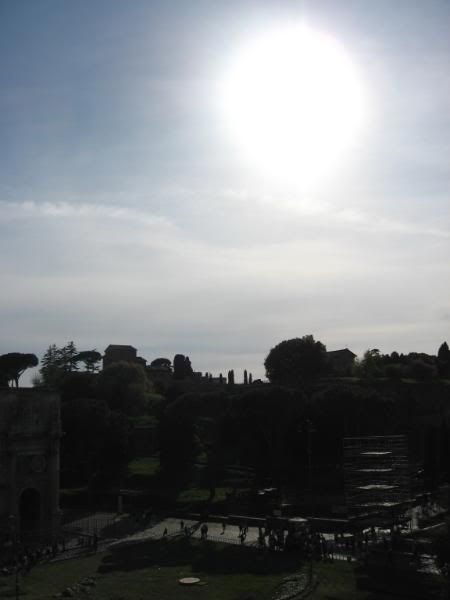
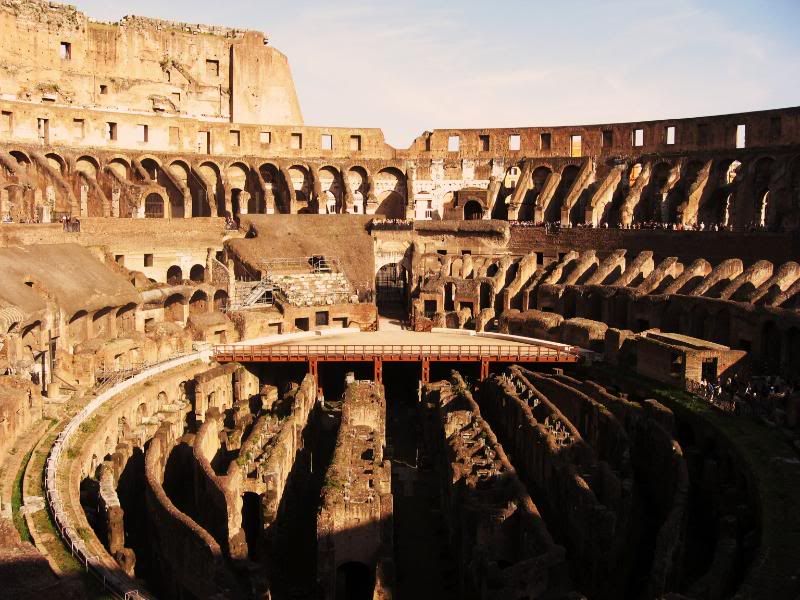


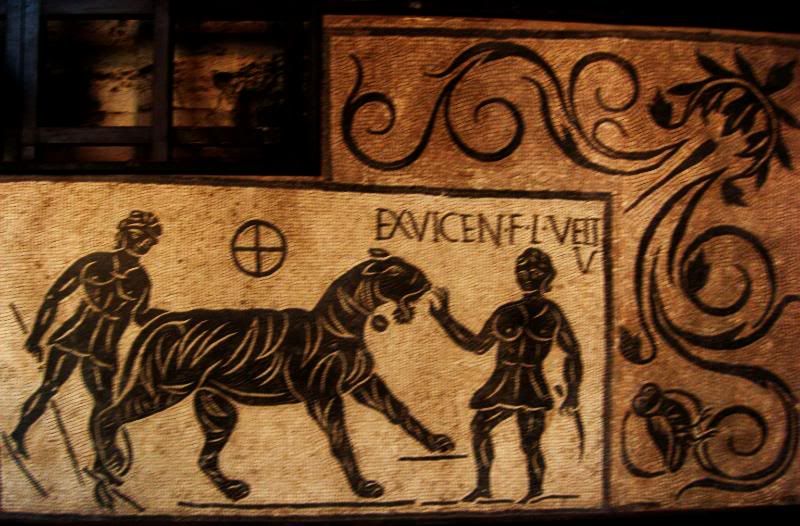
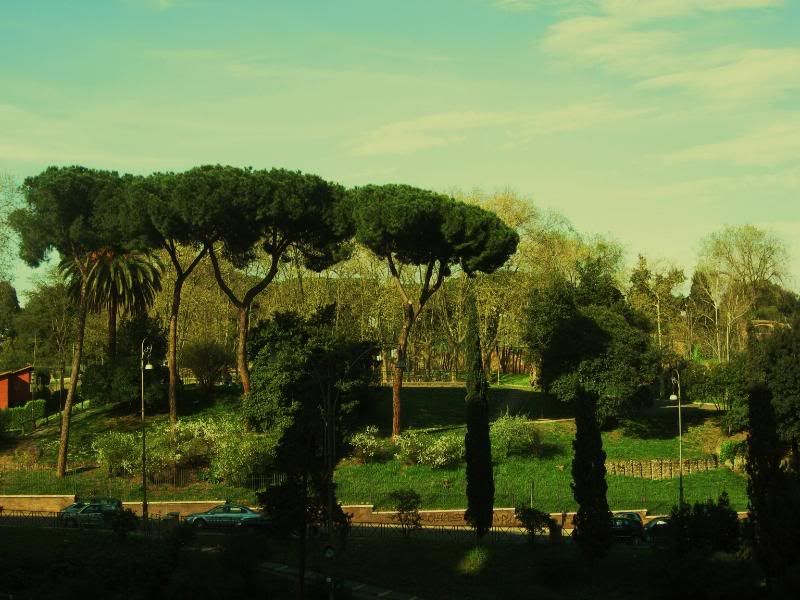
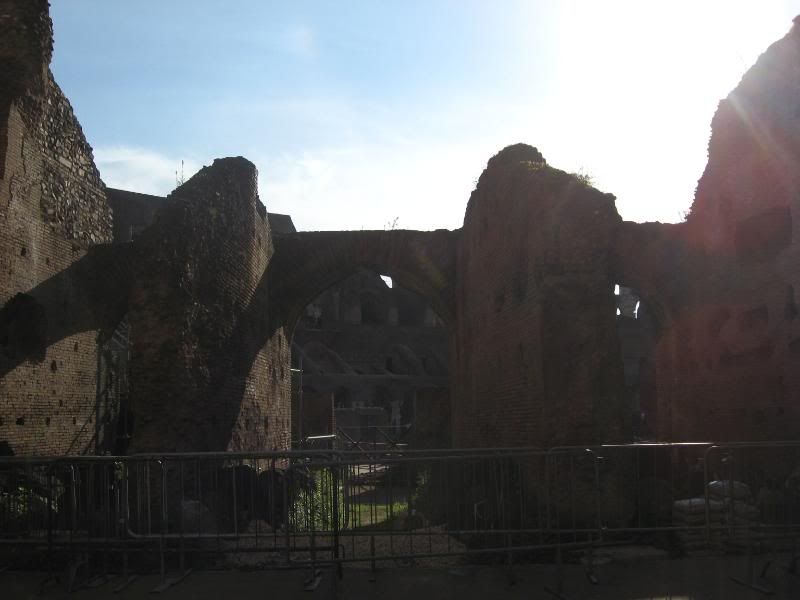

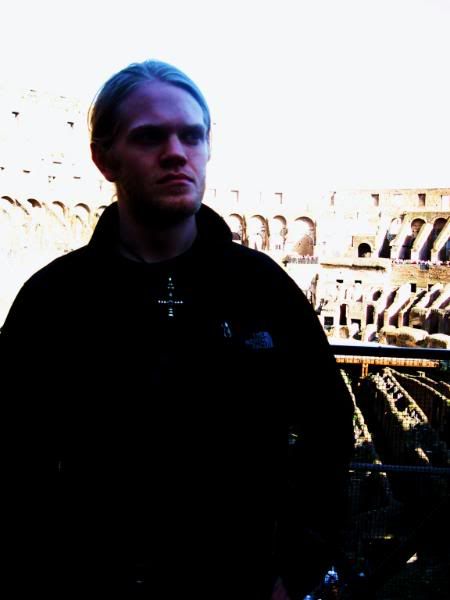 Some random ancient structure in a park, and typical Italian Umbrella Pines
Some random ancient structure in a park, and typical Italian Umbrella Pines